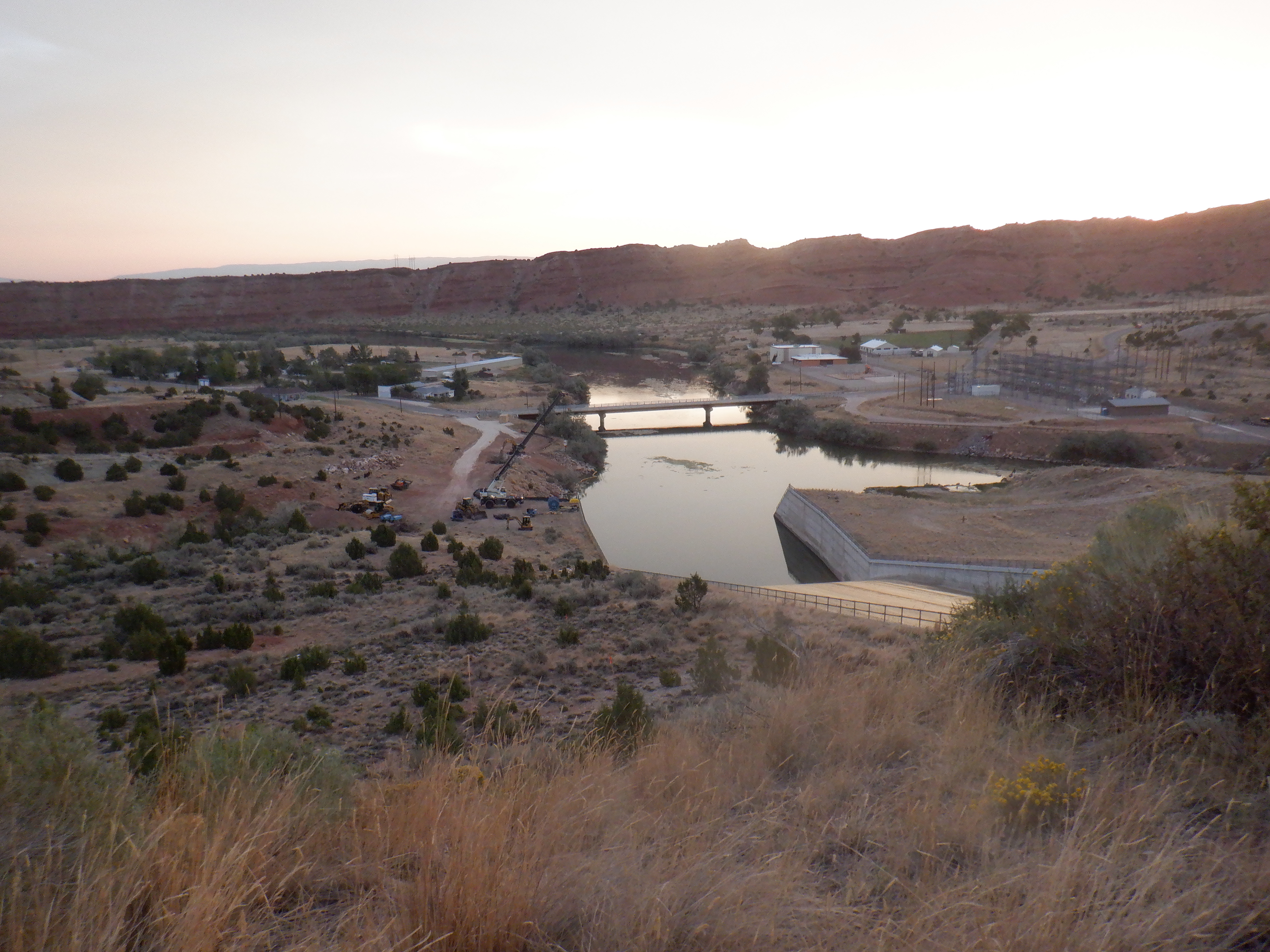
The project site, looking downstream of the North Platte River from Alcova Dam. The 12ft tall by 400ft long single closed end (SCE) AquaDam will be placed right after the outlet of Alcova Dam’s overflow outlet.
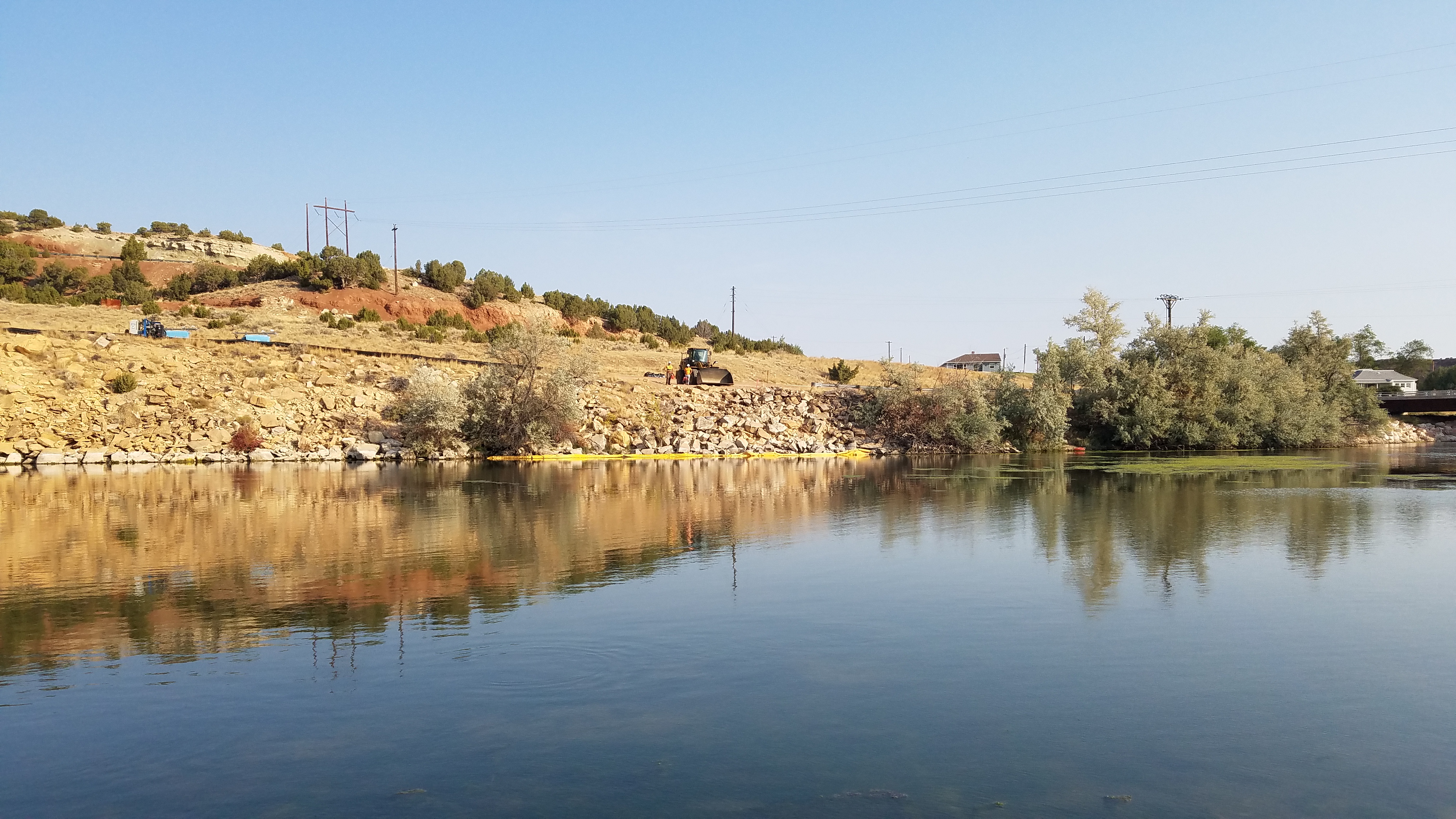
A photo of where the starting bank will be. The starting and end banks must be cleared of any obstructions such as large rocks, trees, brush, and sharp material, prior to the installation.
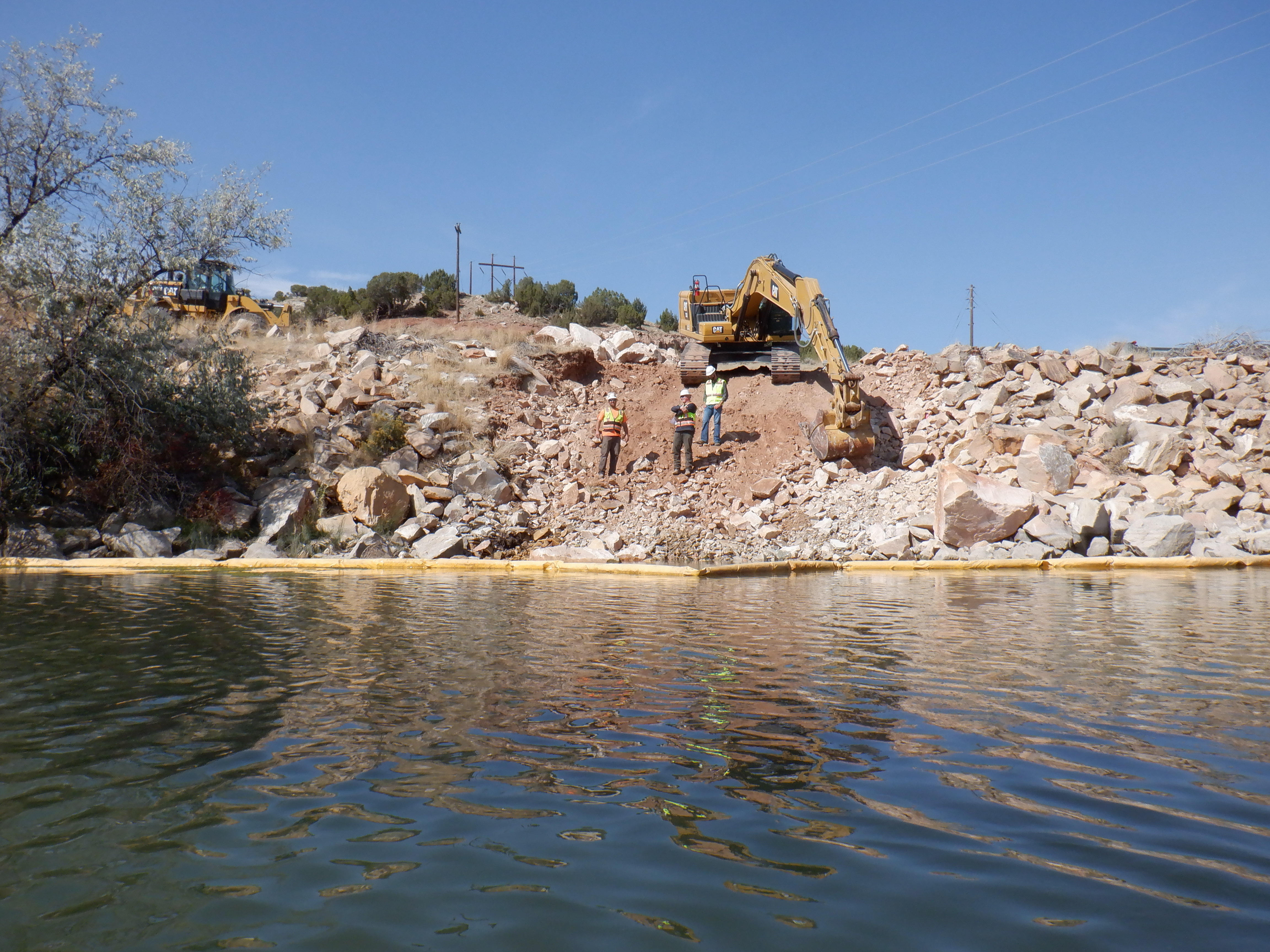
Workers pick rocks and other obstructions, in the path where the AquaDam will be placed, that may disrupt the ability for the AquaDam to make a good seal.
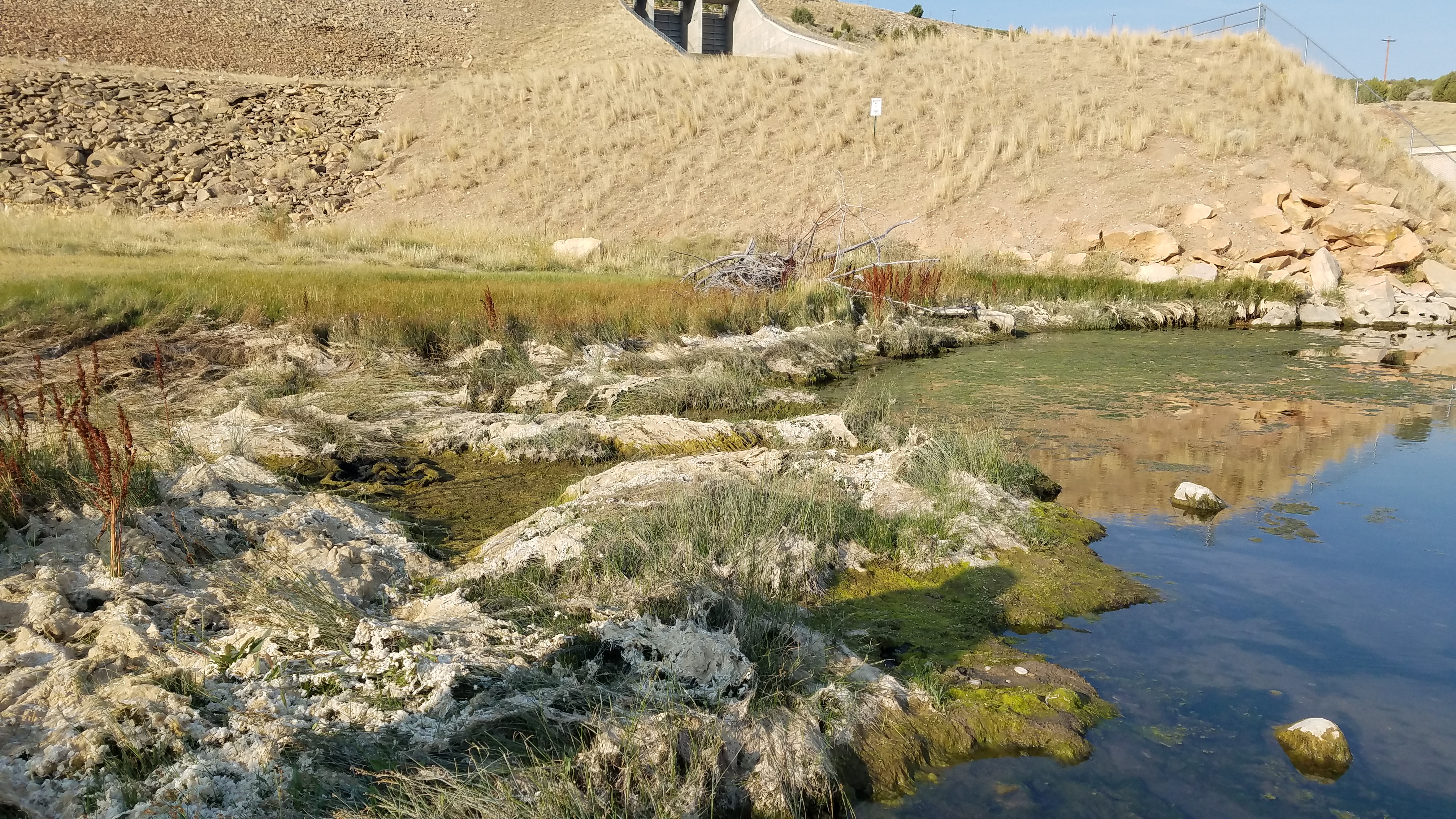
The ending bank, where the 400ft long AquaDam will unroll to. This bank has some rocks that will be picked as well.
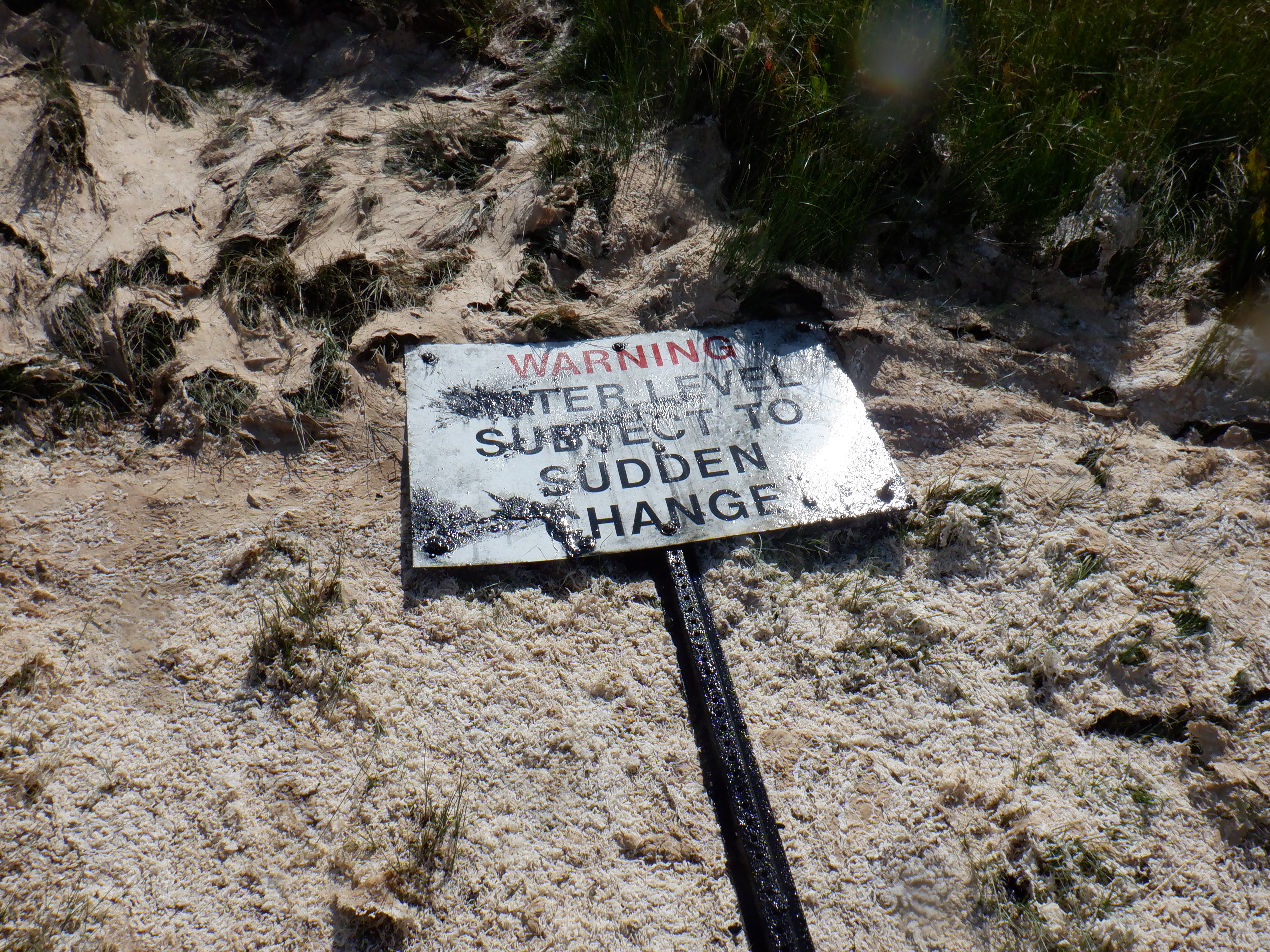
The ending bank, where the 400ft long AquaDam will unroll to. This bank has some rocks that will be picked as well.
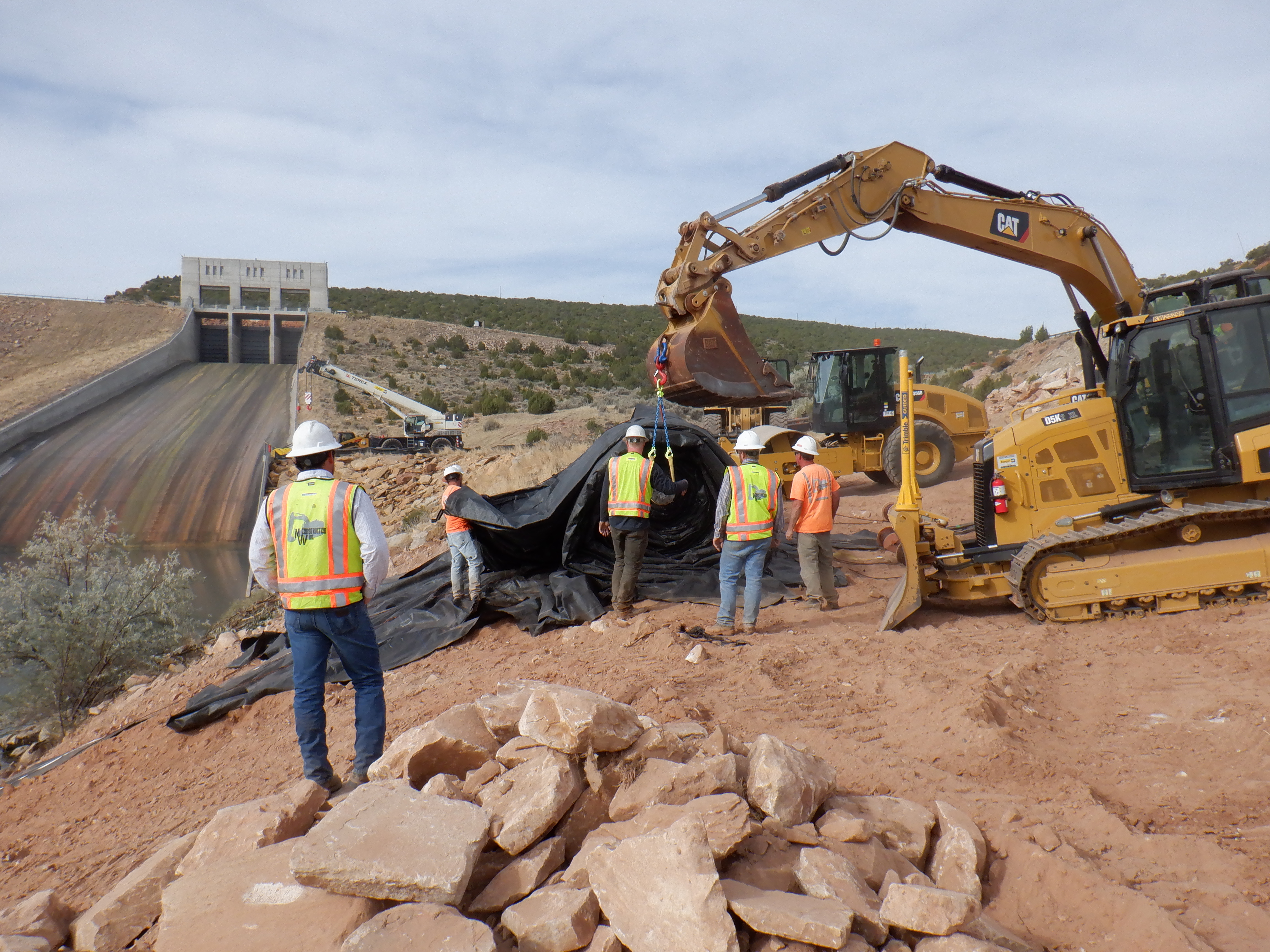
The 12ft tall SCE AquaDam has been placed at the starting bank. When placing the dam, it is important to pay attention to the direction that the unit will unroll, noted with arrow on the outer protective wrapping.
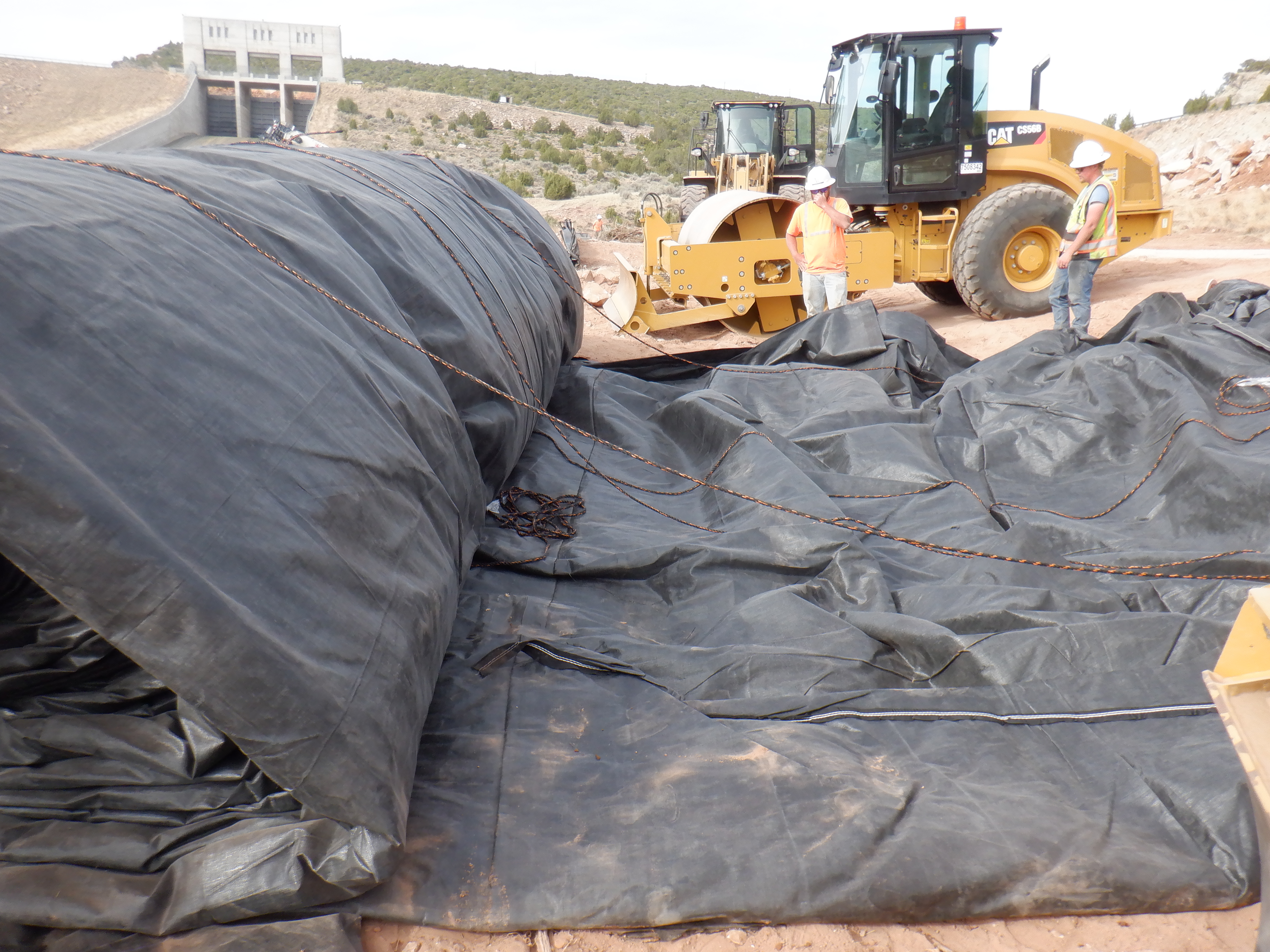
The starting point (open end) and fill-tubes of the SCE AquaDam are to the right, of this photo. The open end should be secured to anchors and laid out flat on top of the starting bank.
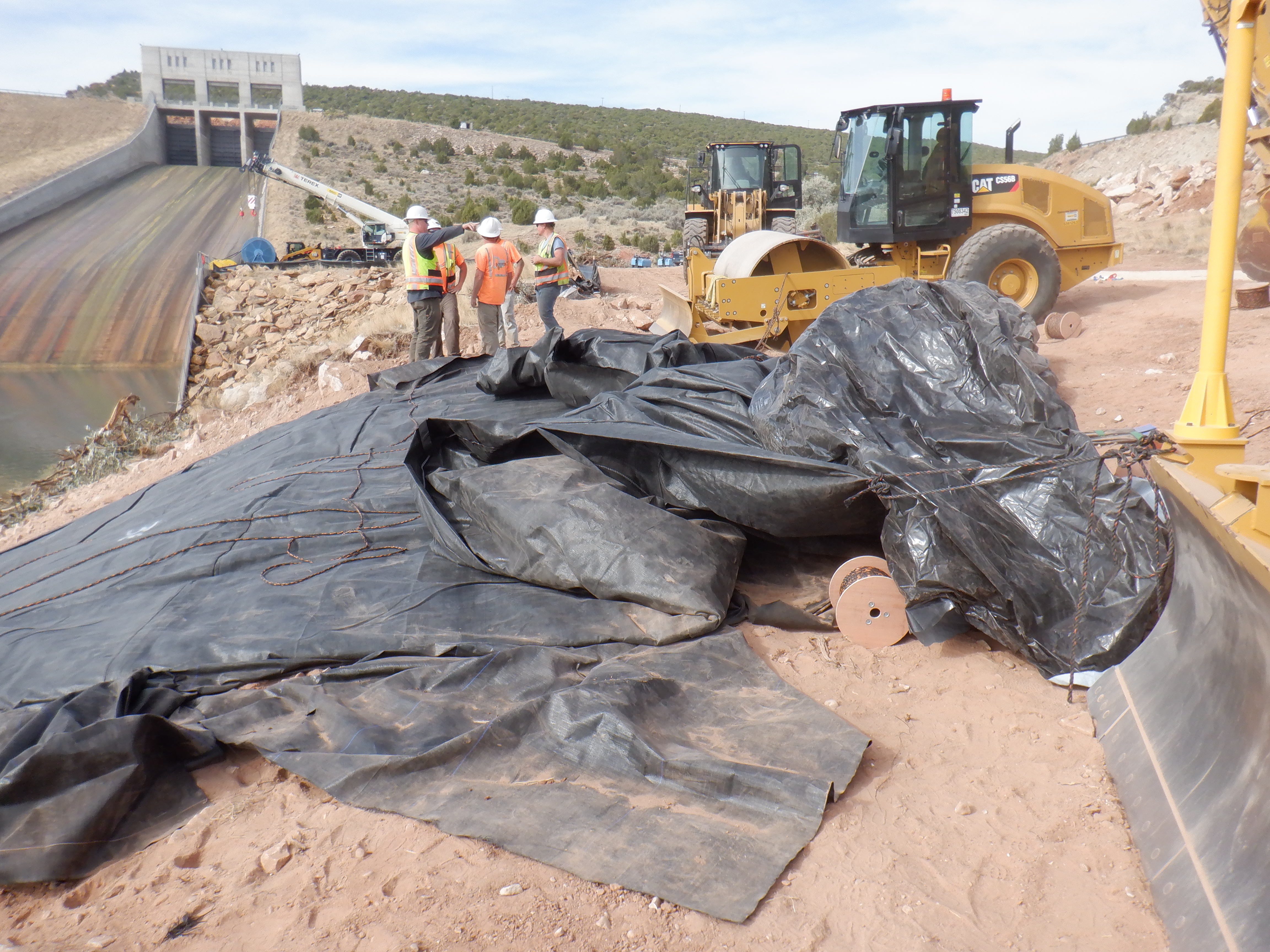
The open end of the SCE AquaDam has been secured with ropes to CAT equipment and the fill-tubes have been prepared for the discharge hoses for filling.
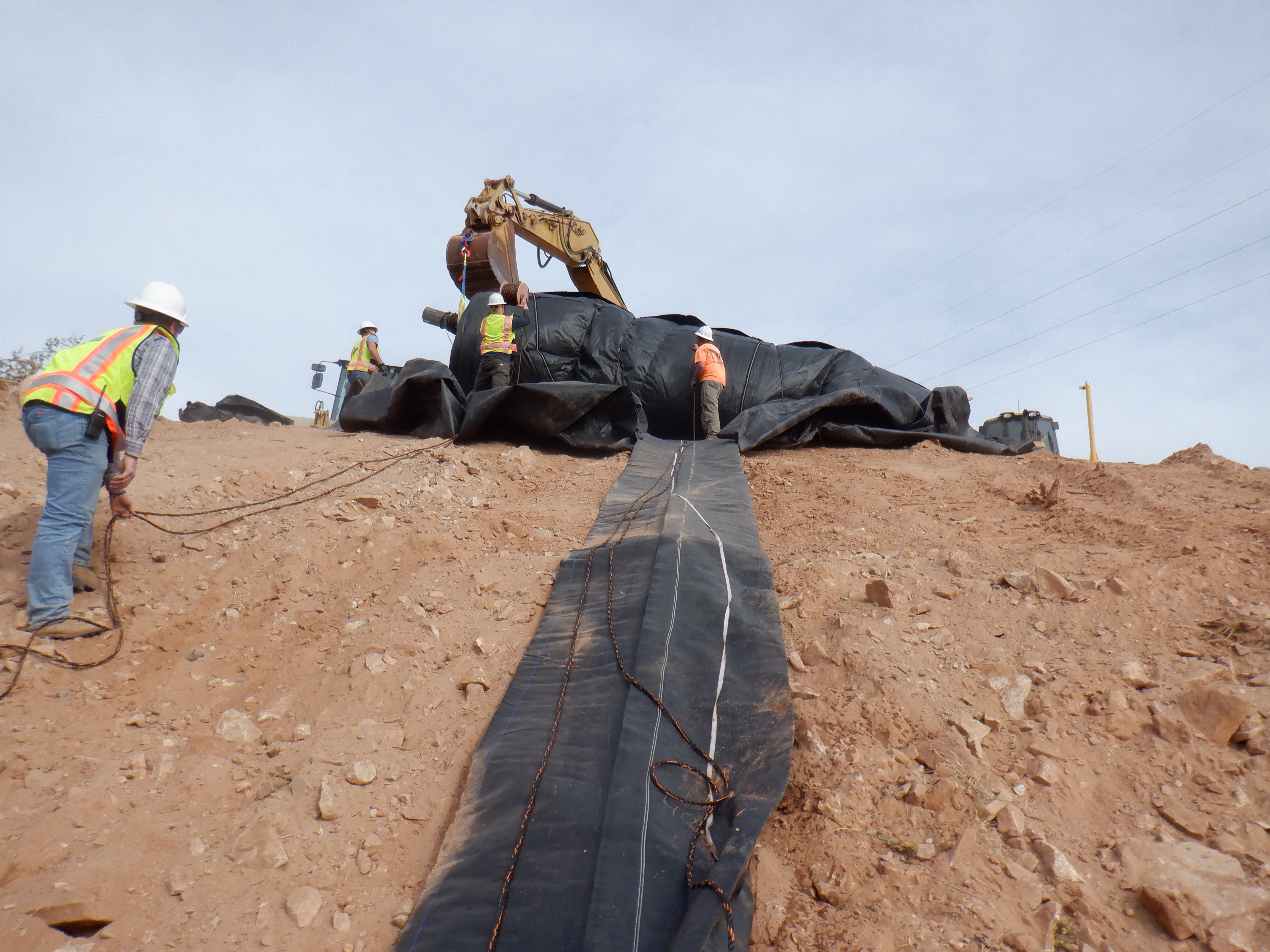
An 18-inch-tall SCE AquaDam was laid beneath the 12ft tall AquaDam. This smaller unit was longer in length than the larger dam and was not filled until after the 12ft tall AquaDam was installed and fully filled.
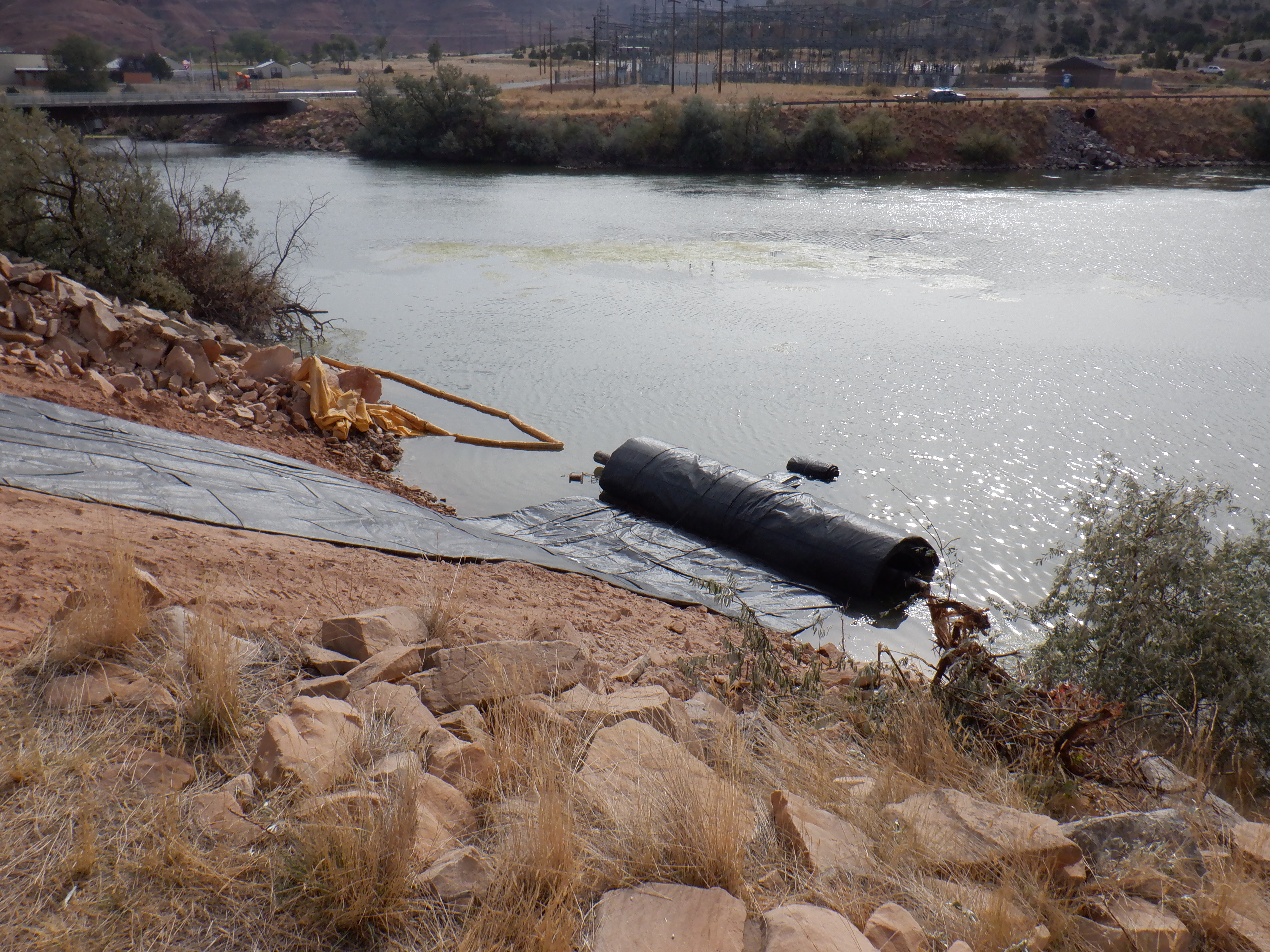
The 12ft tall SCE AquaDam has been launched straight down the starting into the water. Prior to launching, ropes were secured to anchors (CAT equipment), laid under the dam, and pulled back around the top of the roll; so that the rolled-up section of the AquaDam could be controlled as the unit fills with water.
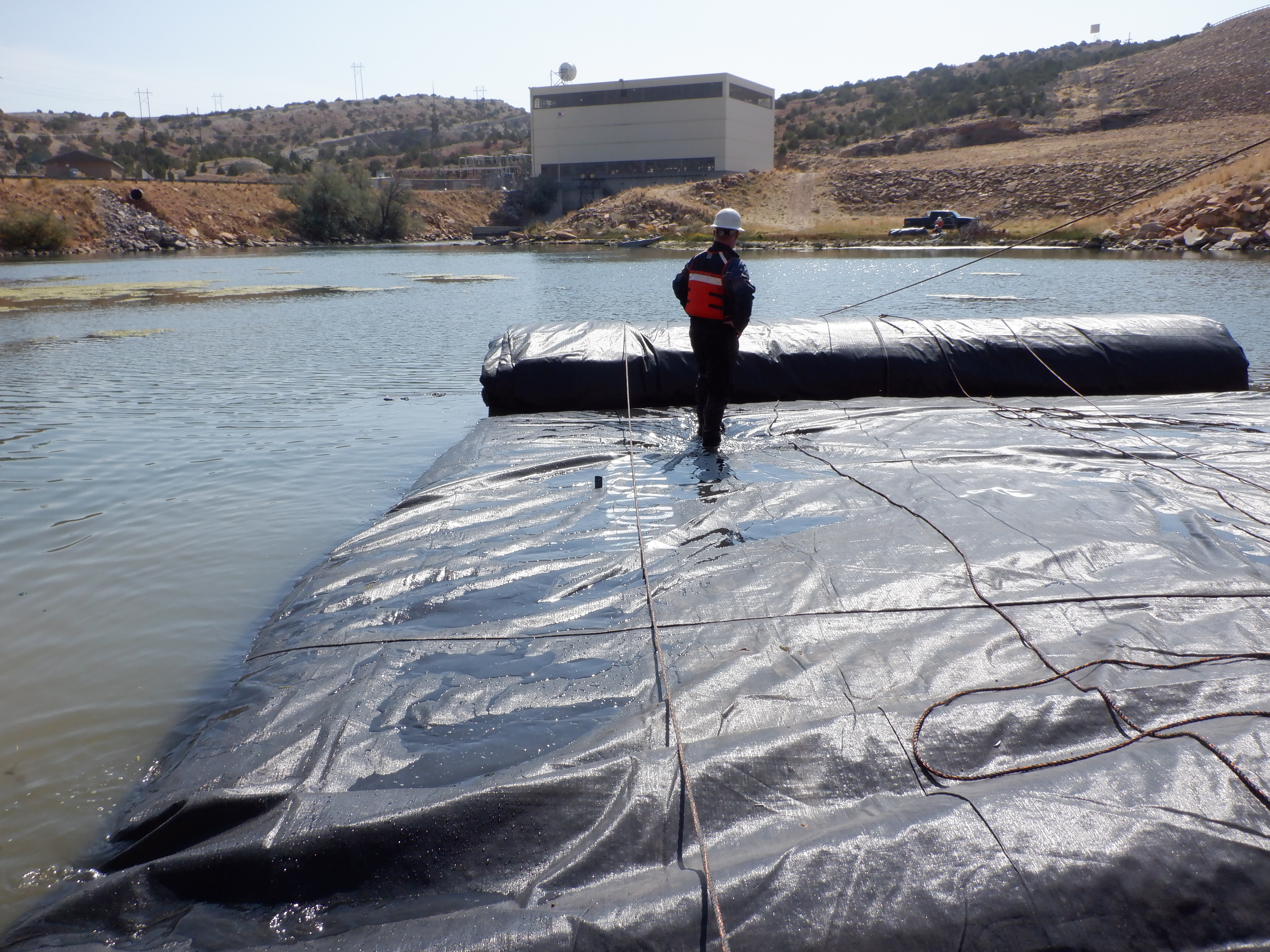
The ropes used to control the AquaDam allow the unit to build head above the surrounding water as it slowly fills and unrolls. This AquaDam has enough head for a worker to stand on it.
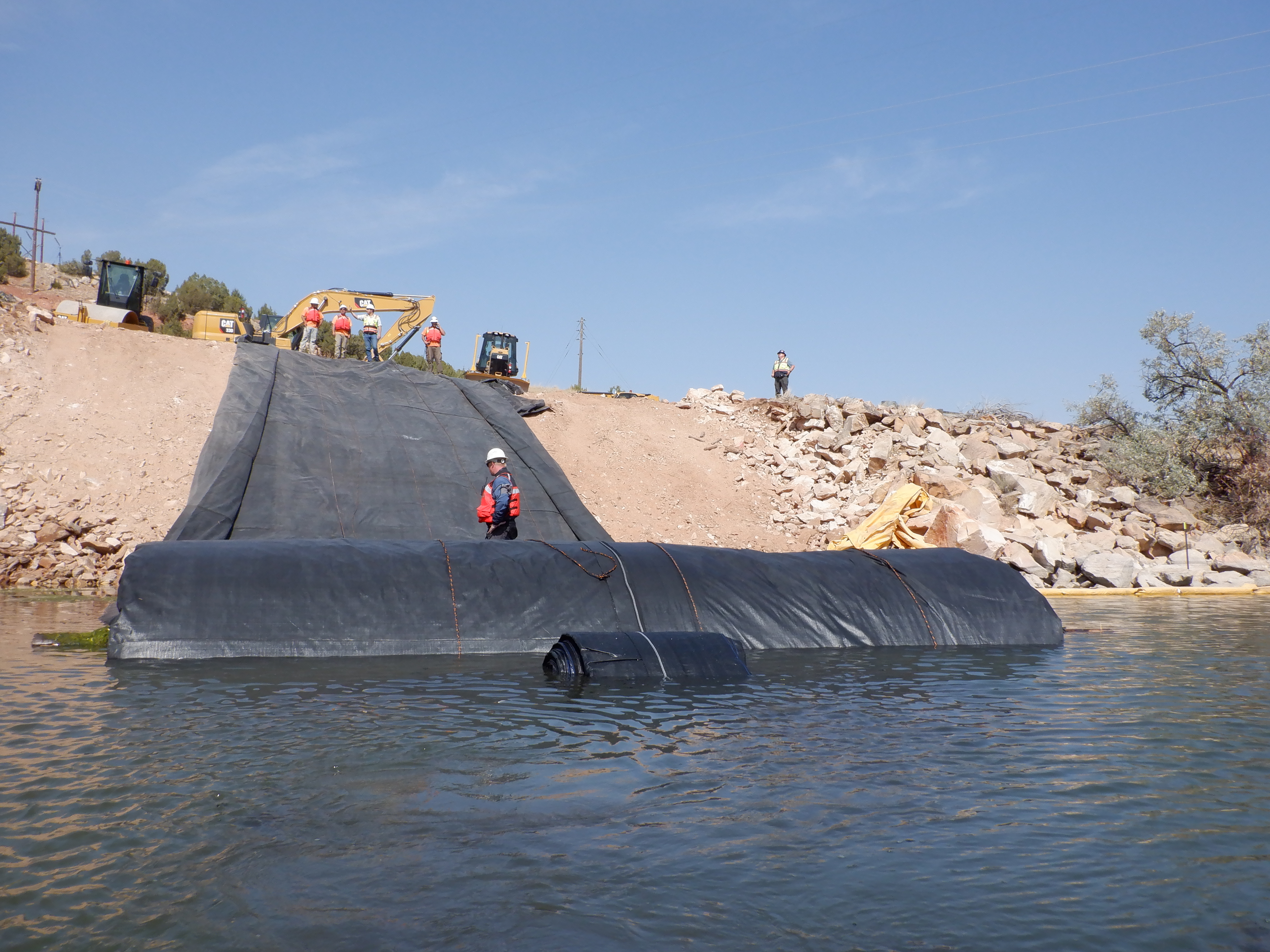
A photo from the water looking at the roll end of the 12ft tall SCE AquaDam. We can see the ropes used to control the roll from shore. Looks like three of the ropes go under, over, and around; while a fourth rope is tied to the bottom seam of the roll, that knot will end up underneath the dam.
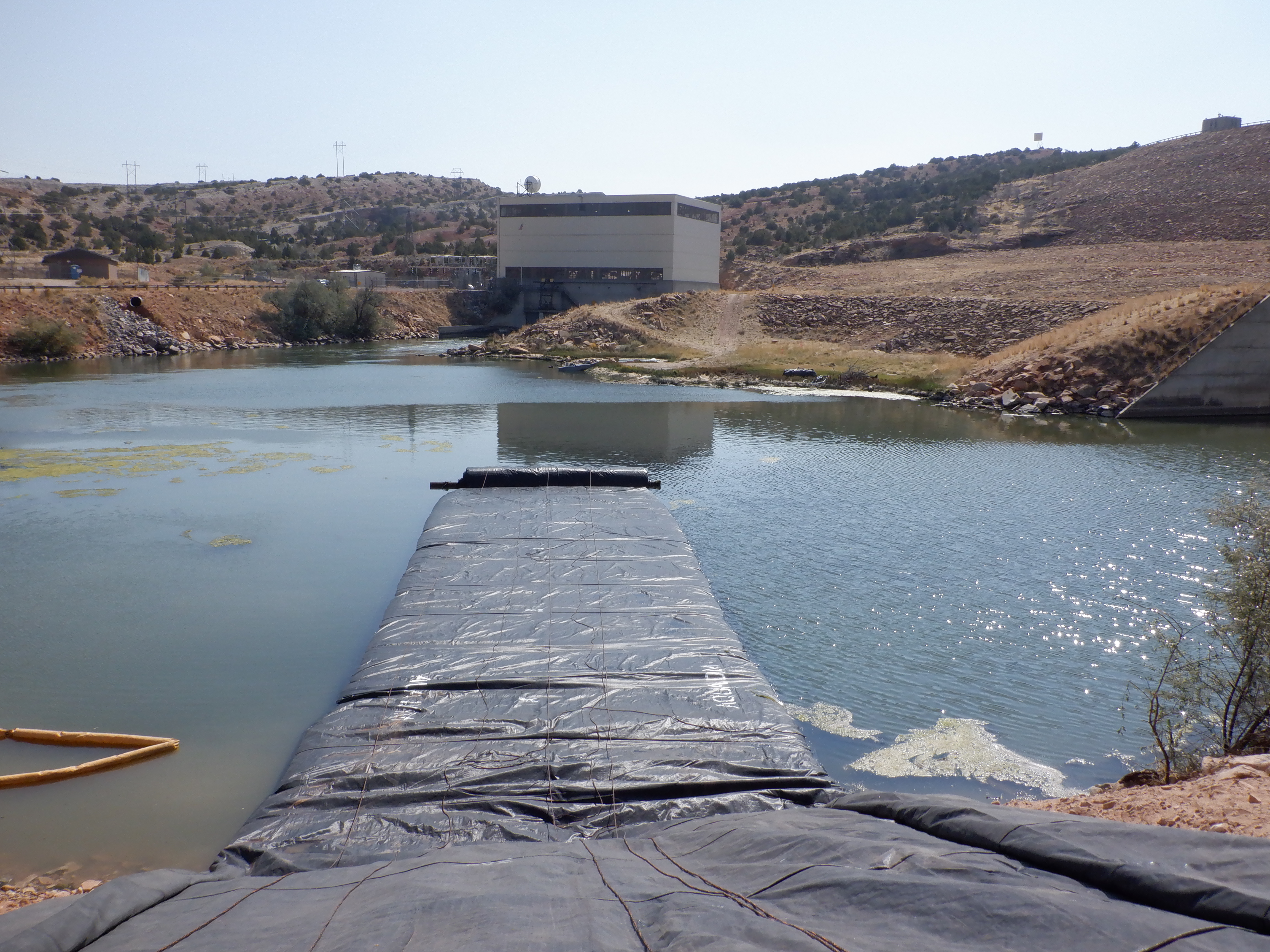
The 12ft tall SCE AquaDam continues to fill. Pumping power will determine the time it takes to fill an AquaDam. An equal number of pumps works best.
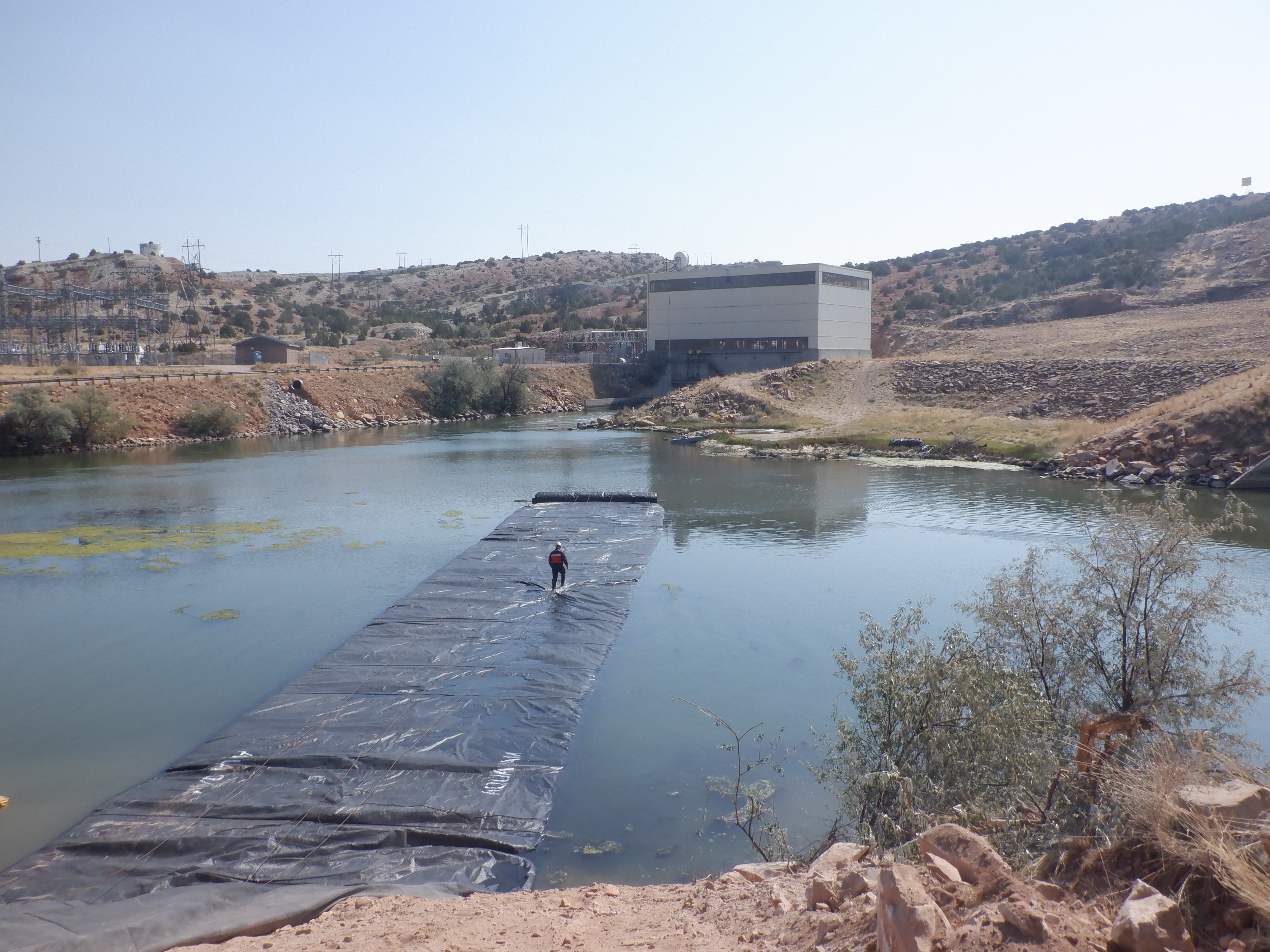
The AquaDam has almost made it to the ending bank. A worker is walking out to the roll end because a turn will need to be made soon. The end of an AquaDam (just like the start) needs to go straight up its ending bank, rolling contours may cause the unit to lean towards deeper holes.
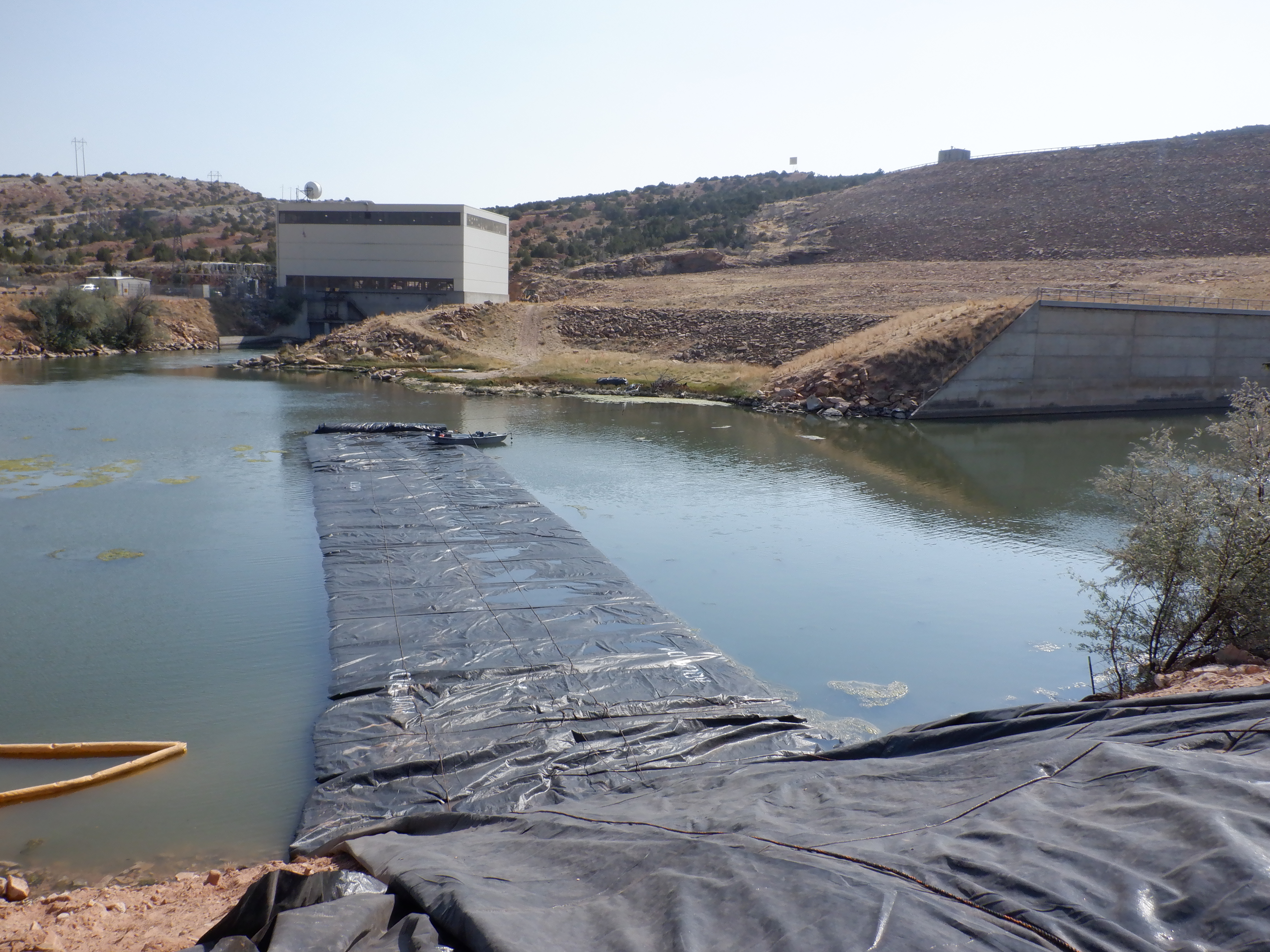
The ropes have been adjusted at the roll end, to make the turn needed to encroach the ending bank. Sometimes long lengths of rope will be needed to get a better angle to pull from.
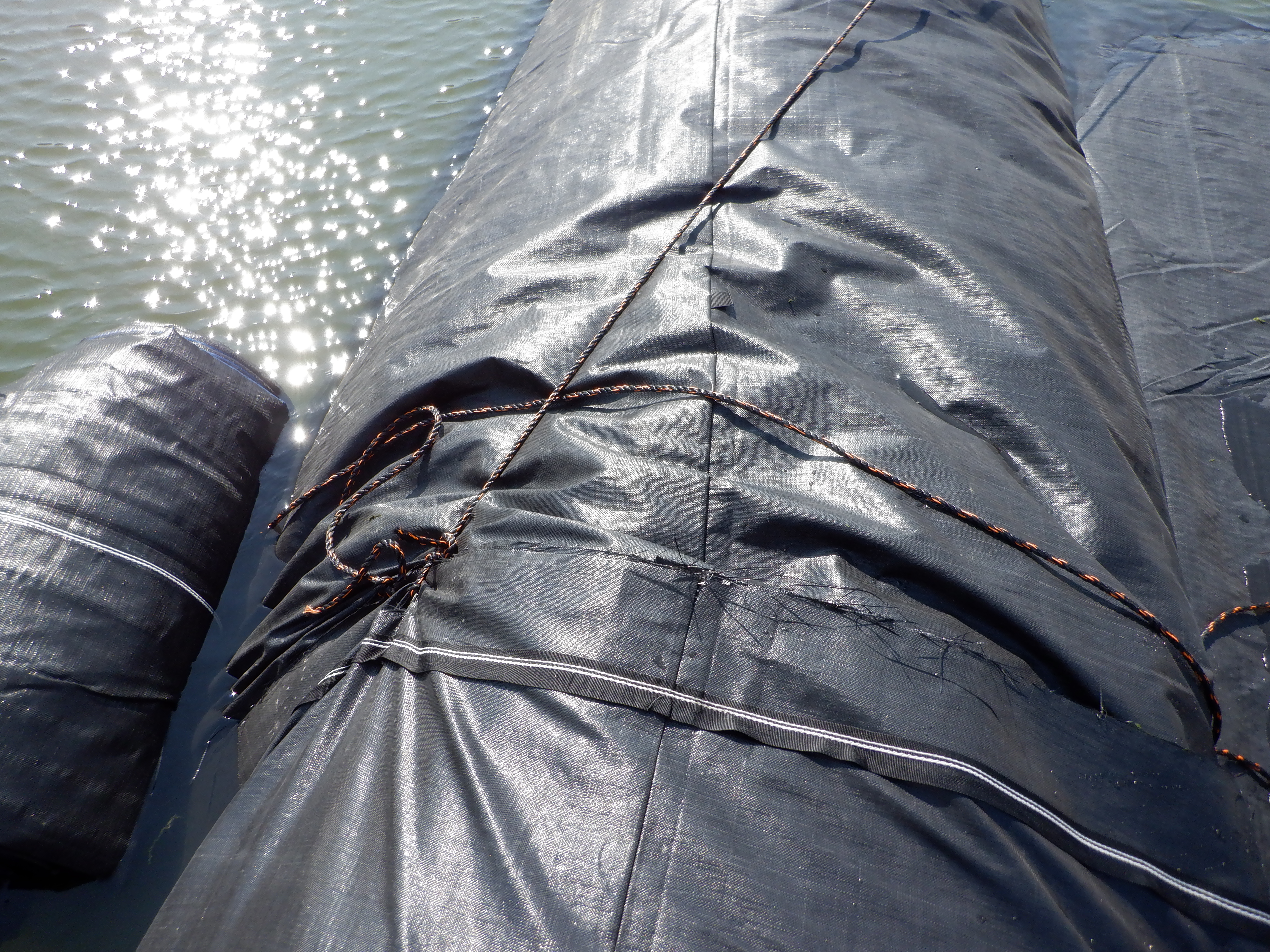
At the roll end of the 12ft tall AquaDam, we can see another rope has been tied to the bottom seam. The other end of this rope is tied back to an anchor at shore.
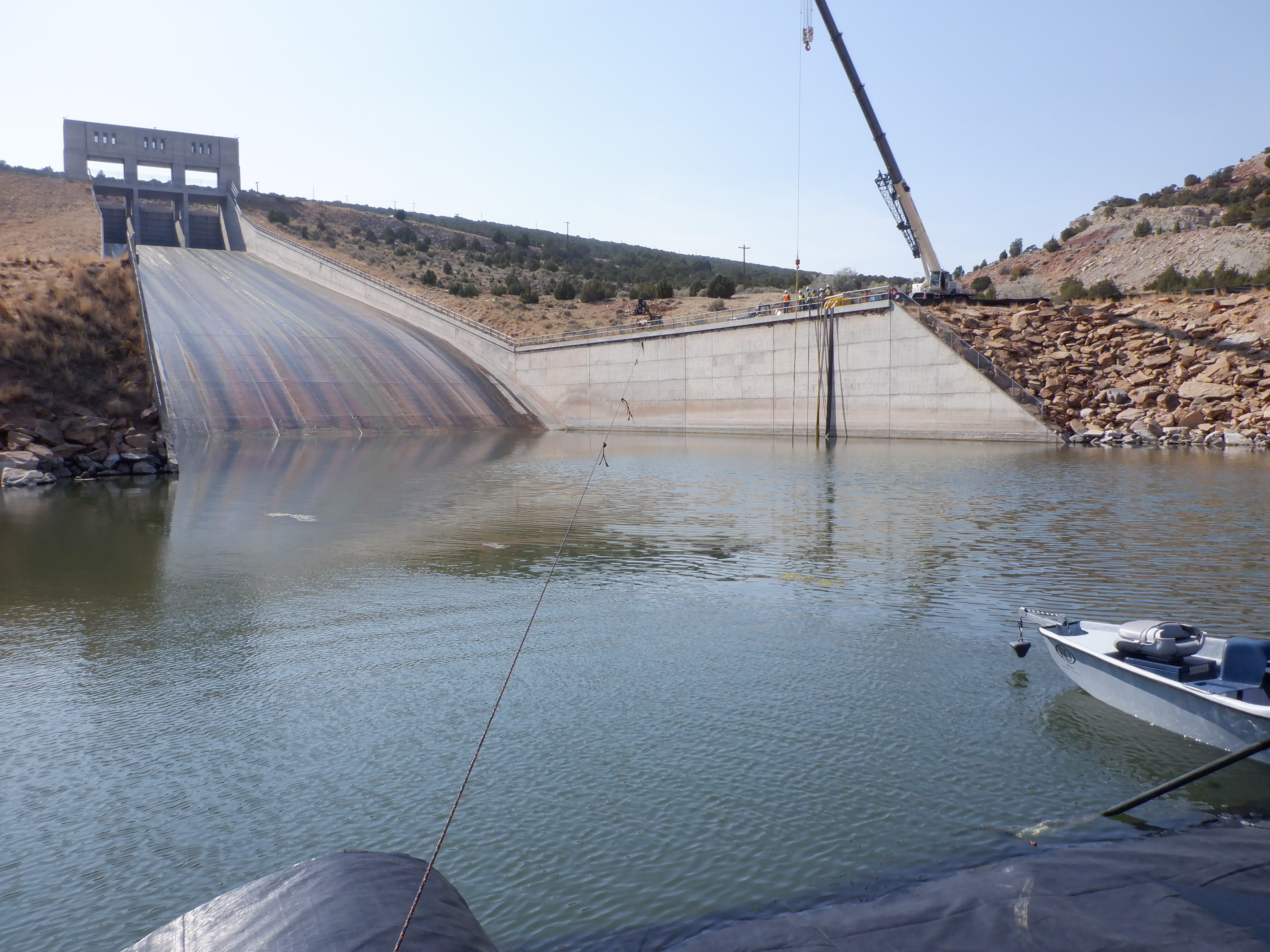
The same rope from before (picture 16) tied back to an anchor (steel post on wall) on shore.
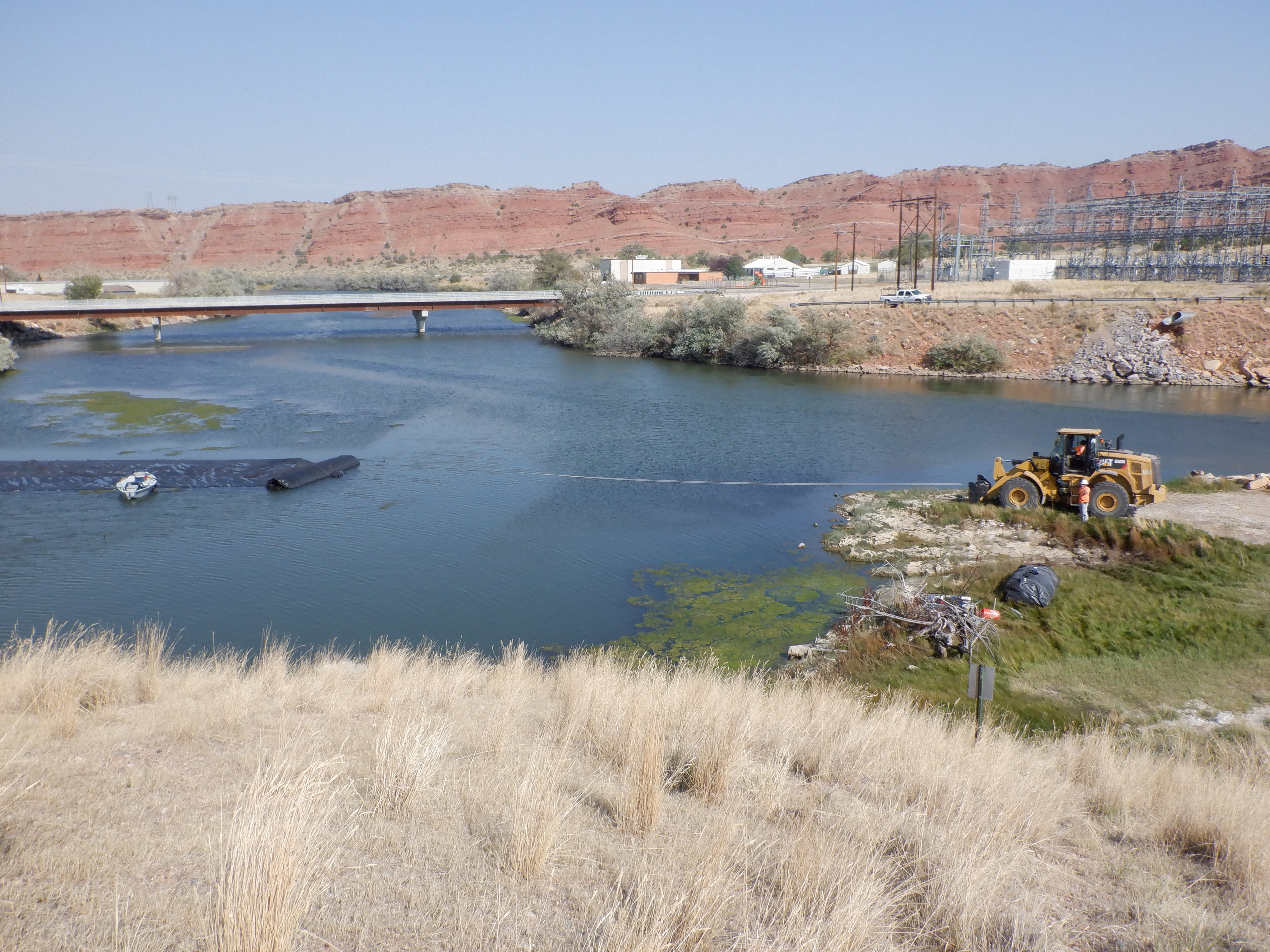
The far side of roll has had a rope tied to the log that the AquaDam came rolled-up on and to a CAT equipment. The CAT can now pull on the rope to assist the AquaDam in turning the needed angle.
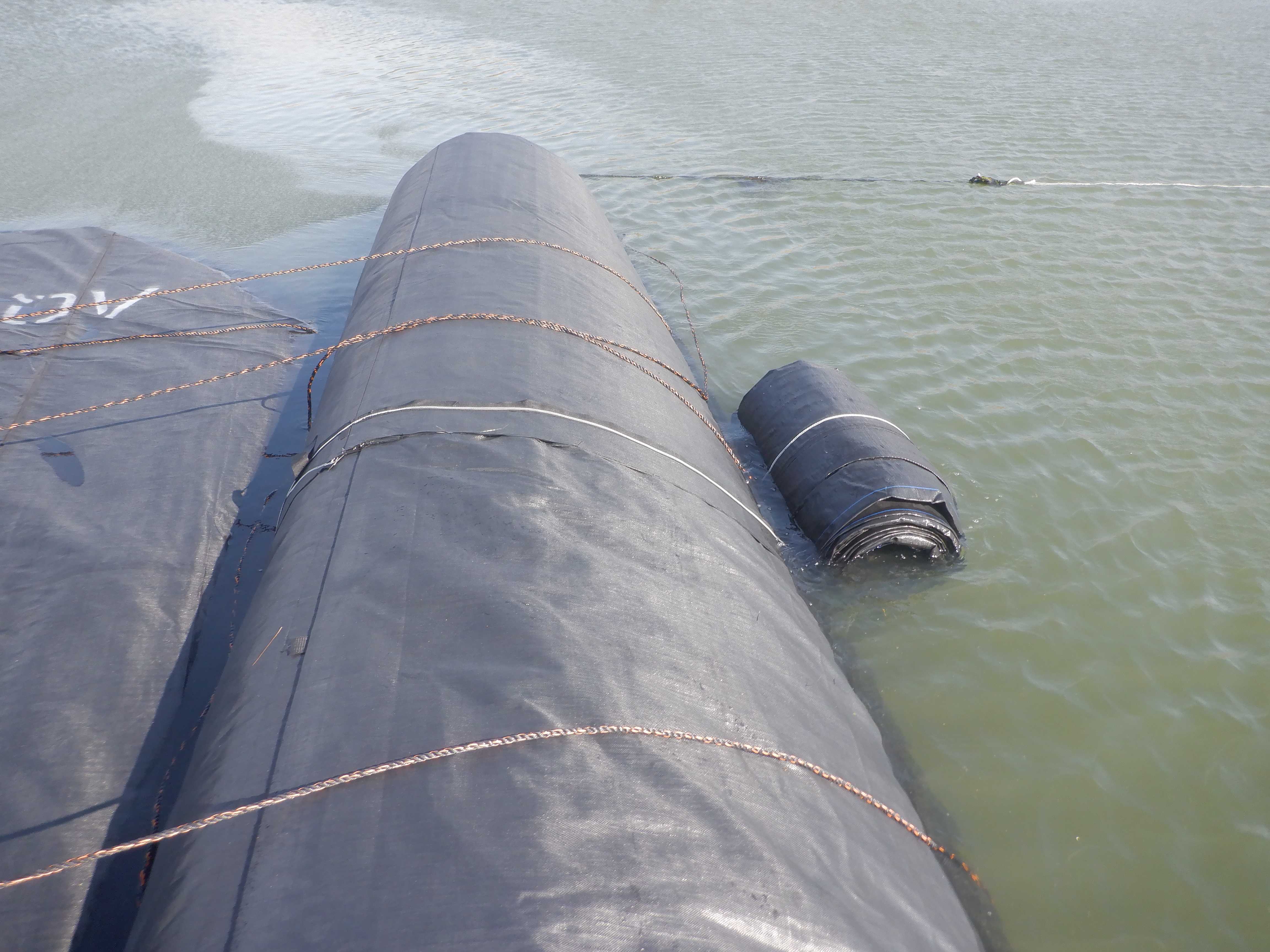
A close-up photo of the roll with a rope on the far side to assist with the turn towards the ending bank. Ropes are still in use to control the roll, from the starting bank, too.
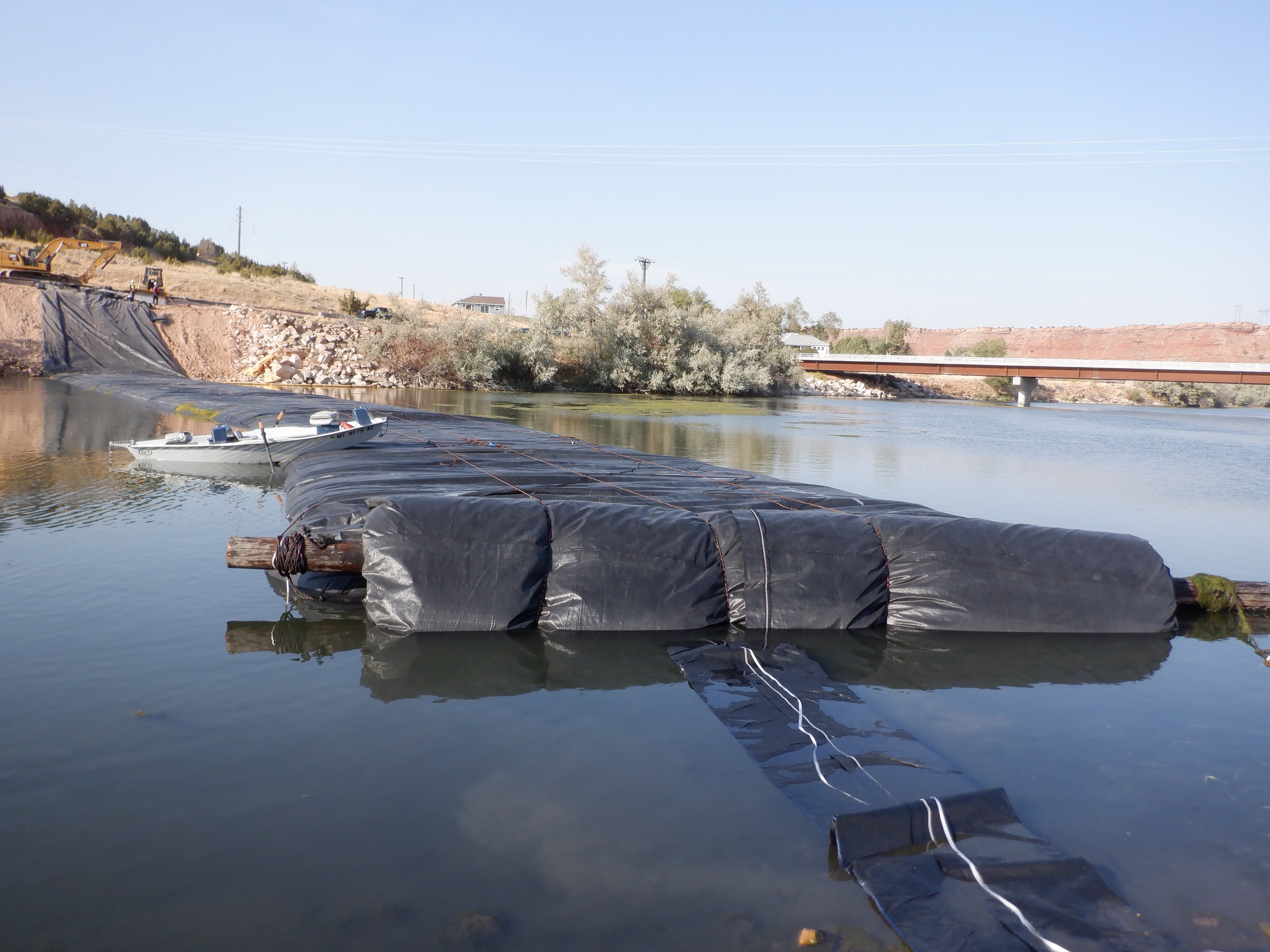
A photo from the ending bank, showing the roll-up end of the 12ft tall AquaDam as it approaches. The 18-inch-tall unit appears to have reached the ending bank. The smaller AquaDam was used to help reduce seepage because the area is very rocky.
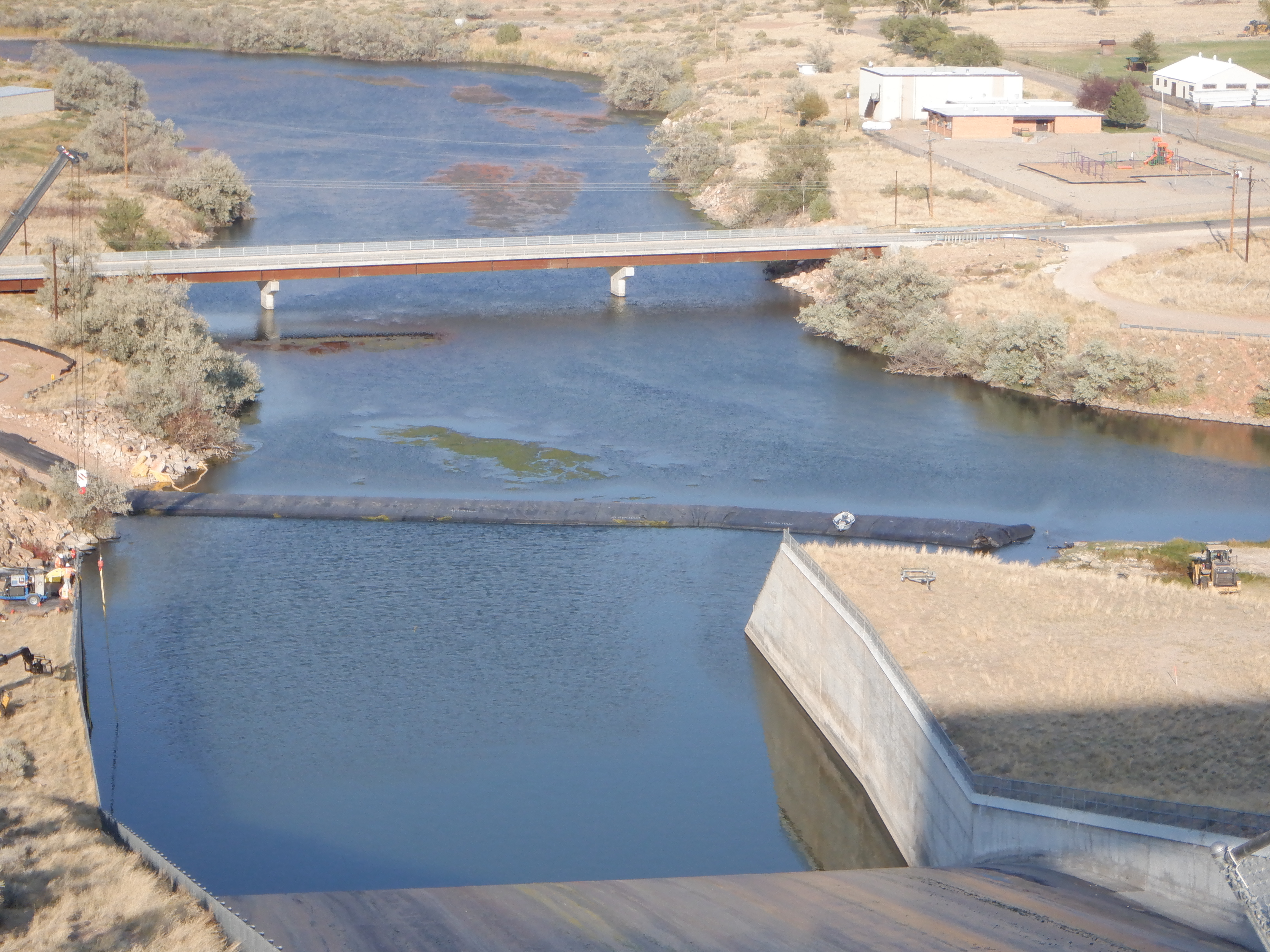
The 12ft tall SCE AquaDam has almost reached the ending bank. This photo is looking downstream of Alcova Dam.
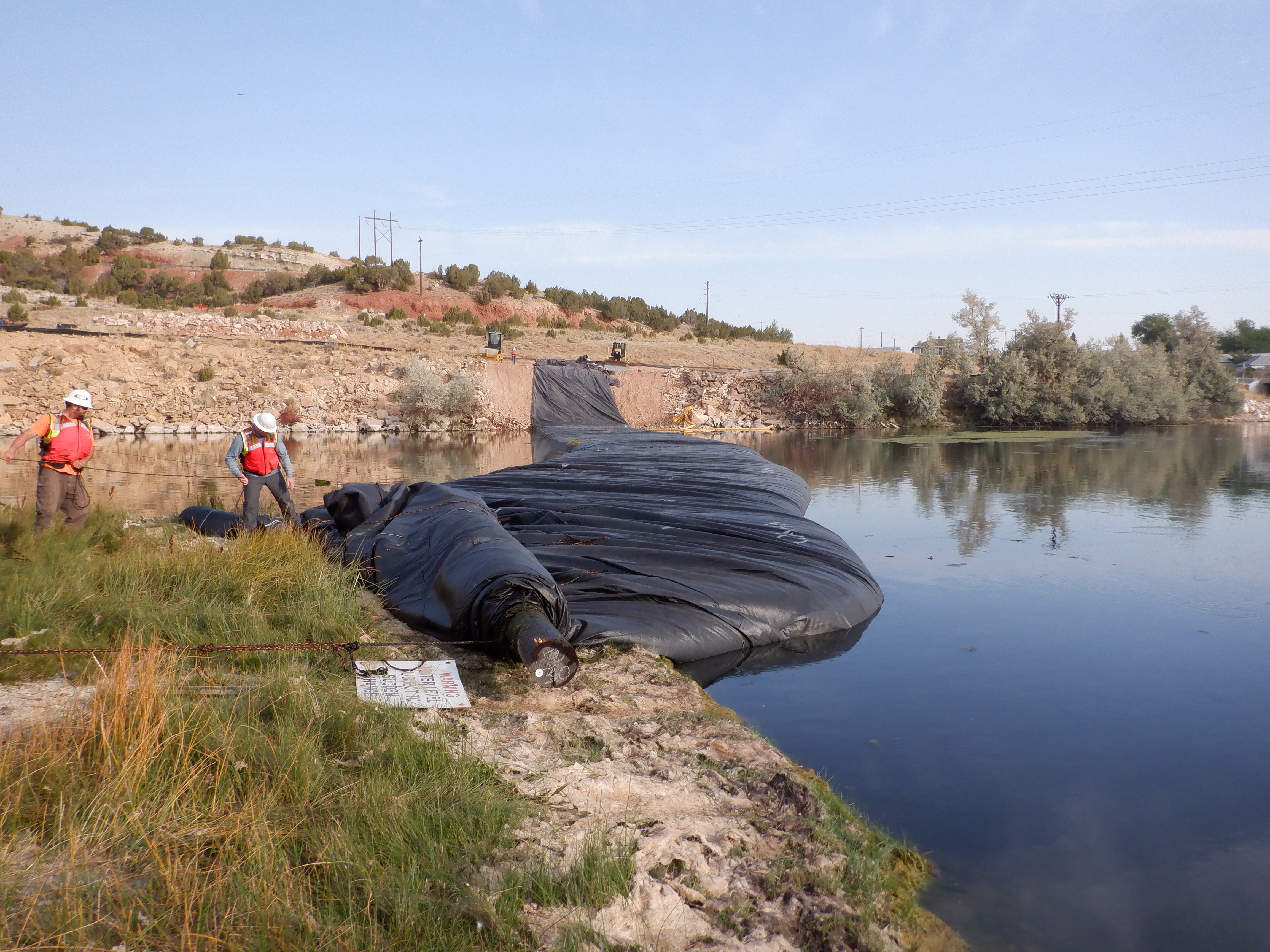
The ending bank has been reached; a sharp turn was needed at the ending bank due to a steep slope. The water gets deep very quickly towards the bottom right of this photo.
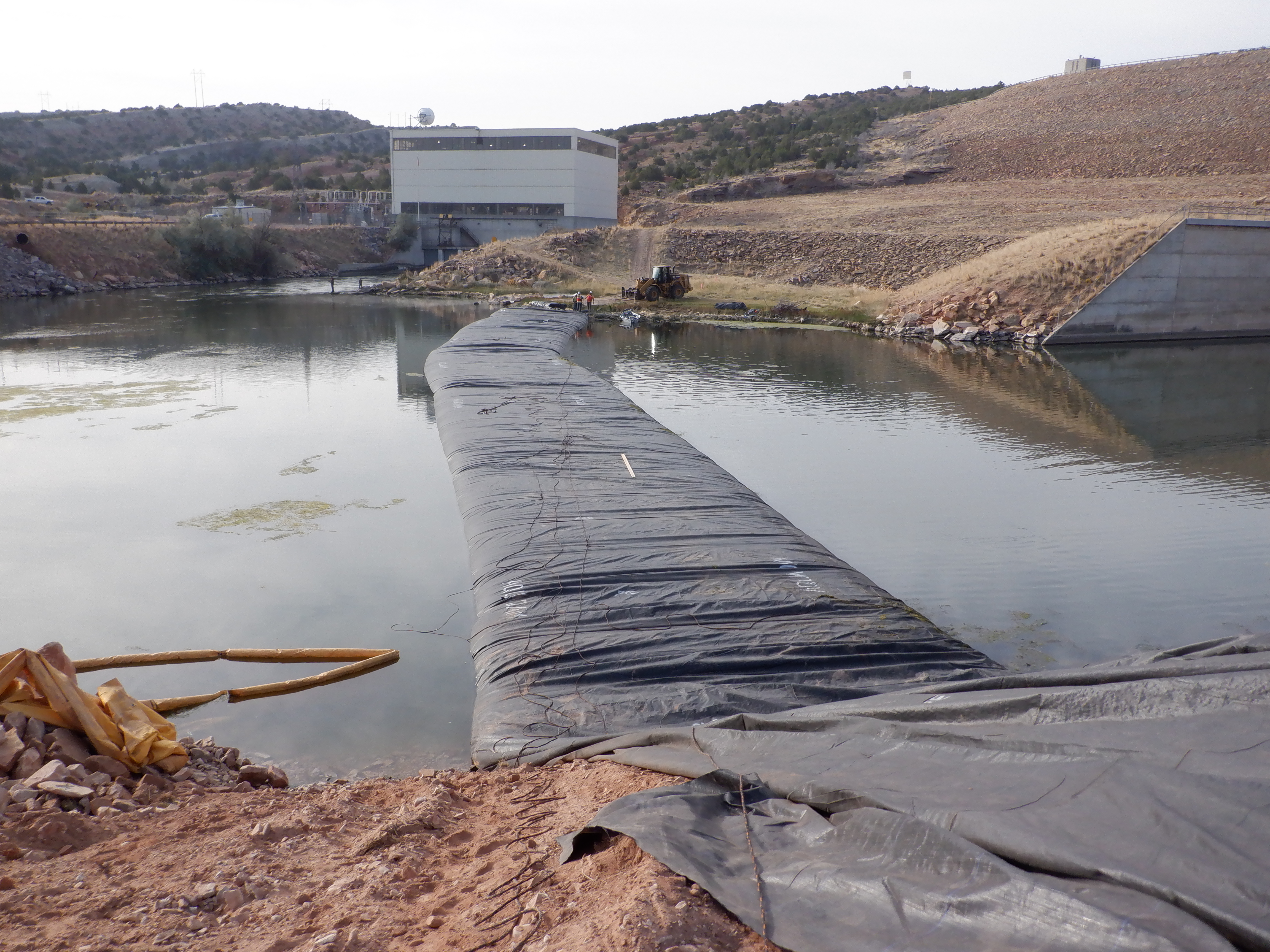
The 12ft tall AquaDam has reached the ending bank but still needs to finish unrolling, have the closed end secured to anchors, and finish filling.
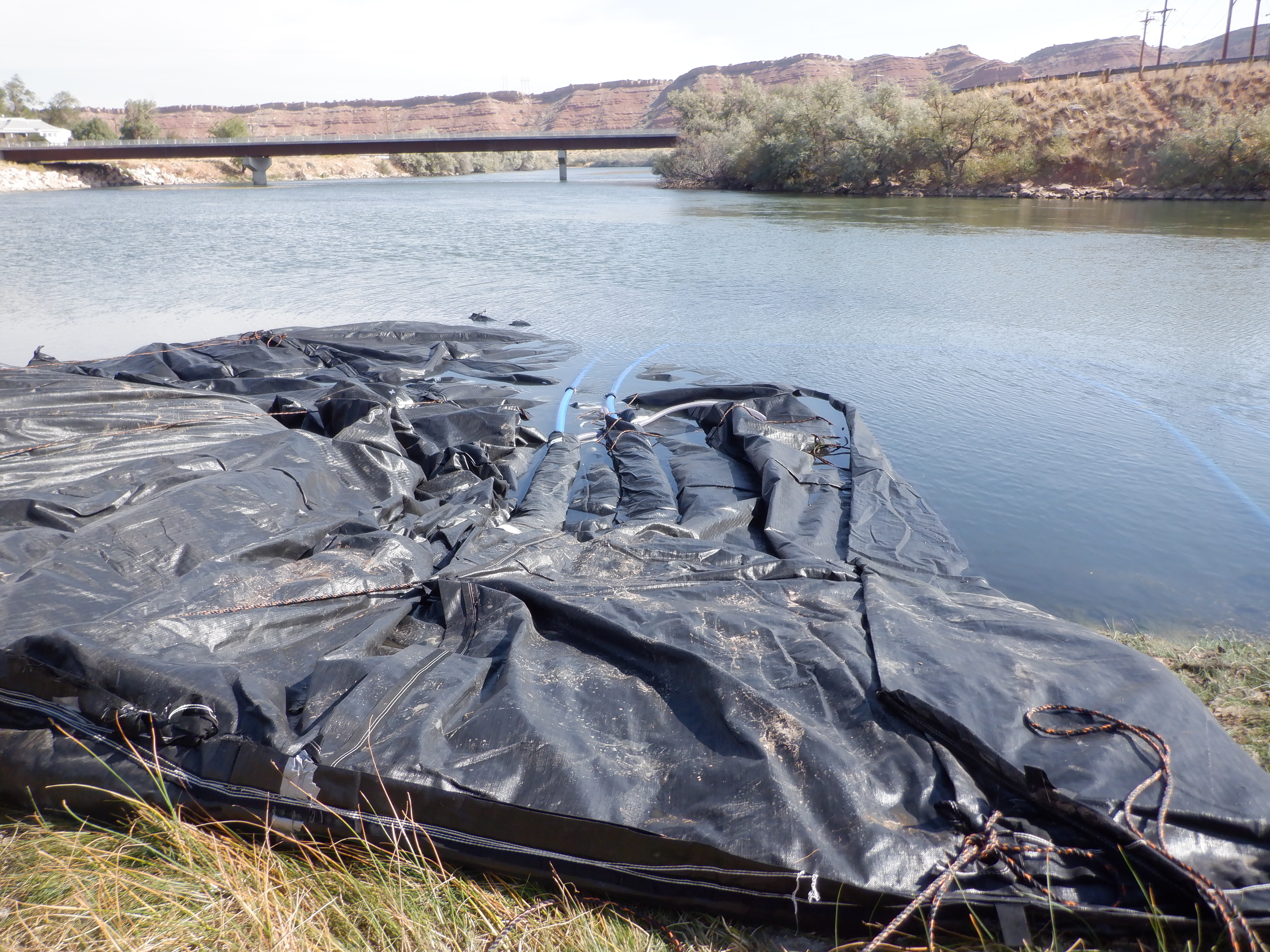
Due to steep slope at the ending bank, an 8ft tall double closed end (DCE) AquaDam was installed there at that outer turn. This support dam will help keep the end from moving.
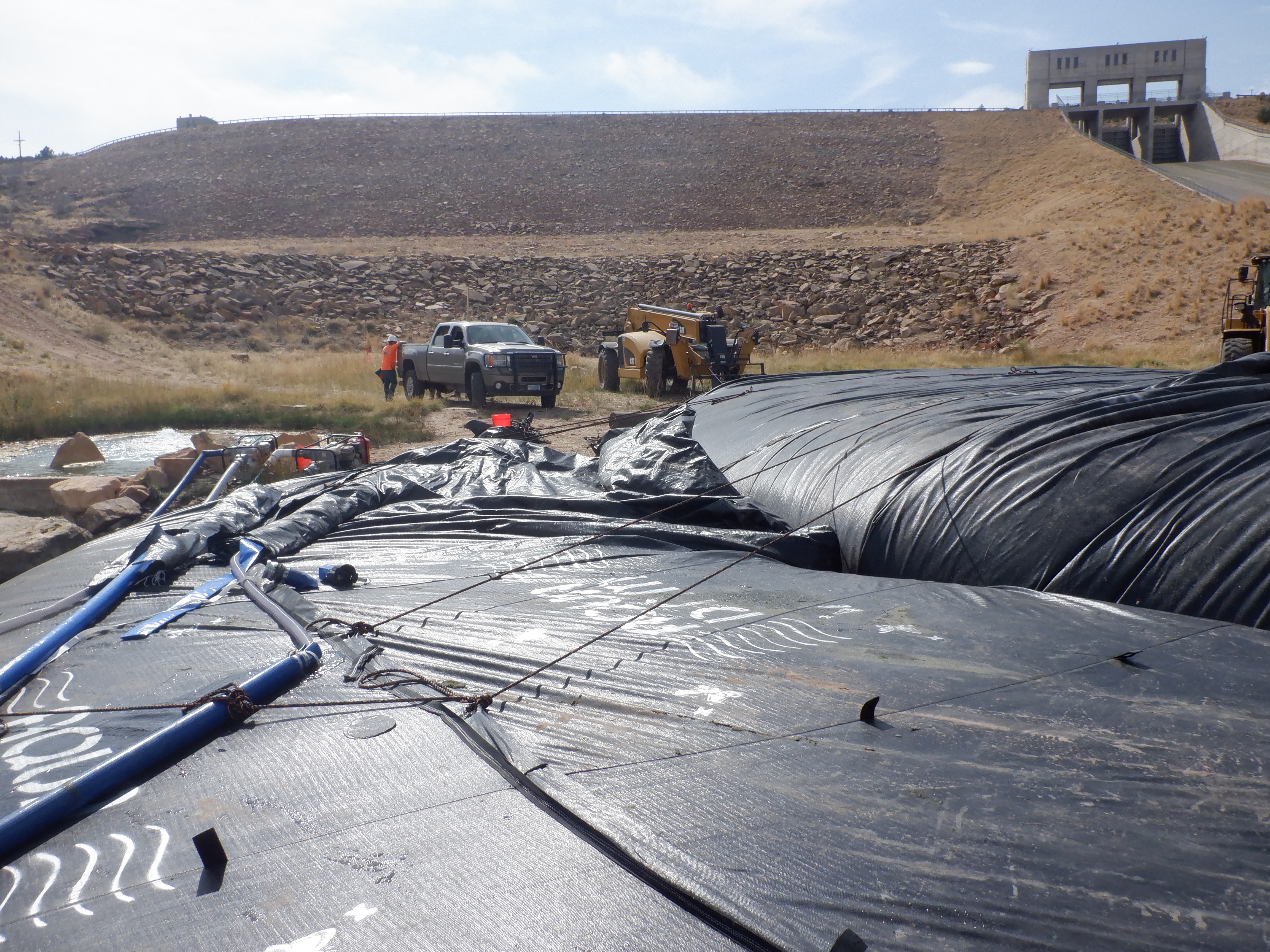
Both AquaDams on the ending bank have been tied off to CAT equipment while they are filled with water. The 8ft tall DCE AquaDam was also tied to the 12ft tall dam. After the AquaDams are full of water, they will no longer need to be tied off to the CAT equipment, the weight of the water inside will keep them in place.
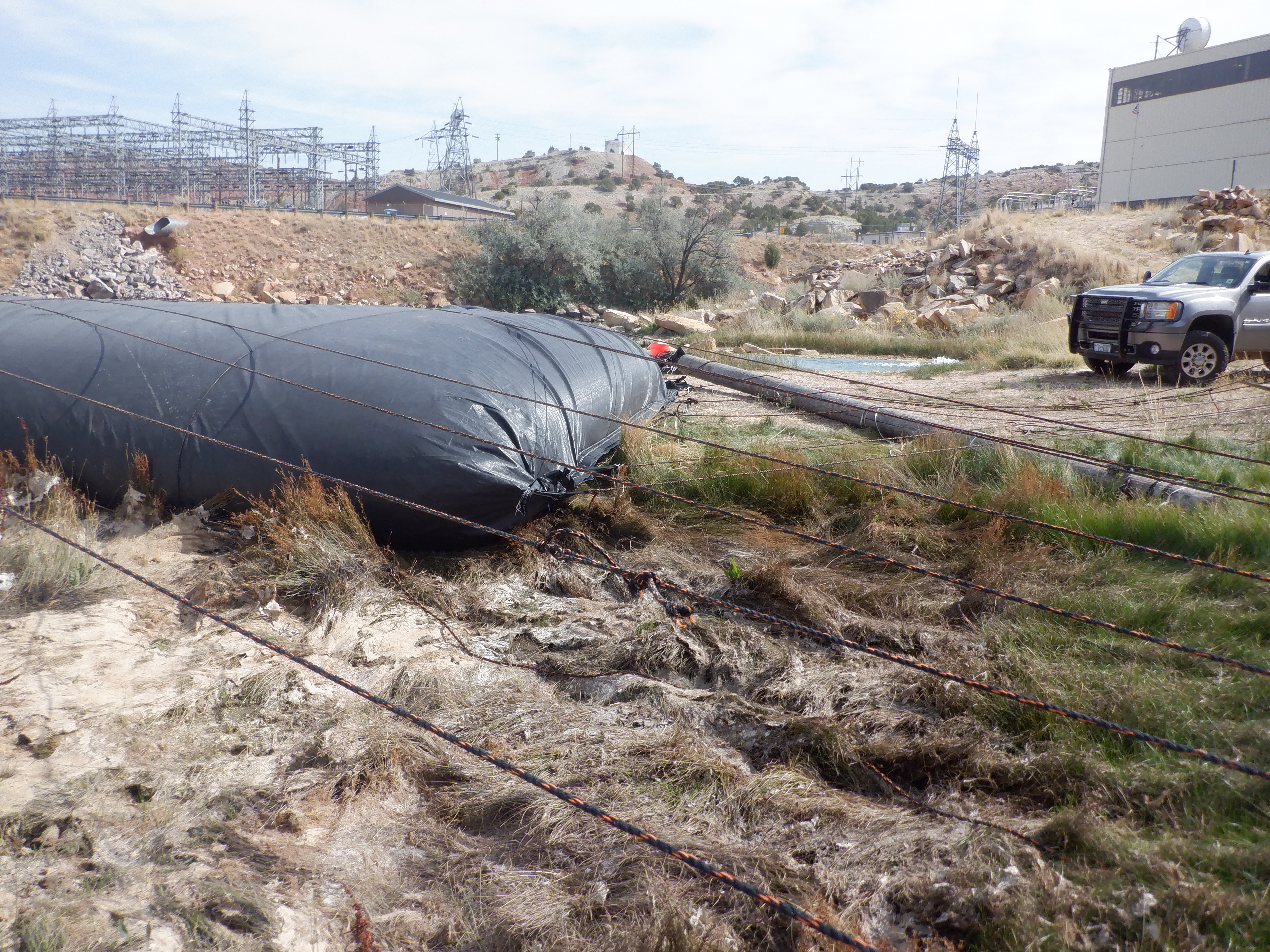
Lots of rope have been used to keep the AquaDams in position as they are filled.
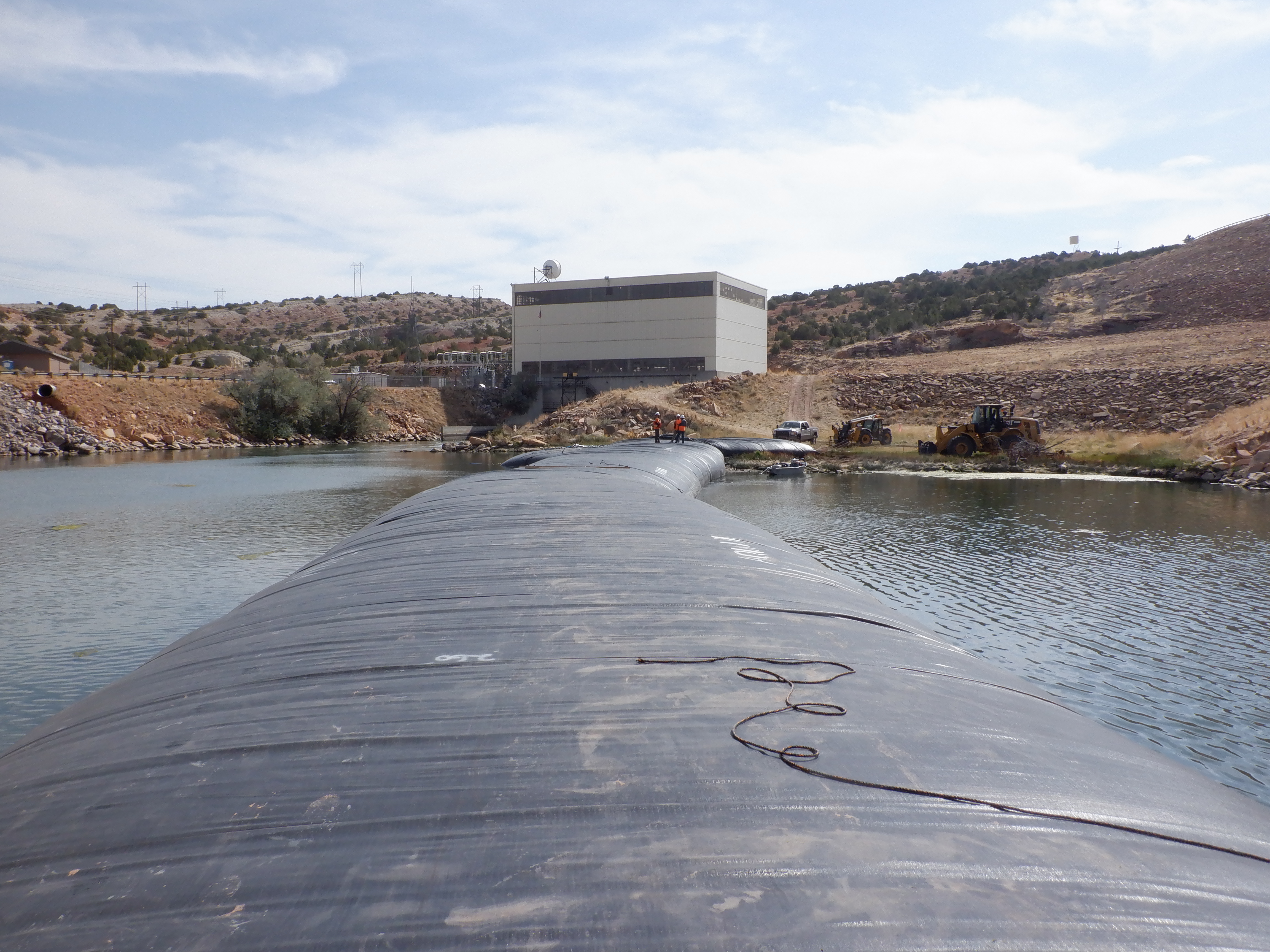
Standing on the 12ft tall AquaDam, as it fills, looking at the ending bank.
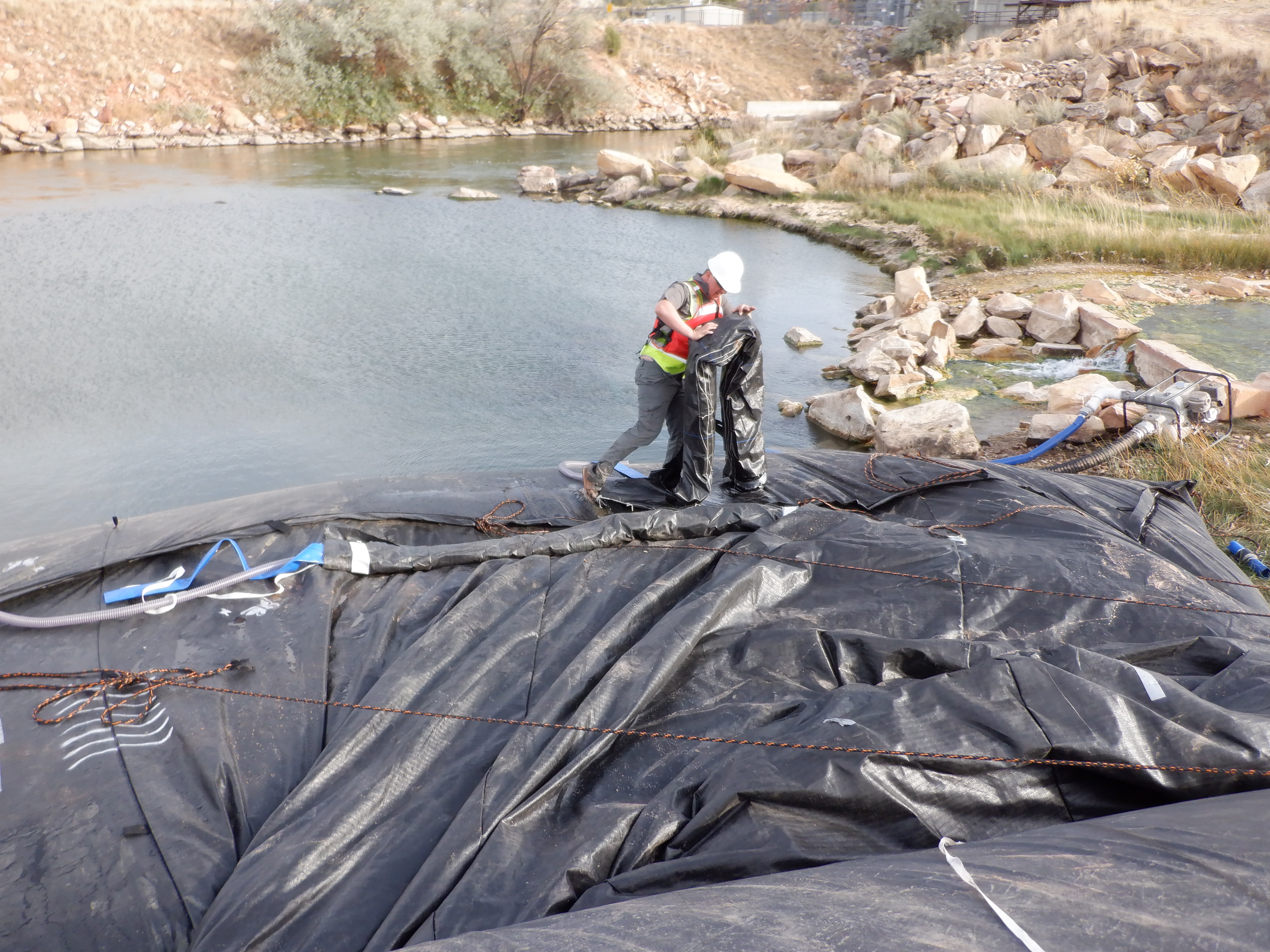
A worker ties-up and secures one of the fill-tubes of the 8ft tall DCE AquaDam. The fill-tubes for a DCE AquaDam are extruded out of the top of the unit. This allow the dam to be self-elevating, but the fill-tubes must be tied up and secured after filling is completed. An AquaDam will only reach its maximum height at the lowest point along the path it is laid.
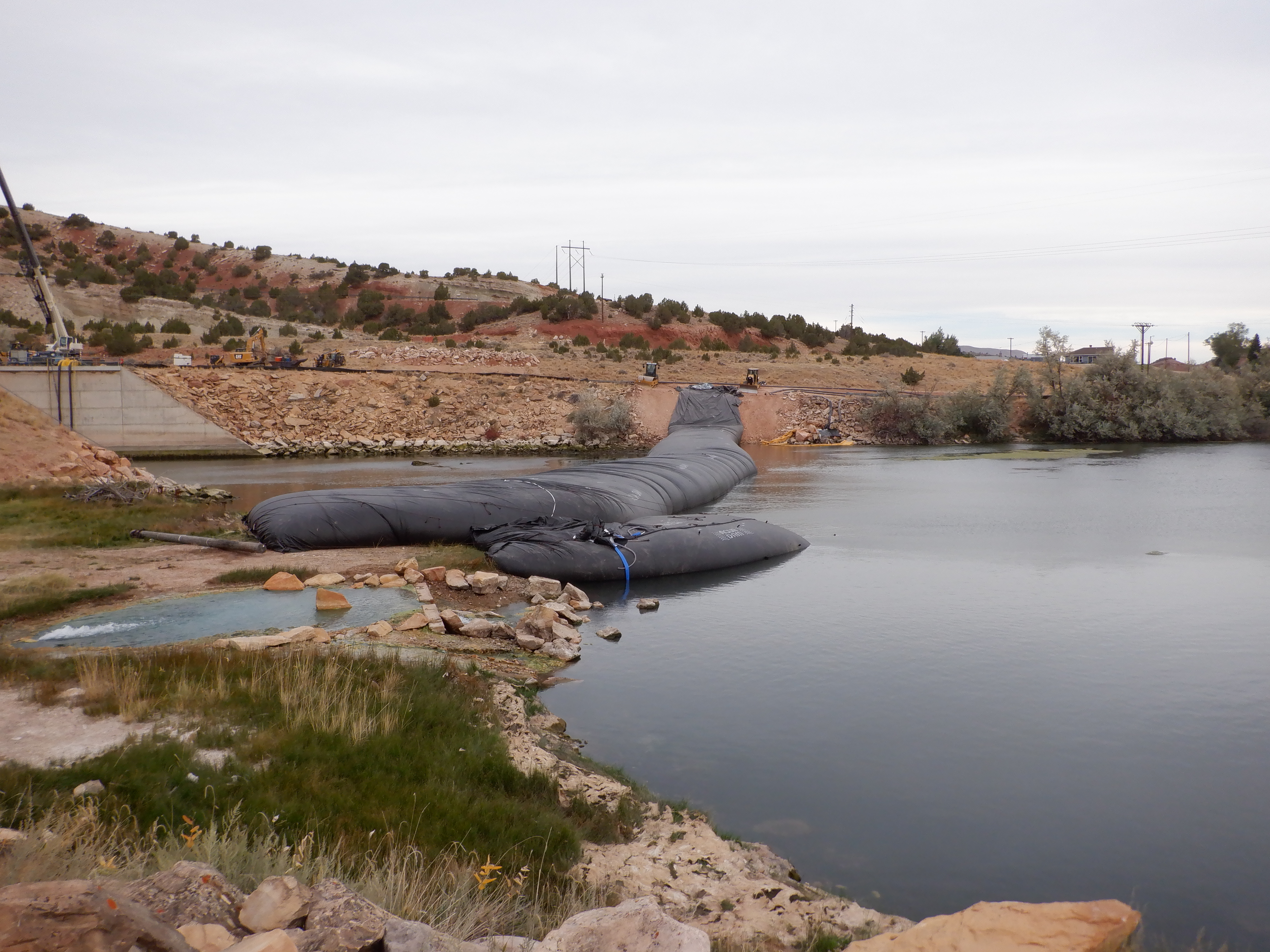
The ending bank with both AquaDams full of water and working. Both fill-tubes have now been tied-up and secured to each other. The 8ft tall AquaDam was also tied-up to the 12ft tall dam.
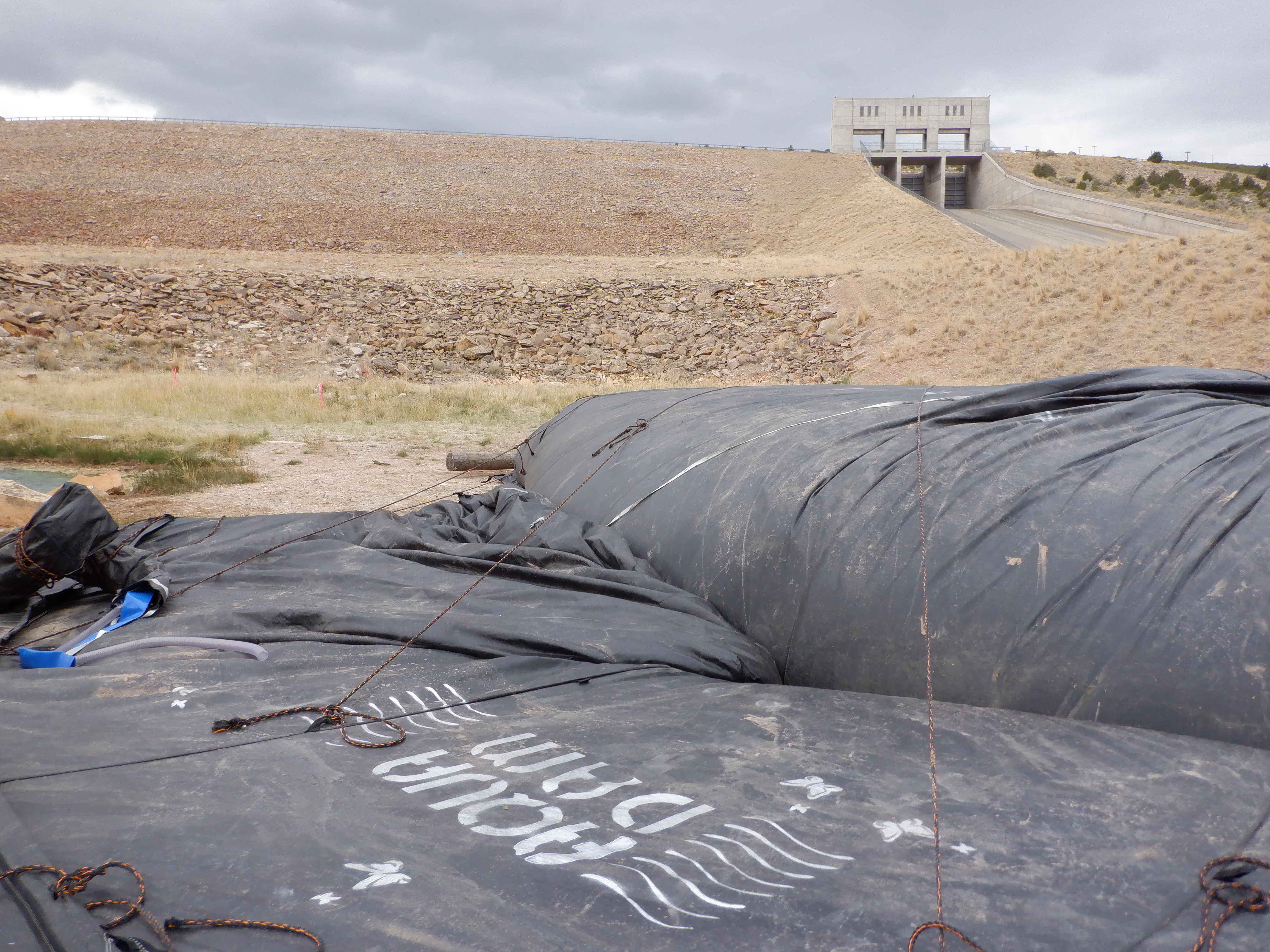
Standing on the 8ft tall AquaDam we can see the secured fill-tubes and the ropes tied back to the 12ft tall dam.
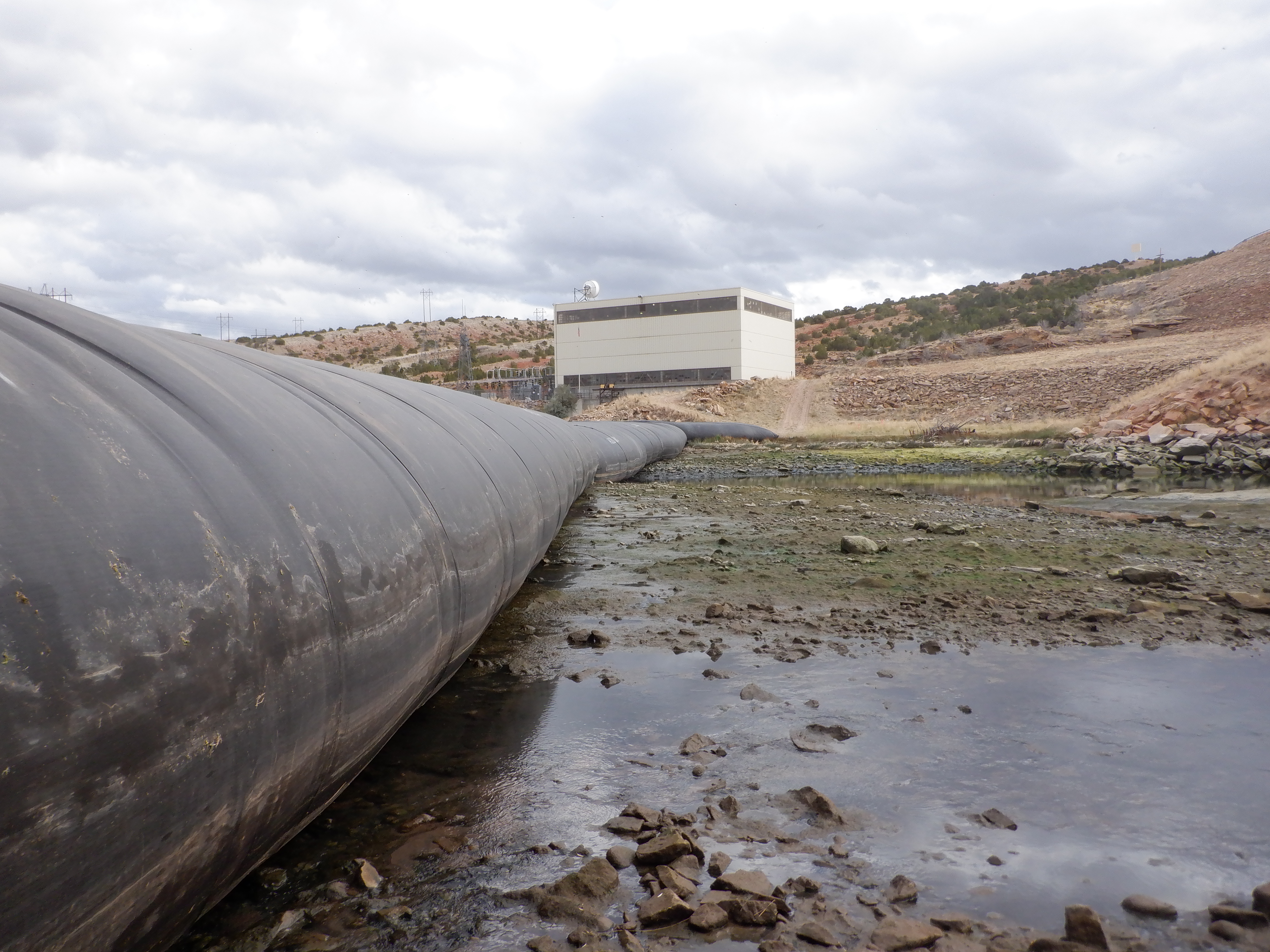
A photo from inside the work area looking at the ending bank, after some de-watering has occurred.
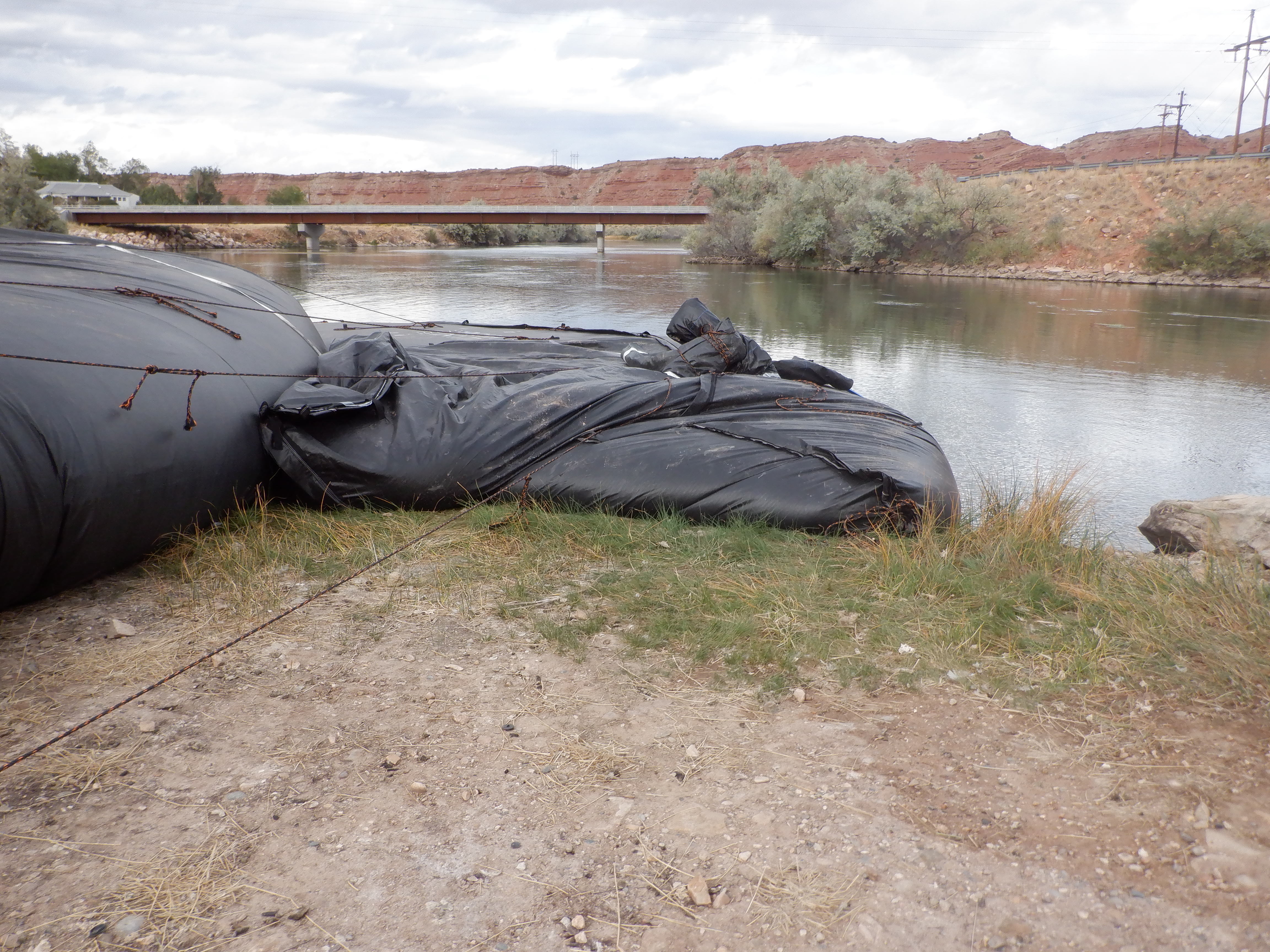
Another angle looking at the 8ft tall DCE AquaDam tied off to the 12ft tall dam. Both dams have reached their maximum height at the lowest point where they have been laid, everywhere else along their path they will be less in height and slightly greater in width.
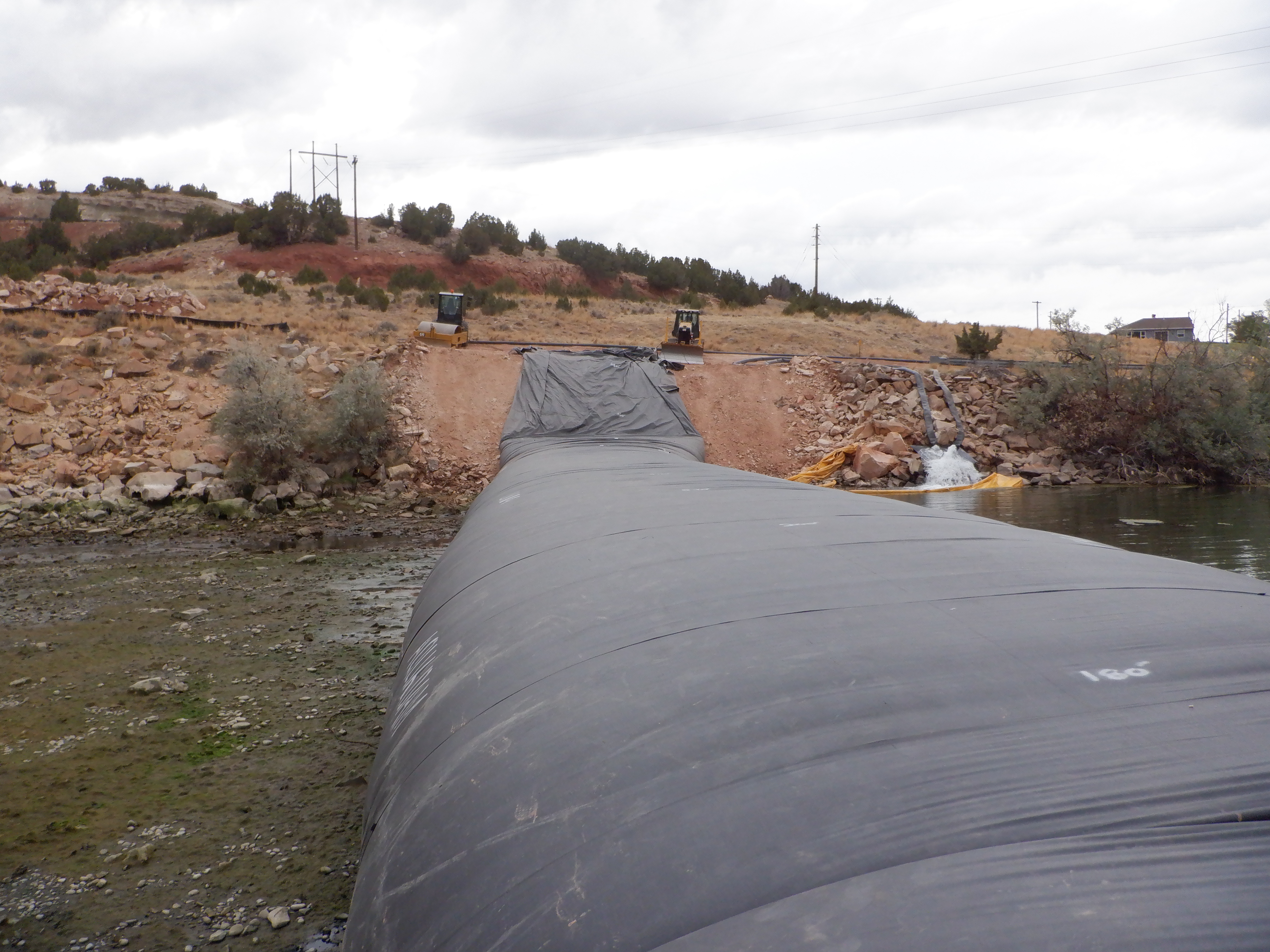
Looking at the starting bank of the 12ft tall AquaDam after de-watering has begun. The starting bank for a SCE AquaDam must be higher in elevation than the AquaDam at its maximum height along its path. The starting bank here had several extra feet of elevation.
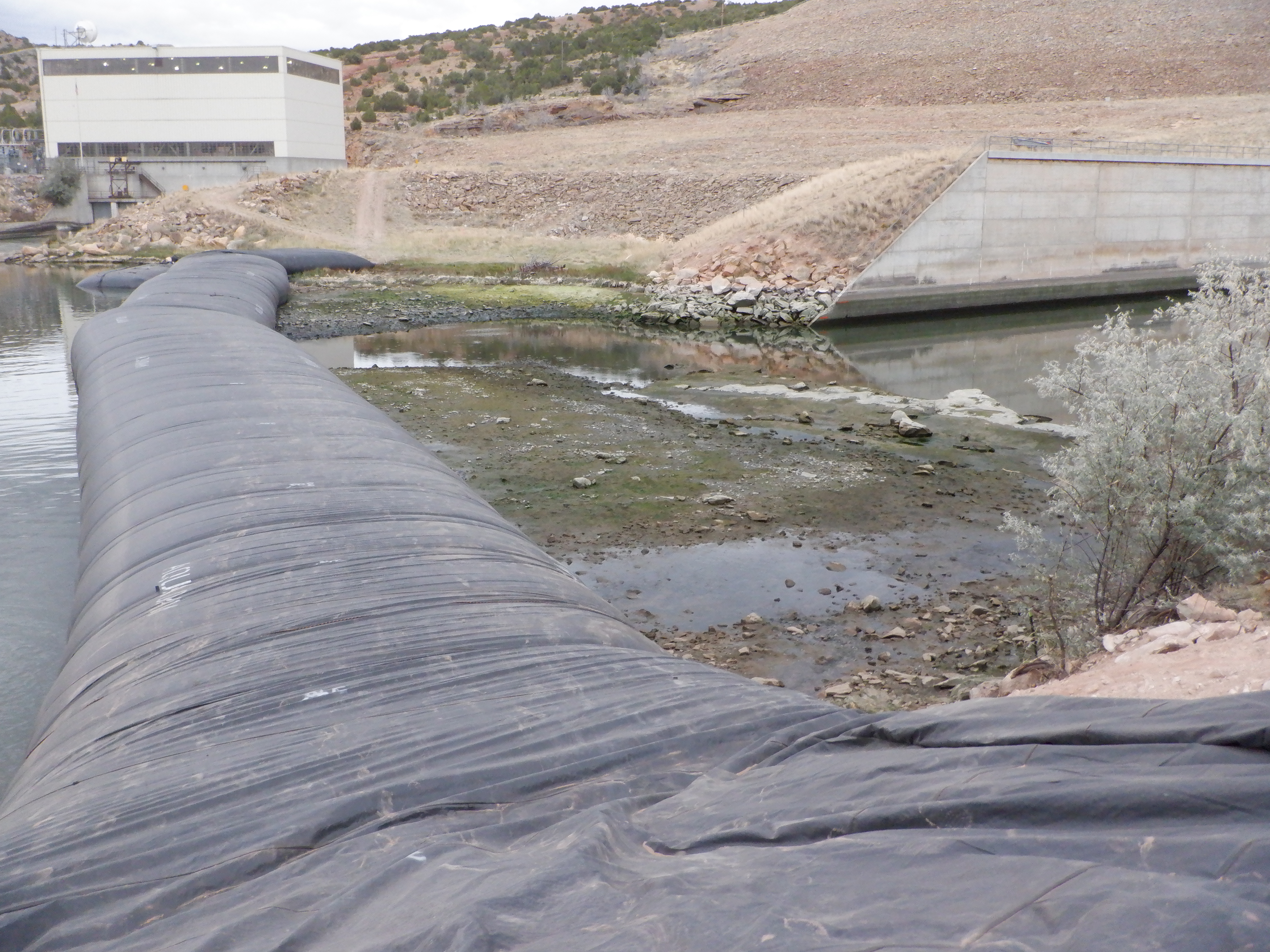
Looking at the ending bank after de-watering has begun. The two channels that the 12ft tall AquaDam traveled over, can be seen now.
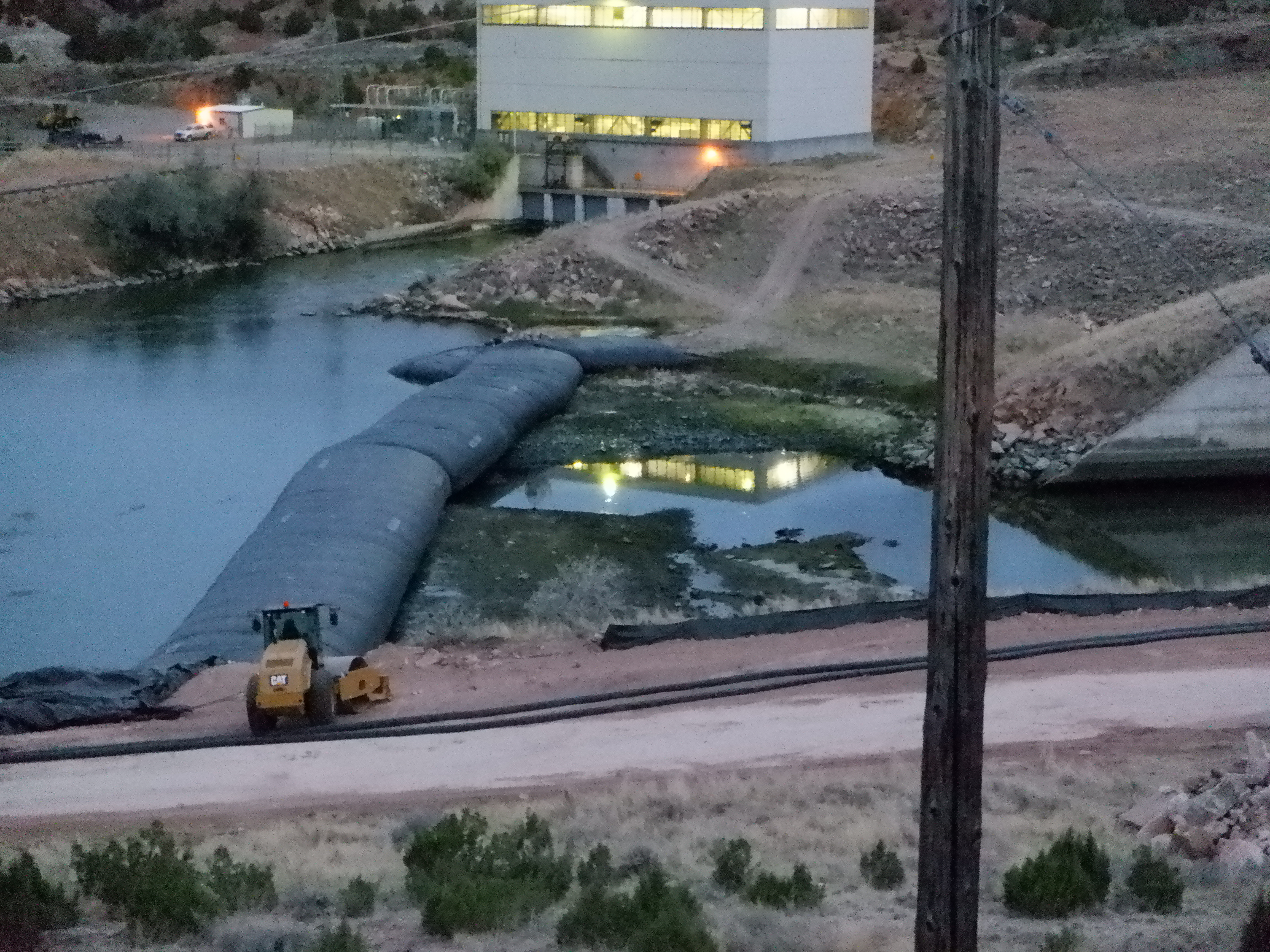
Both AquaDams have been installed they are working great.
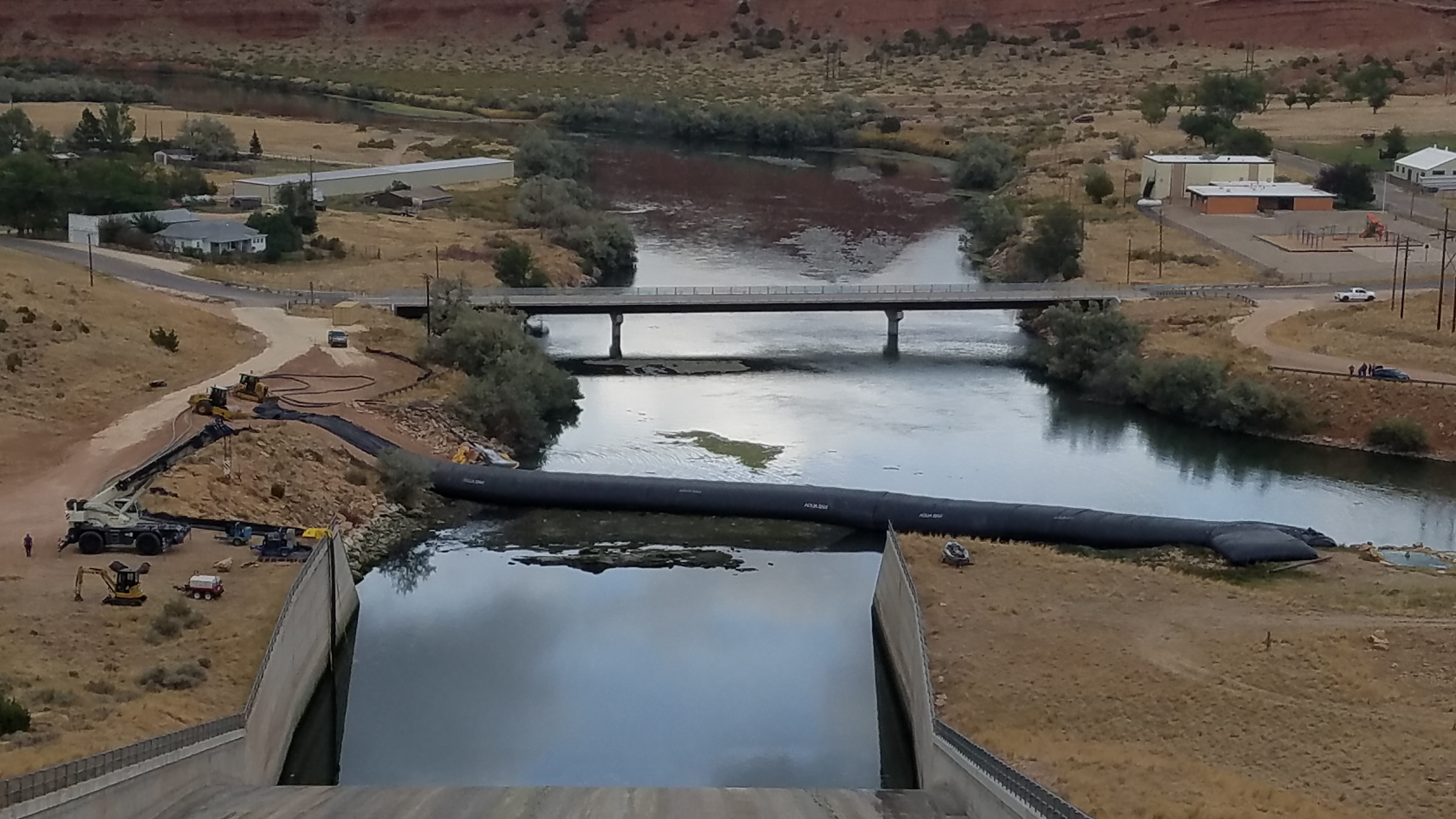
A photo from Alcova Dam, showing the installed AquaDam cofferdam system.

Once the work area was de-watered, workers were able to get equipment into the area to get the necessary work done.

A smaller SCE AquaDam was installed at the top of the overflow of Alcova Dam to mitigate seepage through the gates. The starting point (open end) has been secured up higher than the maximum height of the AquaDam. The fill-tubes have been secured to the blue discharge hoses, so they do not slide down while filling.

Workers hold the rolled end of the smaller AquaDam, as the unit fills across its path.

The smaller SCE AquaDam is installed and working.

After the seepage was addressed, from the gates, workers could start the repair process.

The lower end of the work area de-watered.

A high-water event occurred during the project and so the contractor decided to place fill dirt behind (on work area side) the 12ft tall AquaDam to help support it during that event. Smaller support AquaDam could have also been used.
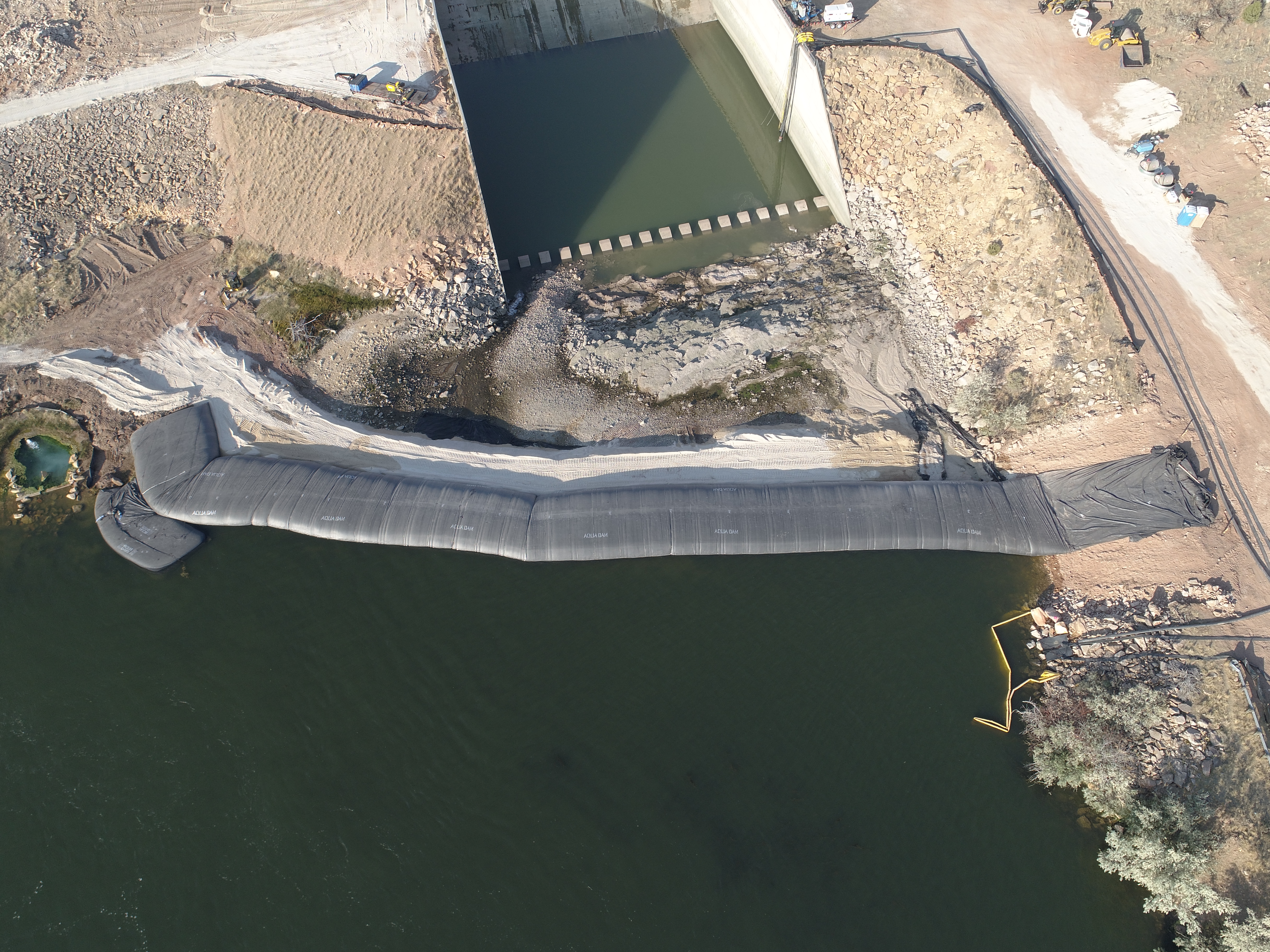
Aerial photo of the AquaDam cofferdam system dated: October 4, 2020
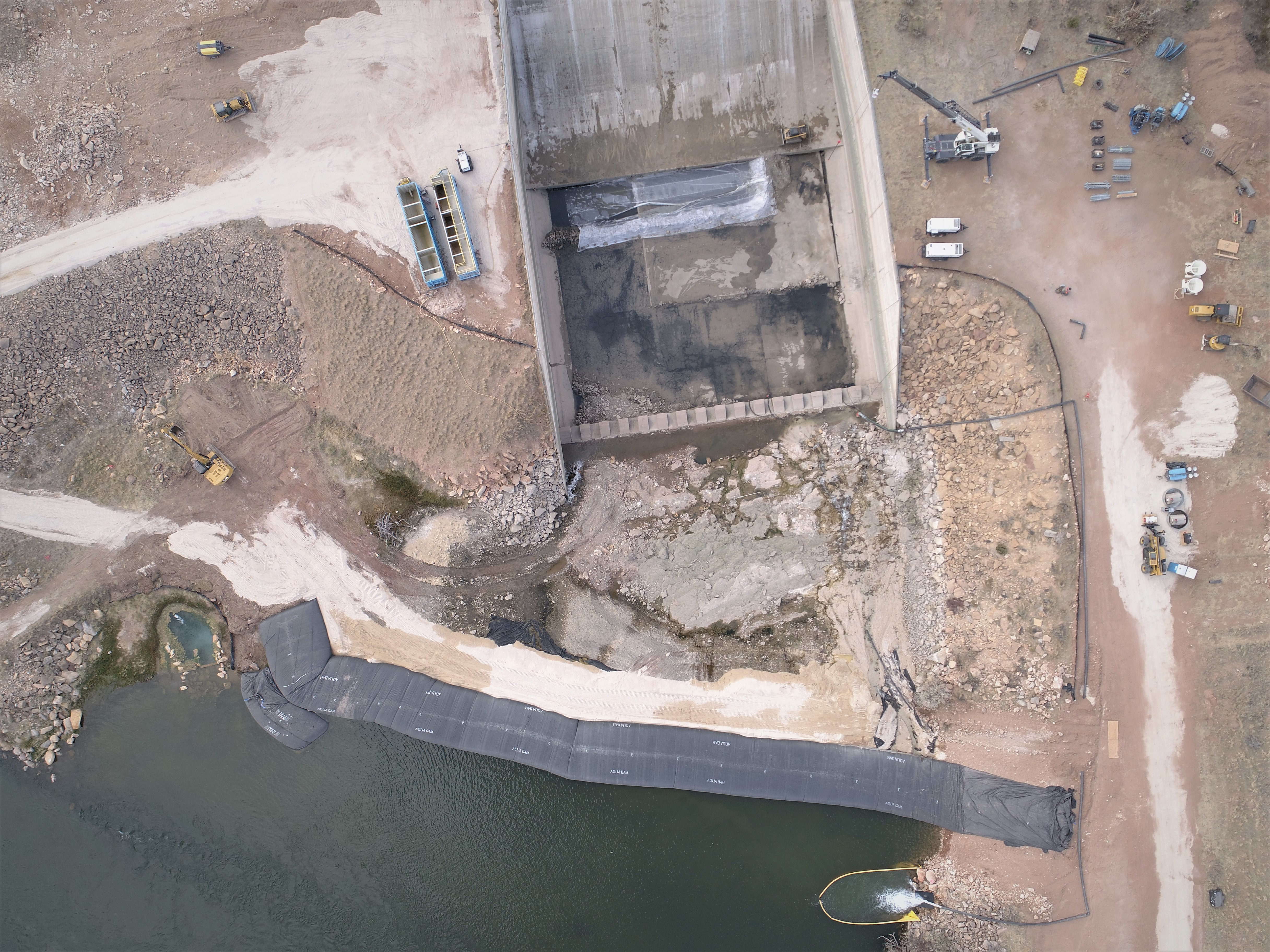
Aerial photo of the AquaDam cofferdam system dated: October 11, 2020
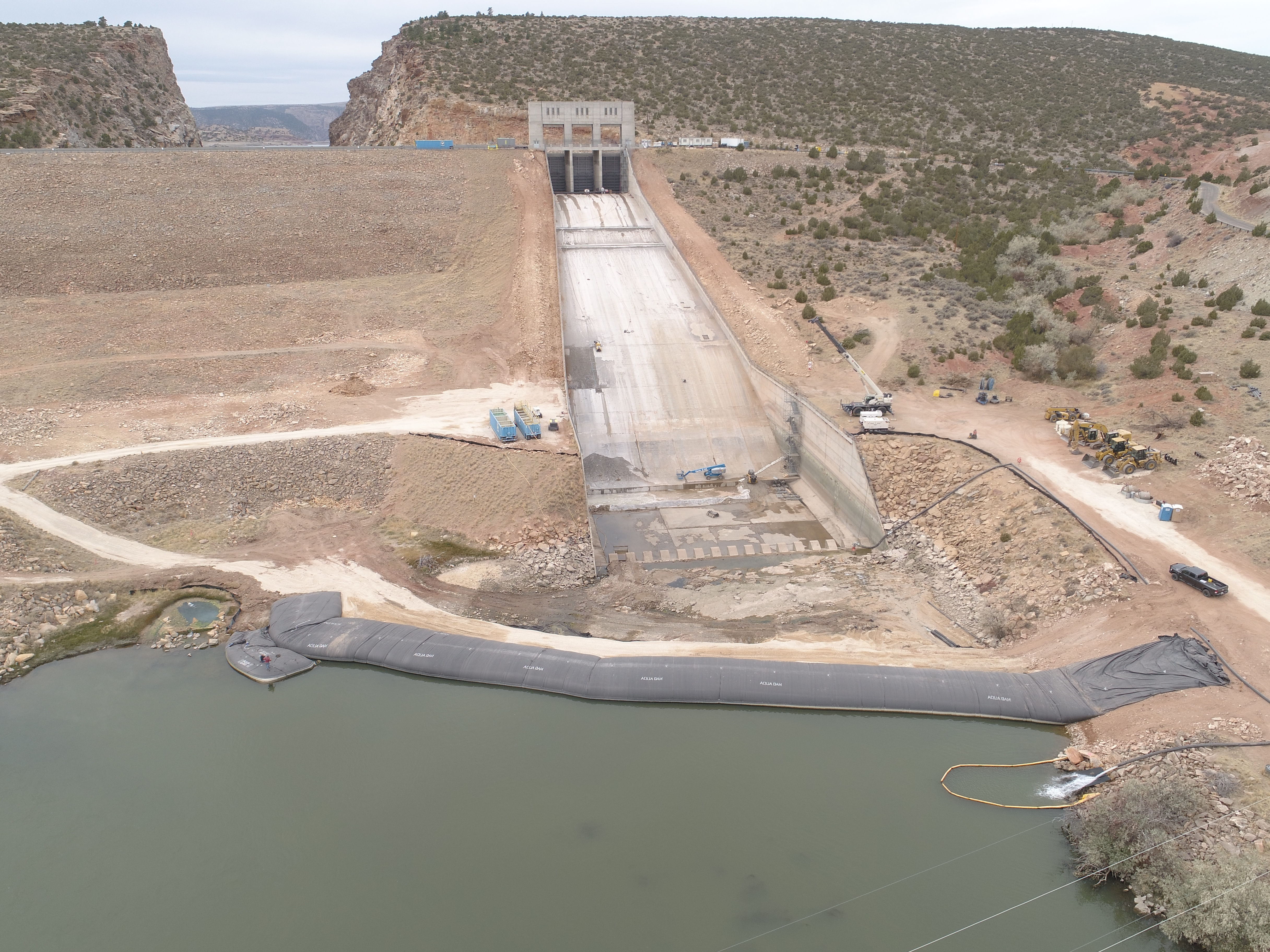
Aerial photo of the AquaDam cofferdam system dated: October 18, 2020
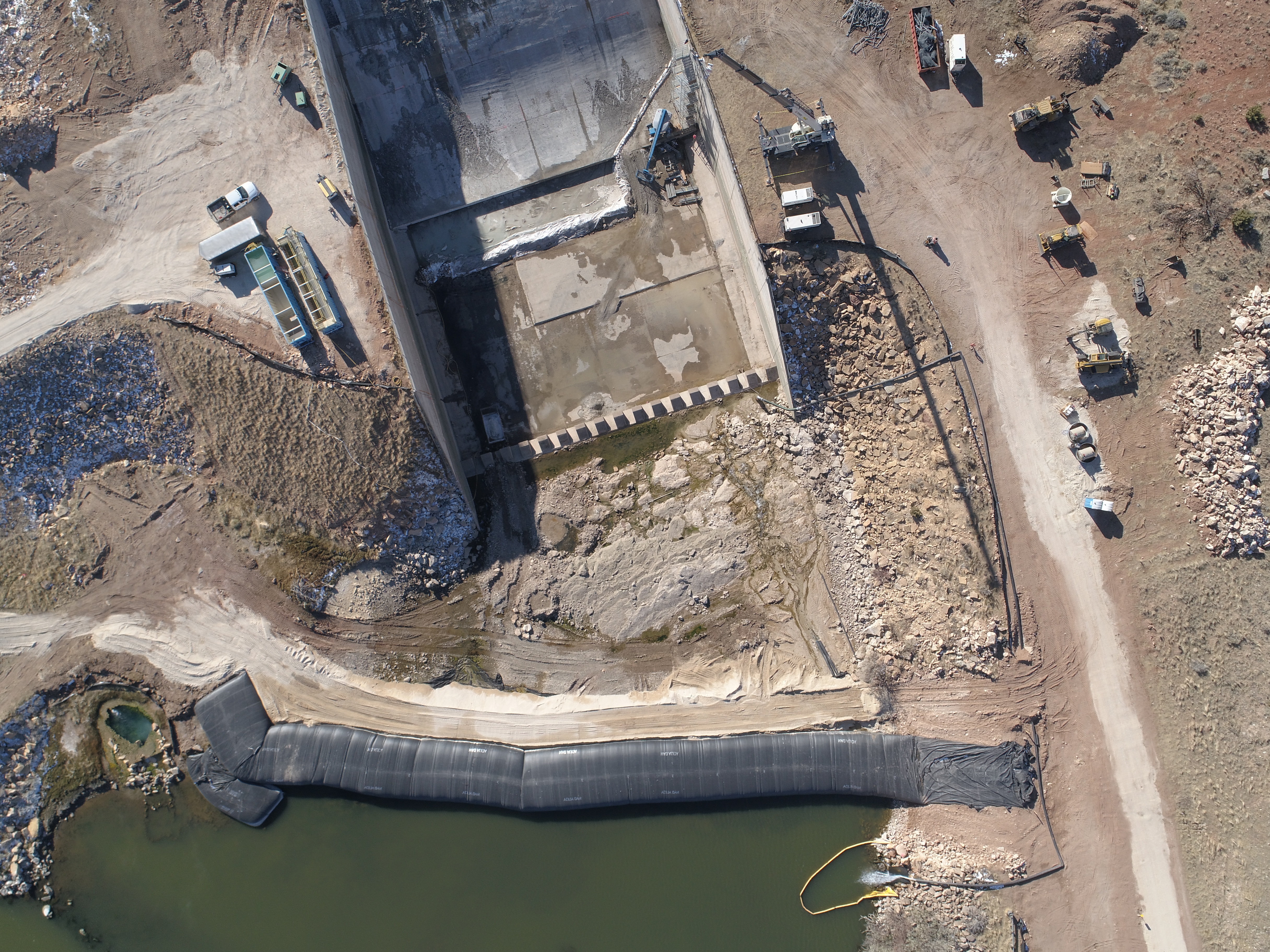
Aerial photo of the AquaDam cofferdam system dated: October 23, 2020
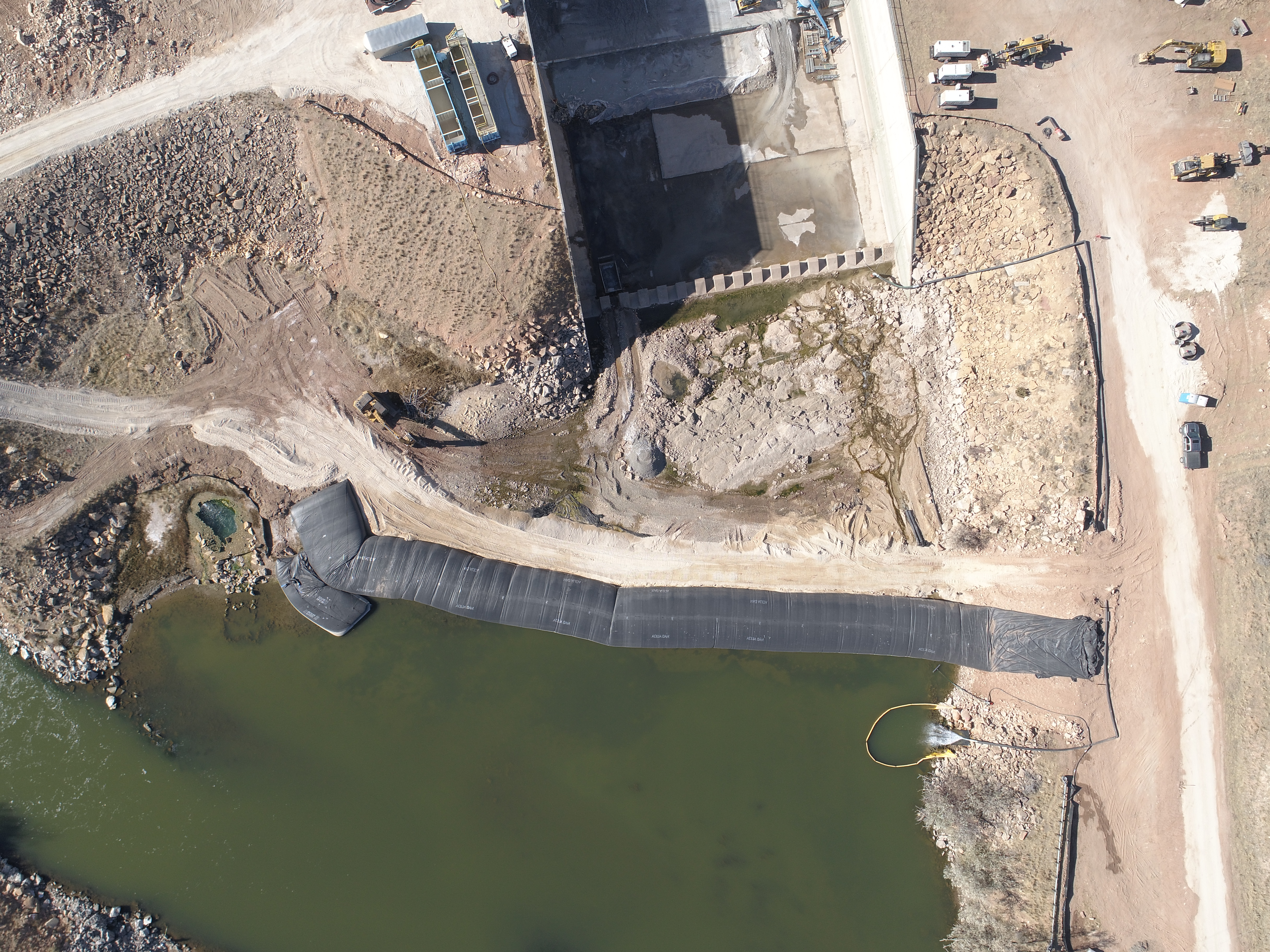
Aerial photo of the AquaDam cofferdam system dated: November 1, 2020
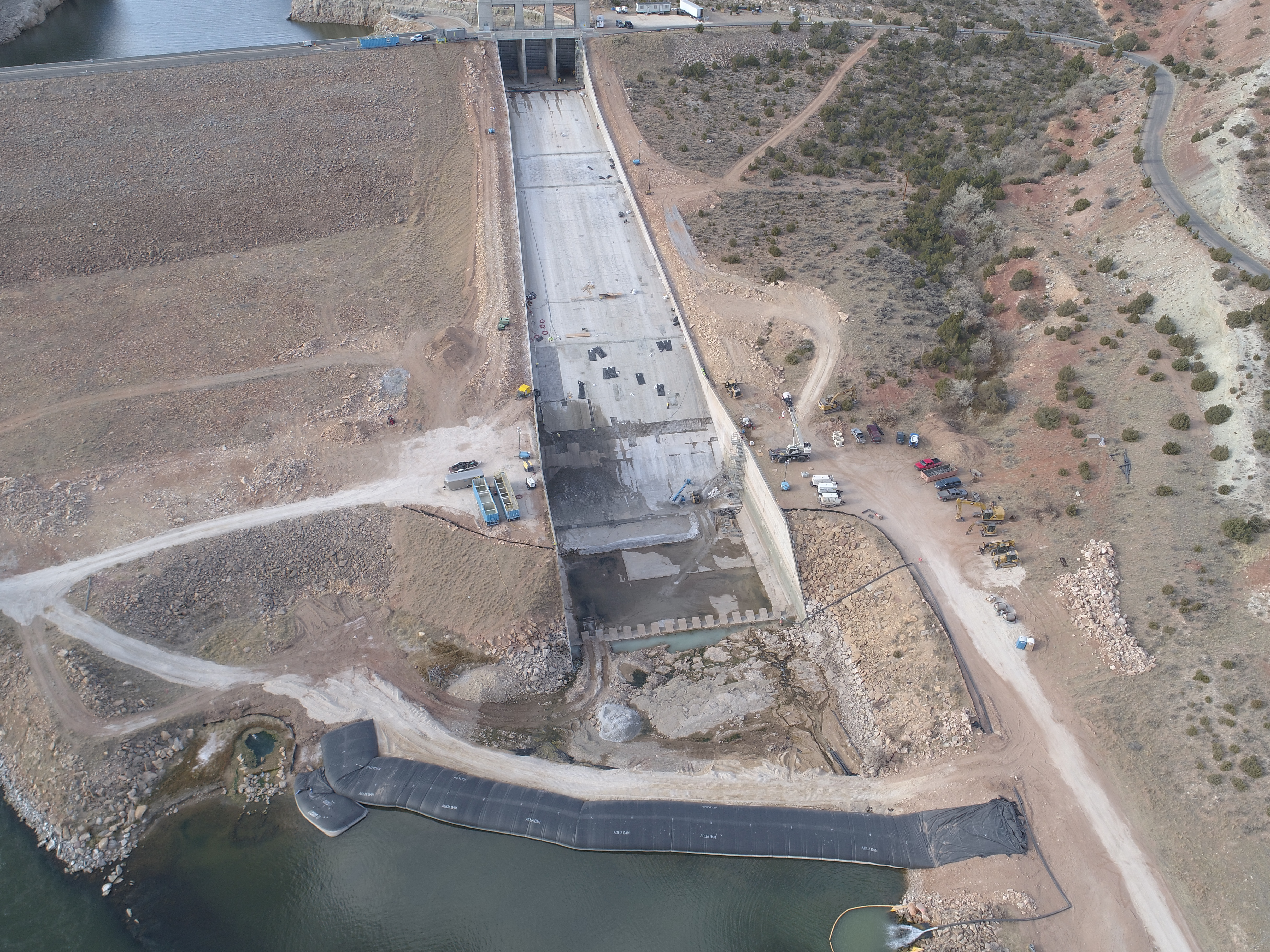
Aerial photo of the AquaDam cofferdam system dated: November 7, 2020
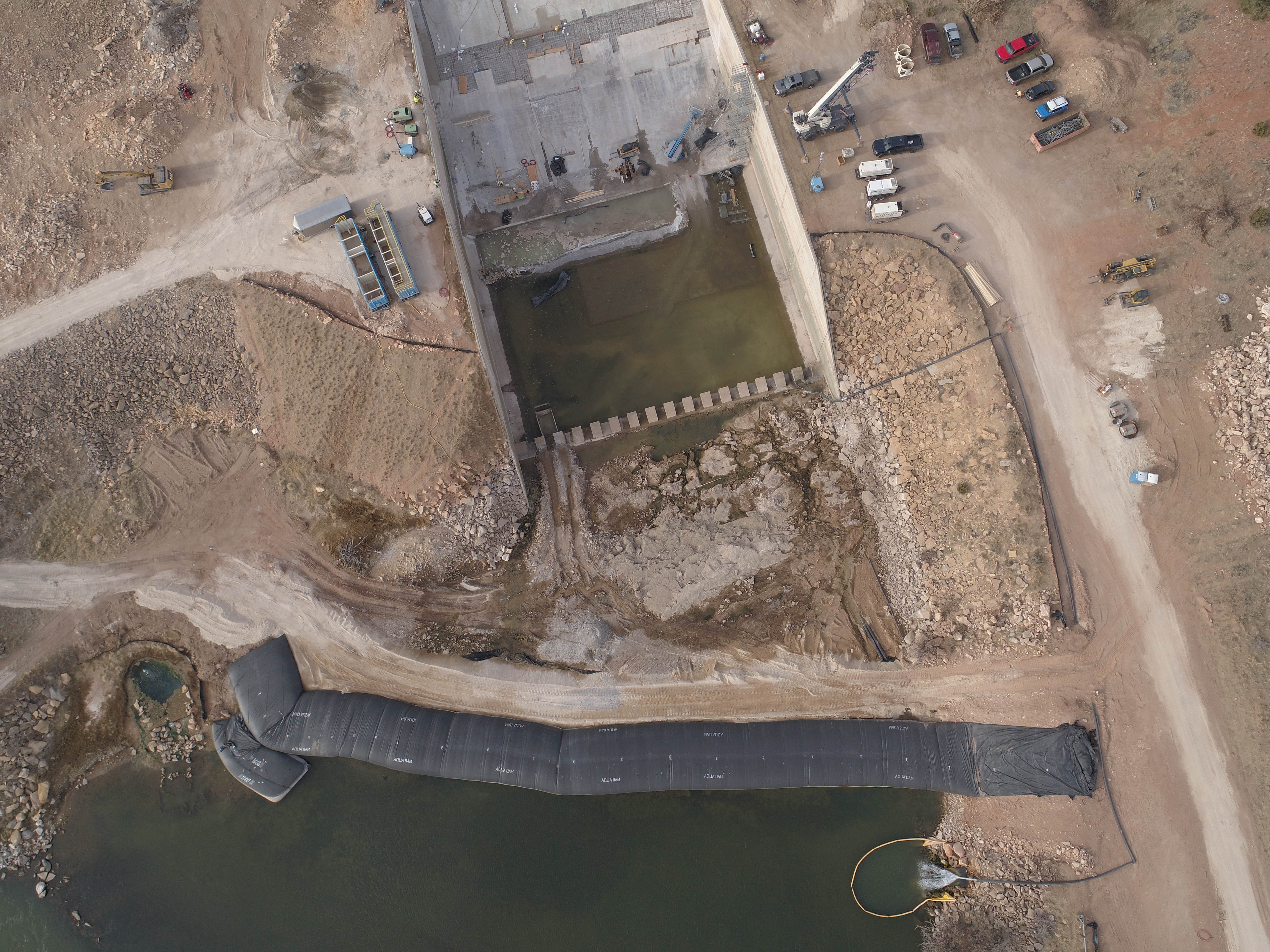
Aerial photo of the AquaDam cofferdam system dated: November 16, 2020
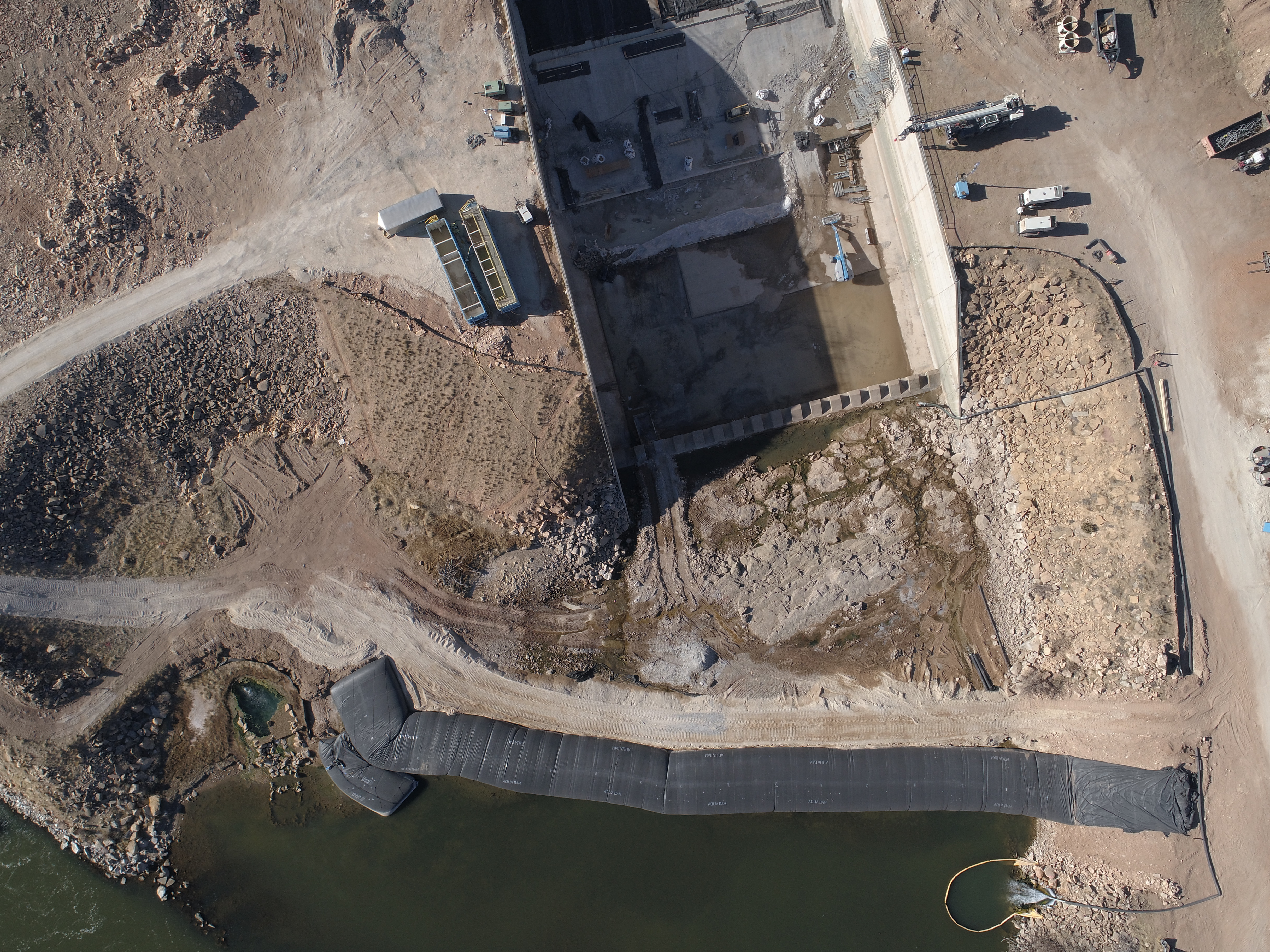
Aerial photo of the AquaDam cofferdam system dated: November 22, 2020
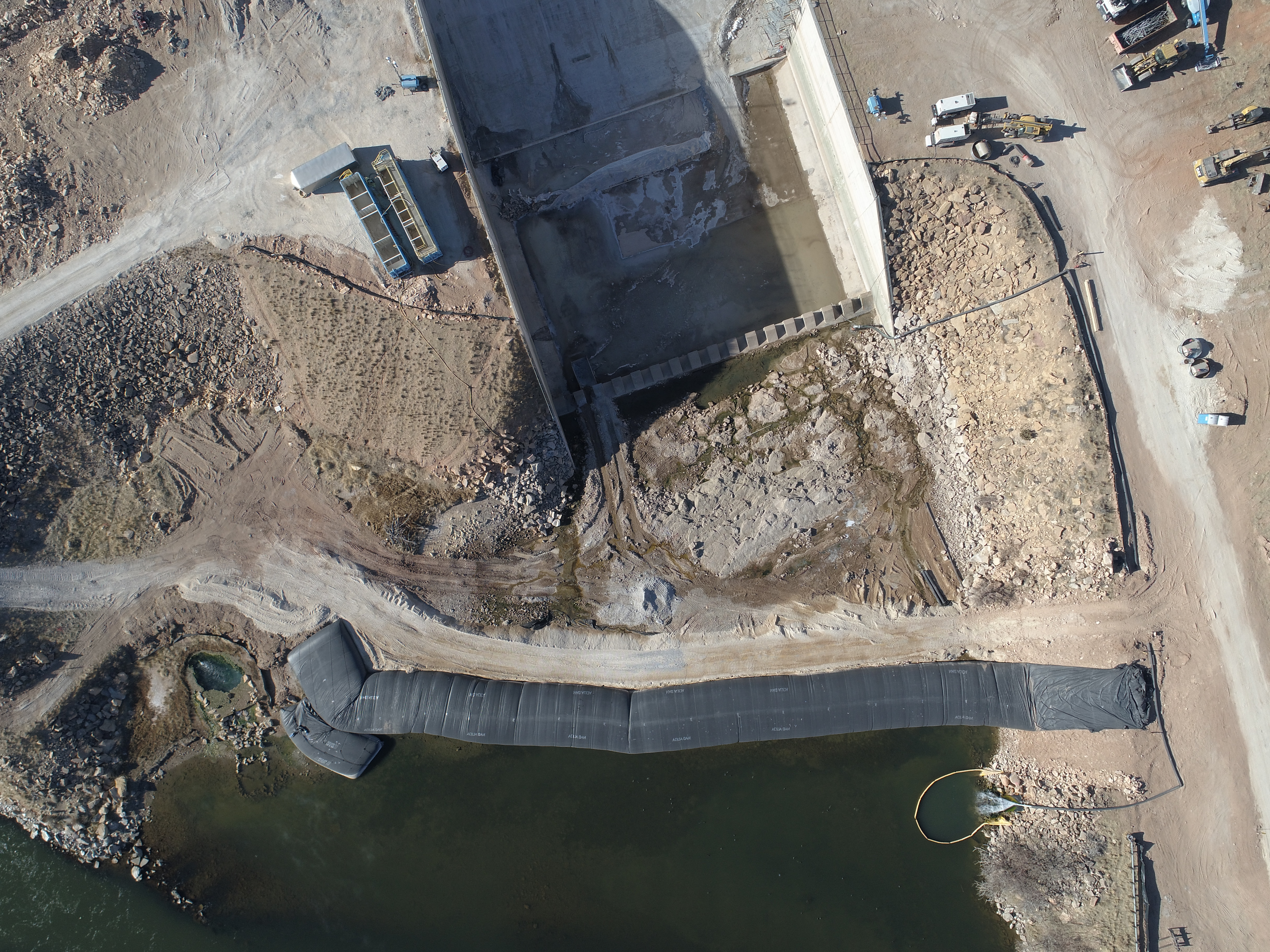
Aerial photo of the AquaDam cofferdam system dated: November 29, 2020
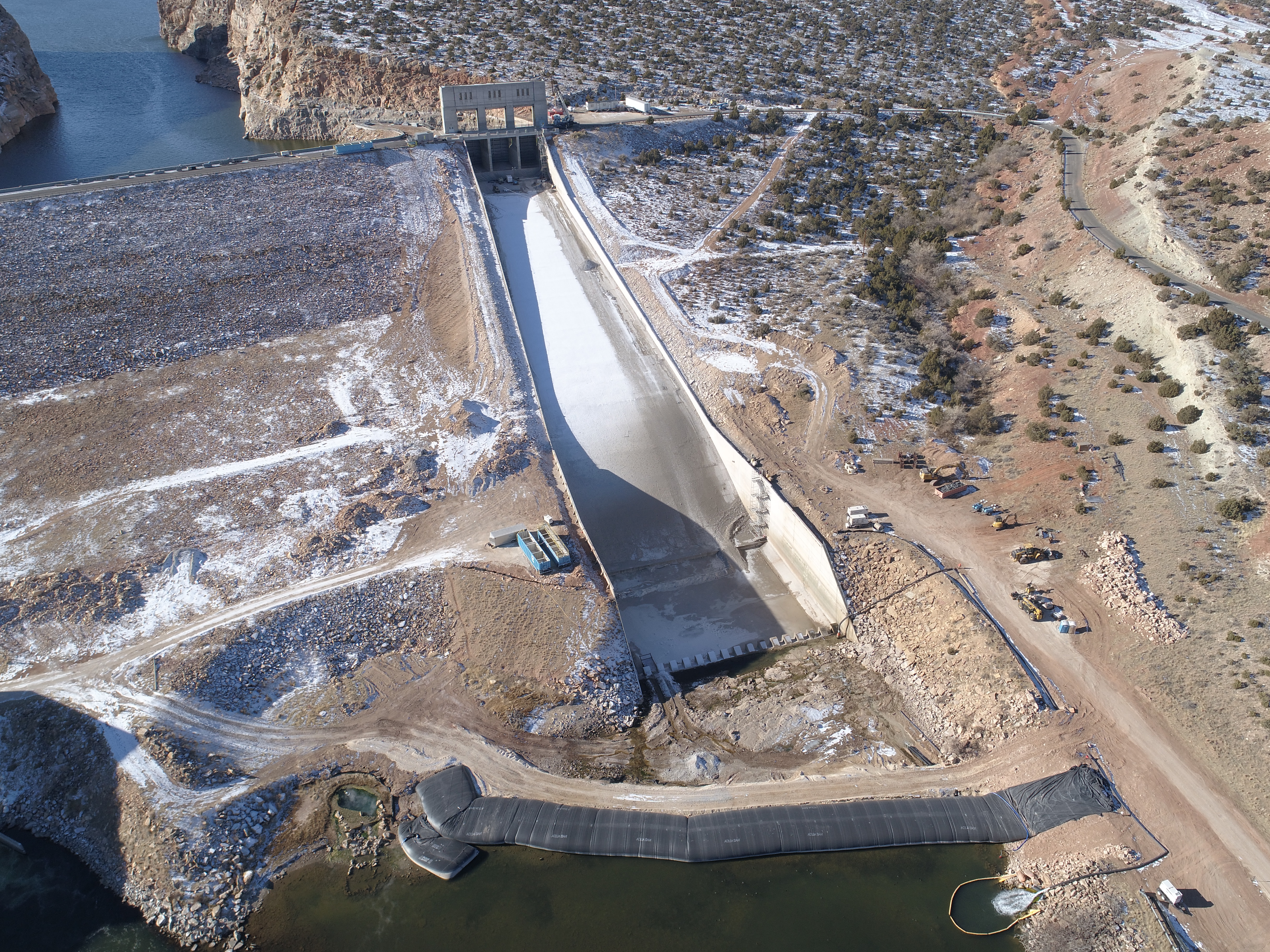
Aerial photo of the AquaDam cofferdam system dated: December 6, 2020
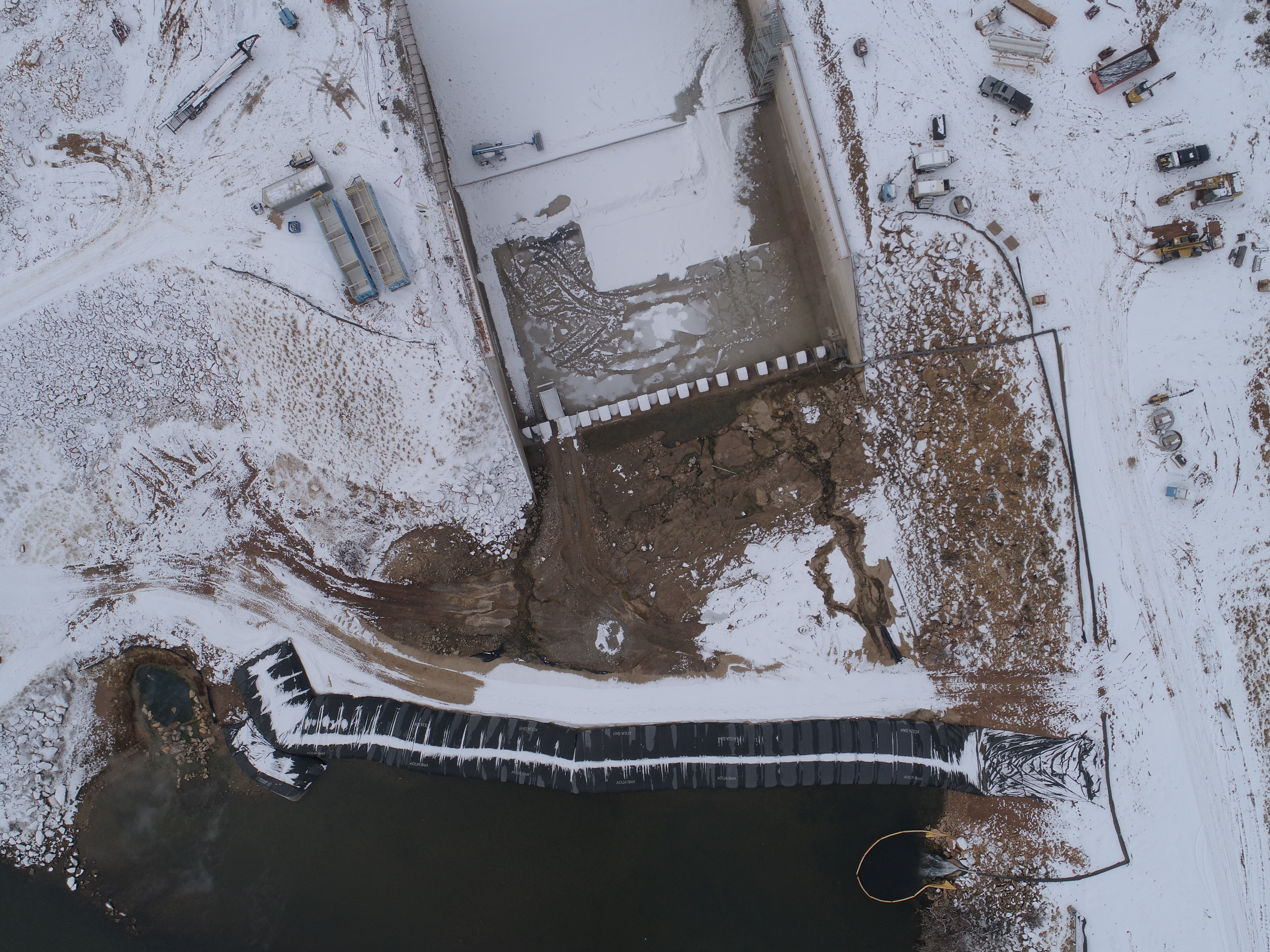
Aerial photo of the AquaDam cofferdam system dated: December 18, 2020
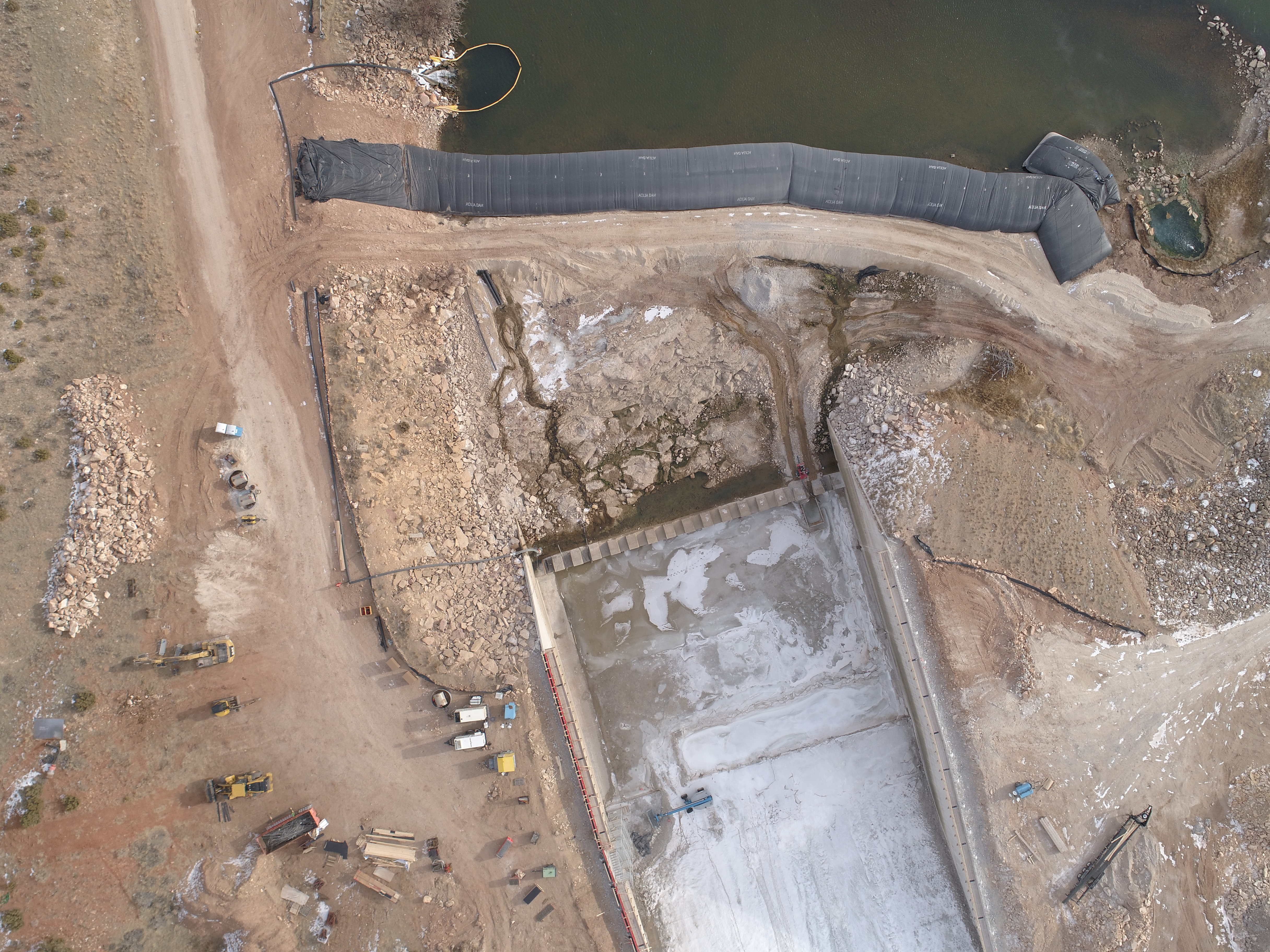
Aerial photo of the AquaDam cofferdam system dated: January 3, 2021
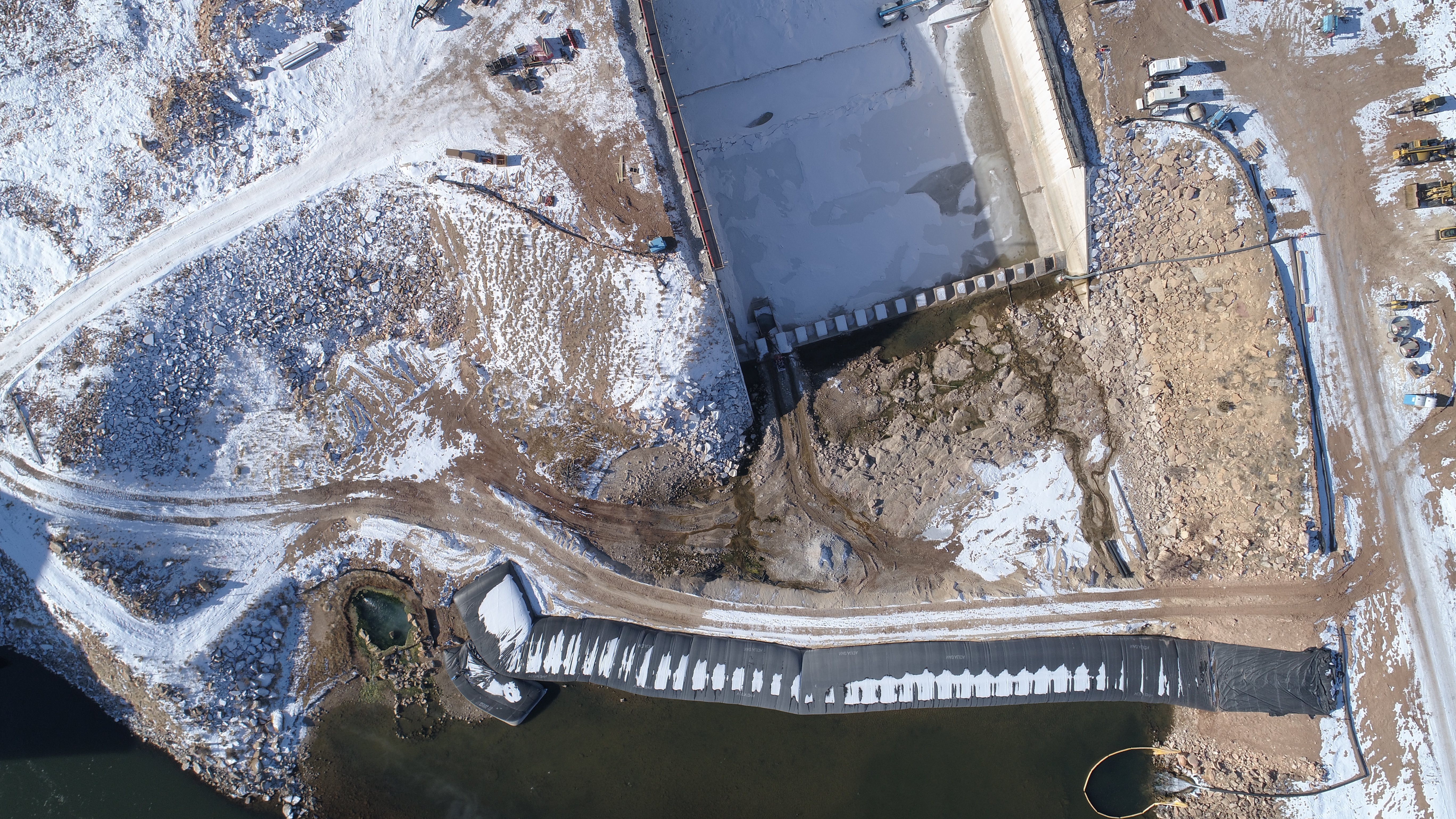
Aerial photo of the AquaDam cofferdam system dated: January 10, 2021

Aerial photo of the AquaDam cofferdam system dated: January 17, 2021
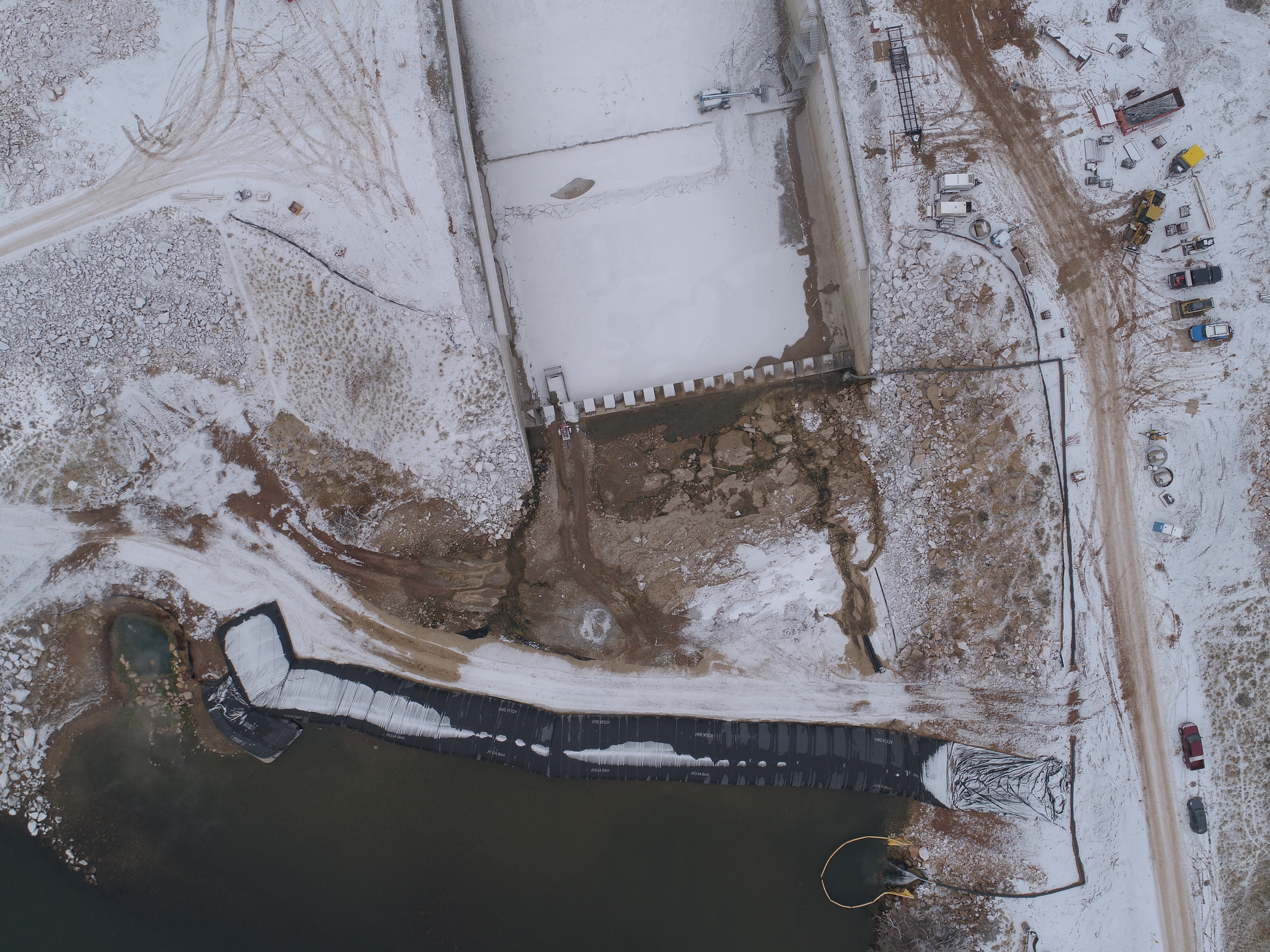
Aerial photo of the AquaDam cofferdam system dated: January 22, 2021
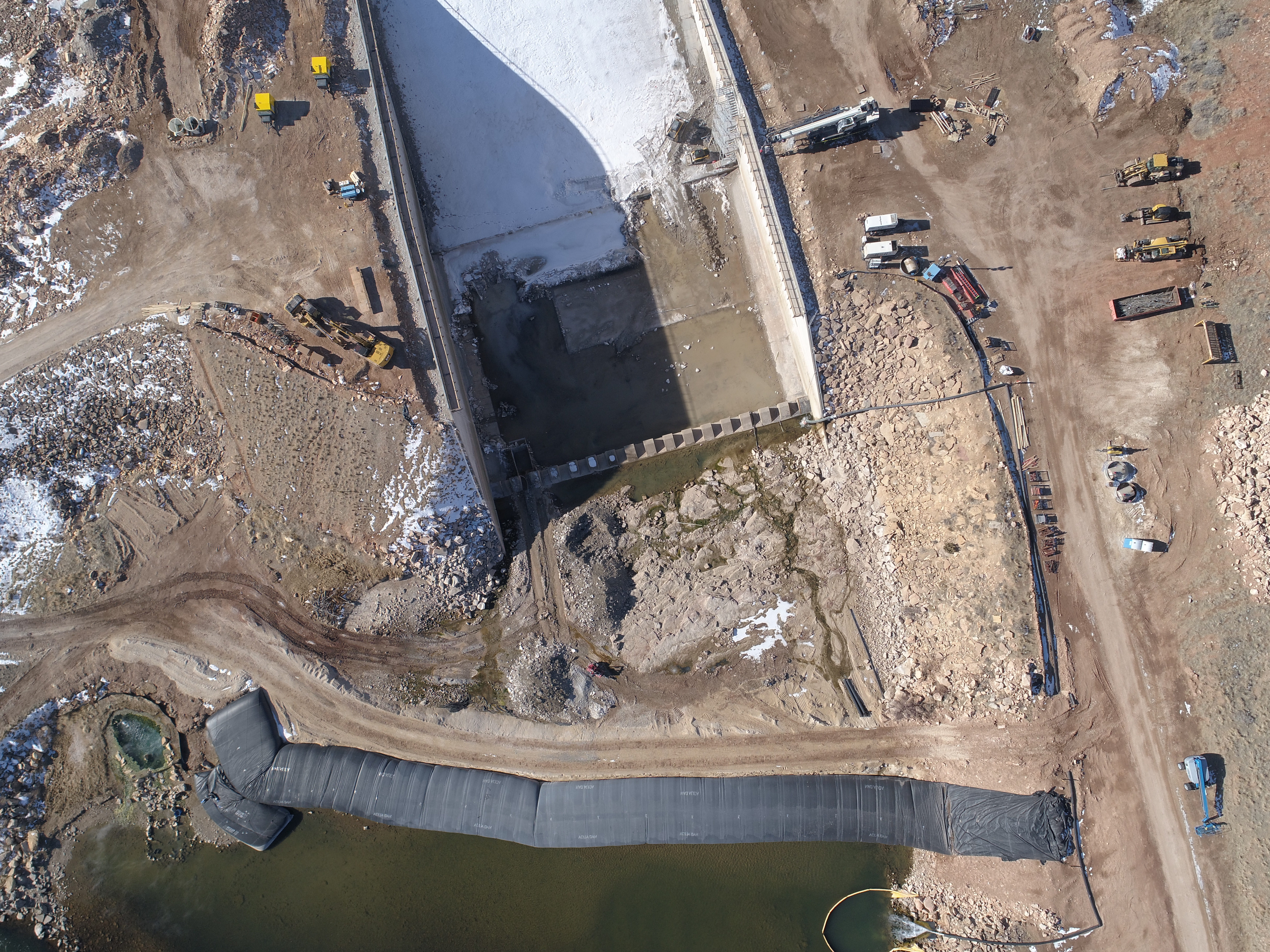
Aerial photo of the AquaDam cofferdam system dated: January 31, 2021
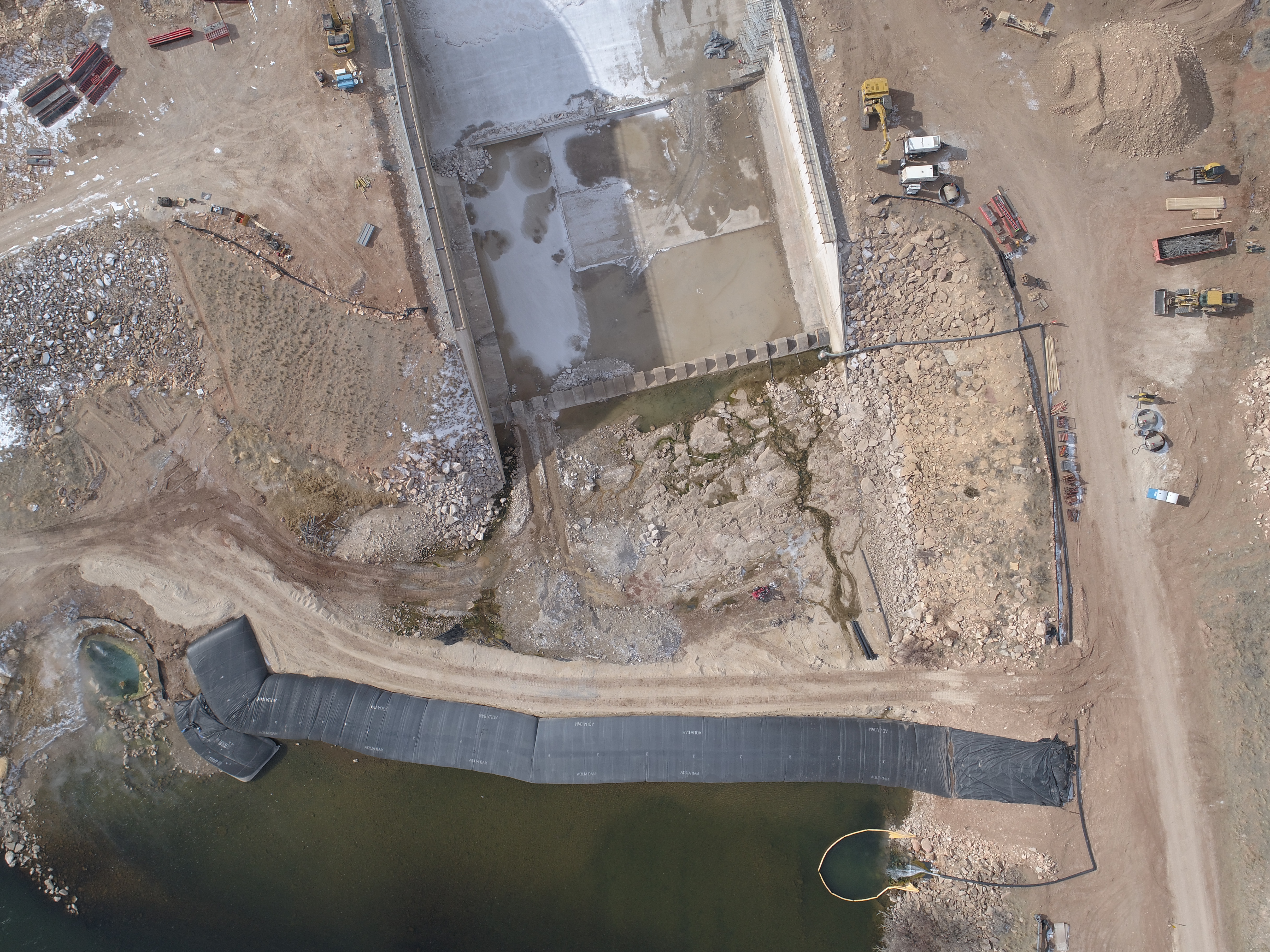
Aerial photo of the AquaDam cofferdam system dated: February 7, 2021
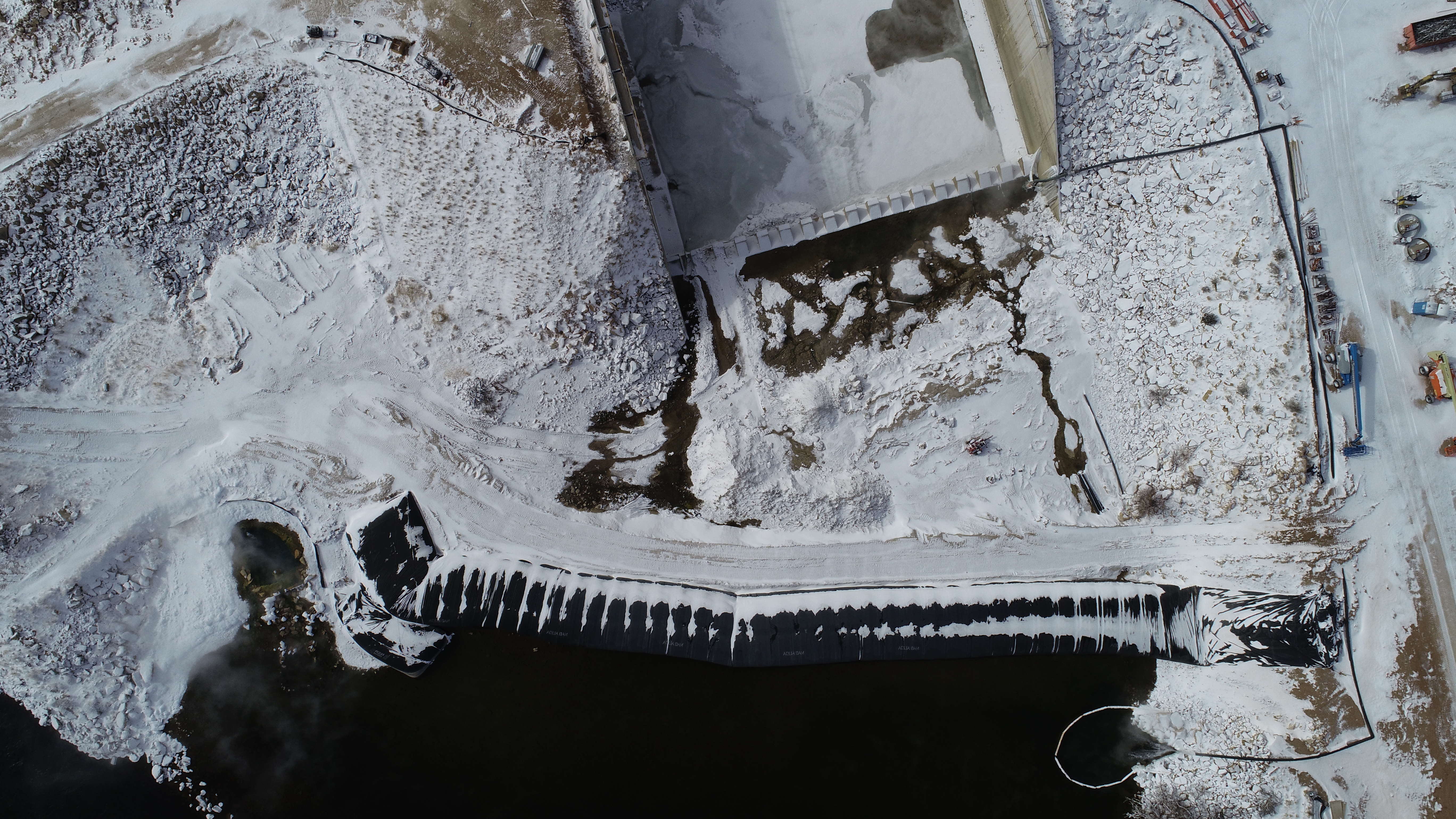
Aerial photo of the AquaDam cofferdam system dated: February 14, 2021.
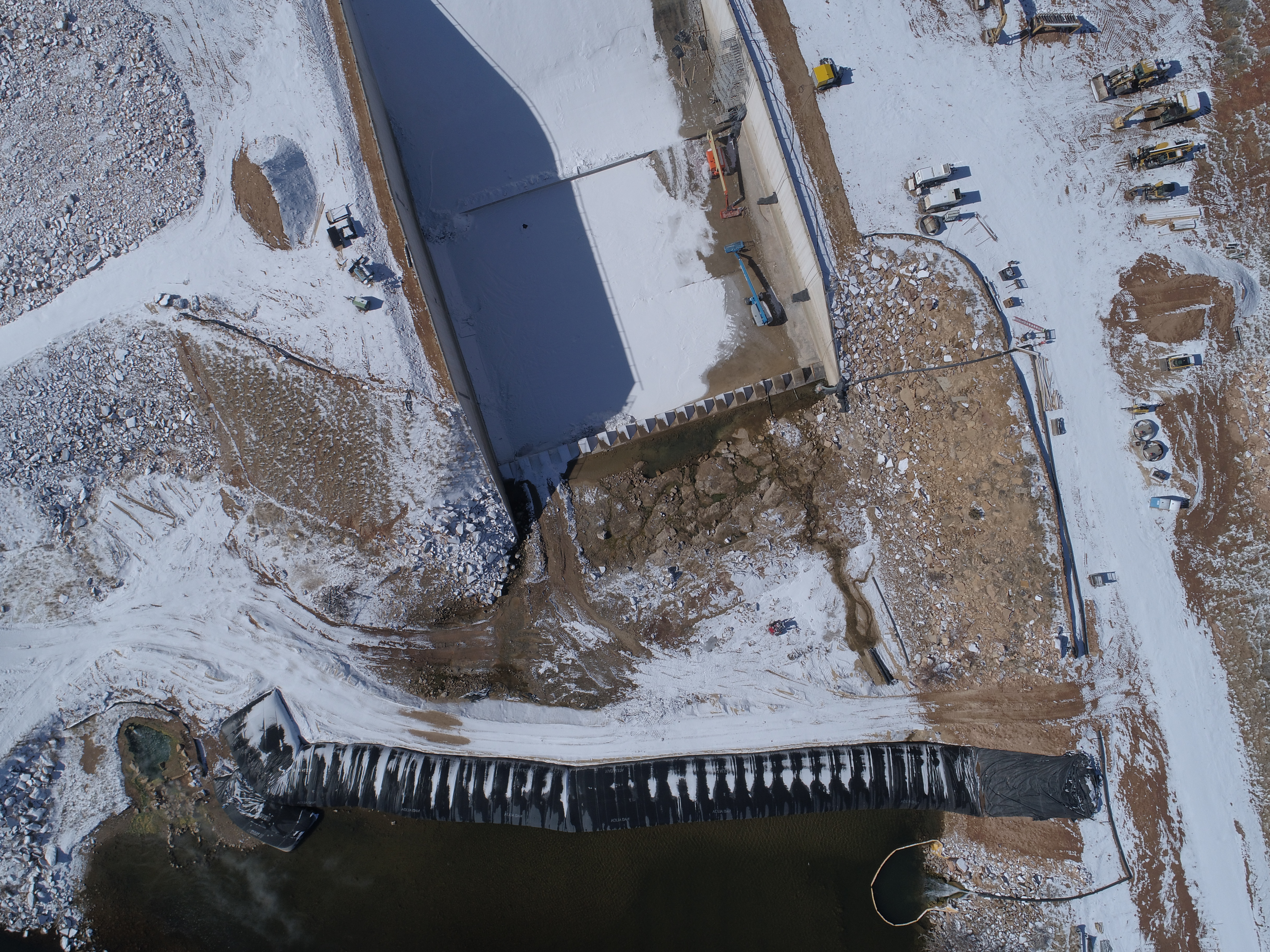
Aerial photo of the AquaDam cofferdam system dated: February 21, 2021
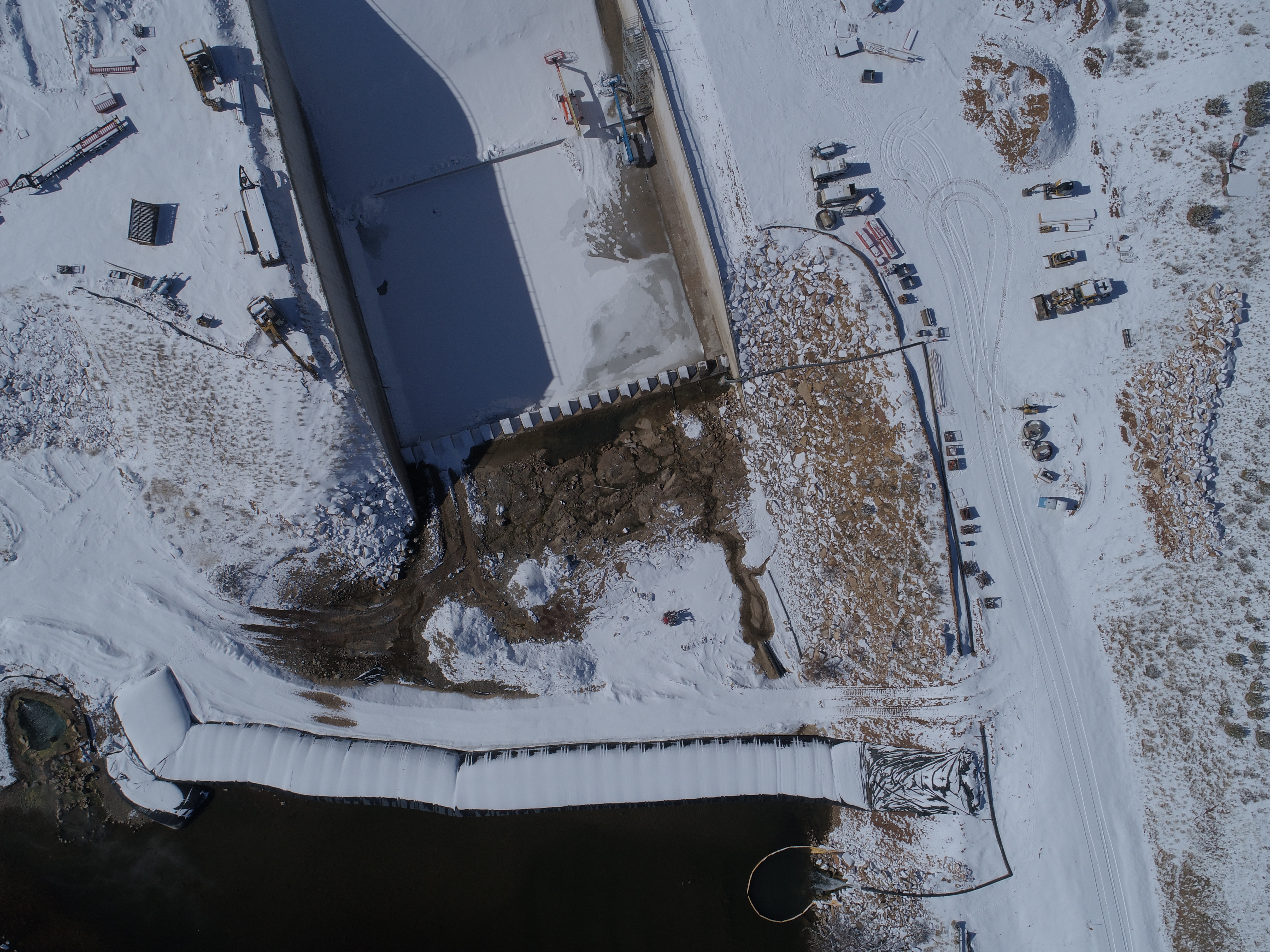
Aerial photo of the AquaDam cofferdam system dated: February 28, 2021
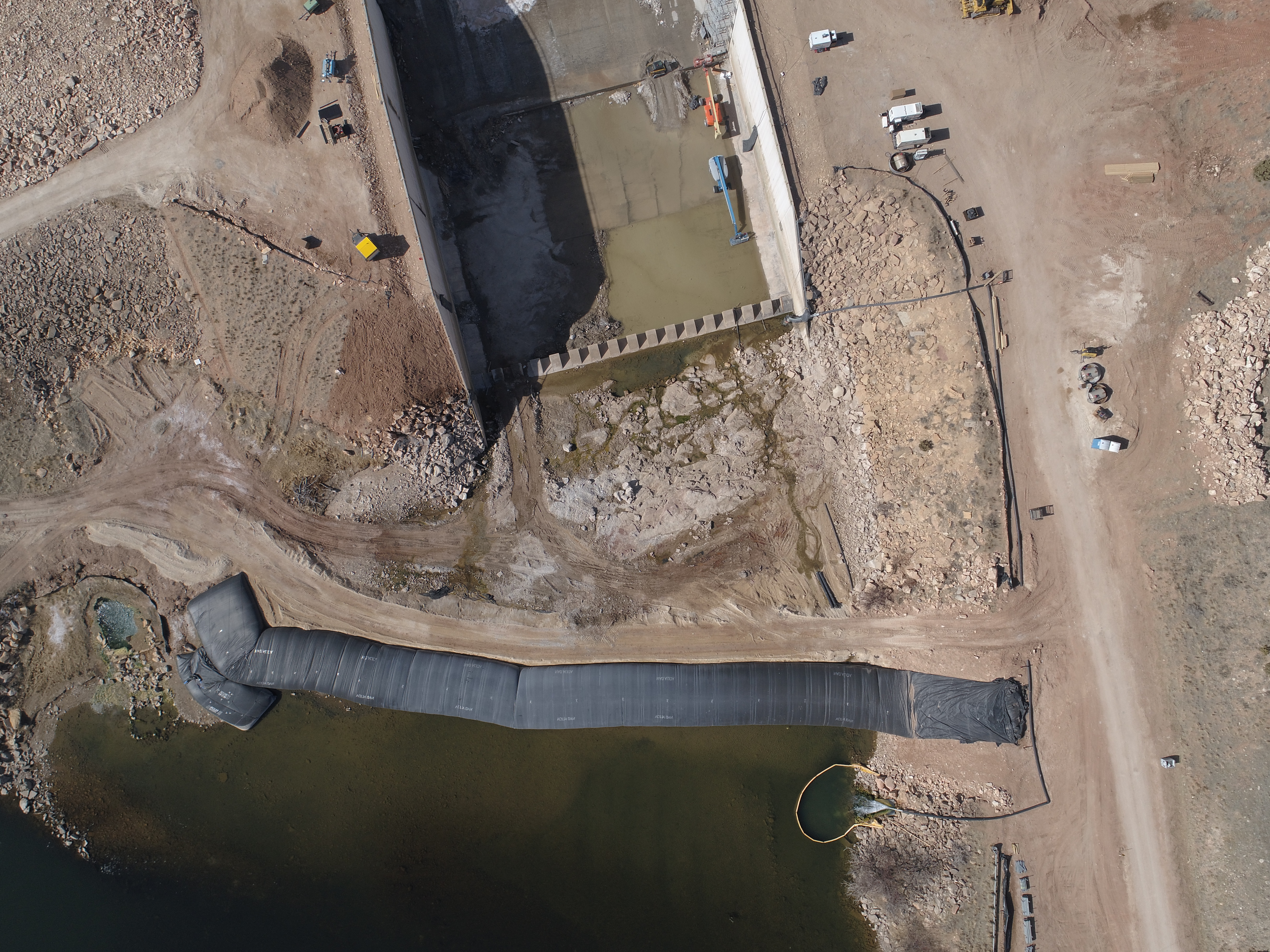
Aerial photo of the AquaDam cofferdam system dated: March 7, 2021
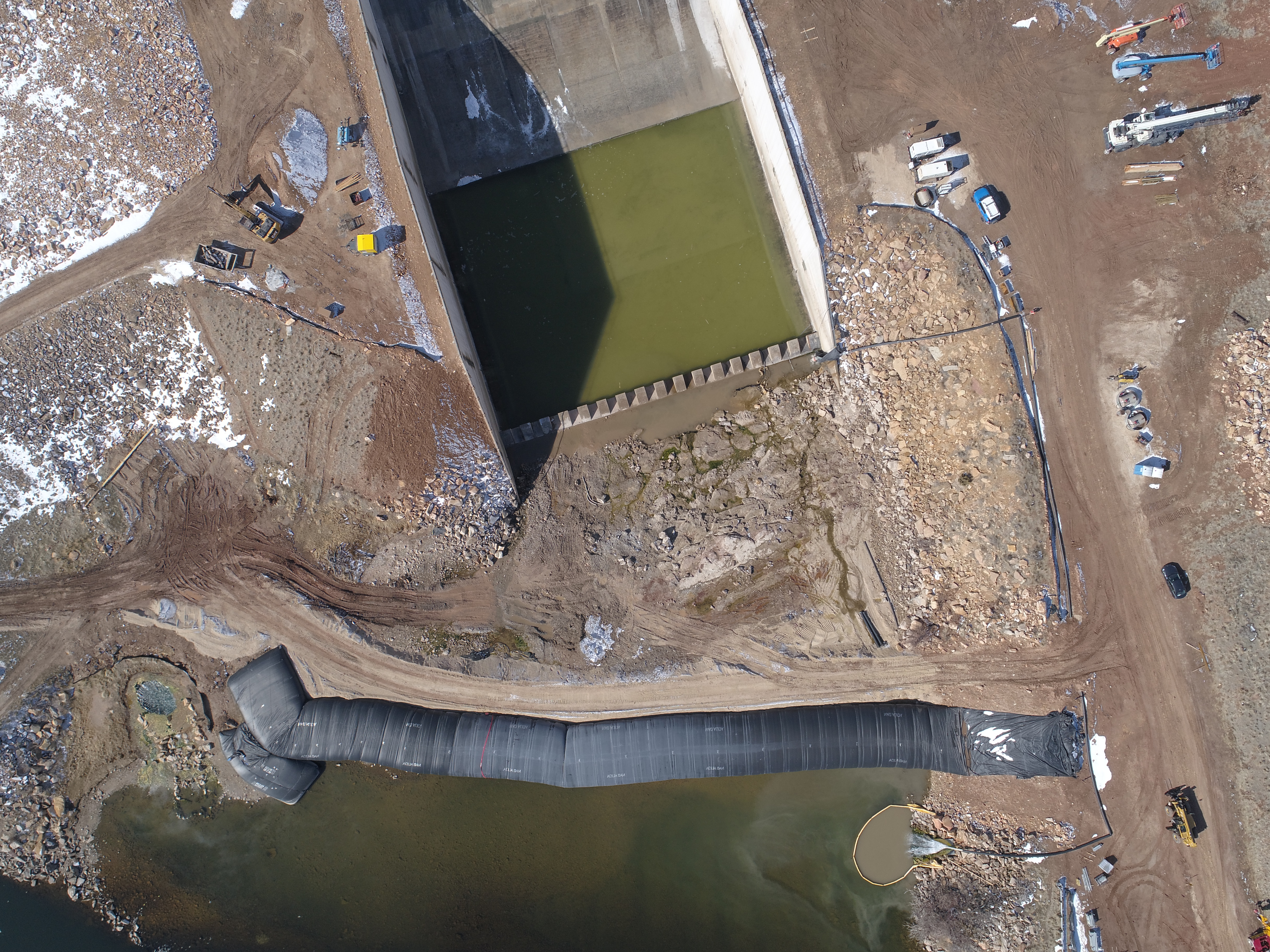
Aerial photo of the AquaDam cofferdam system dated: March 17, 2021
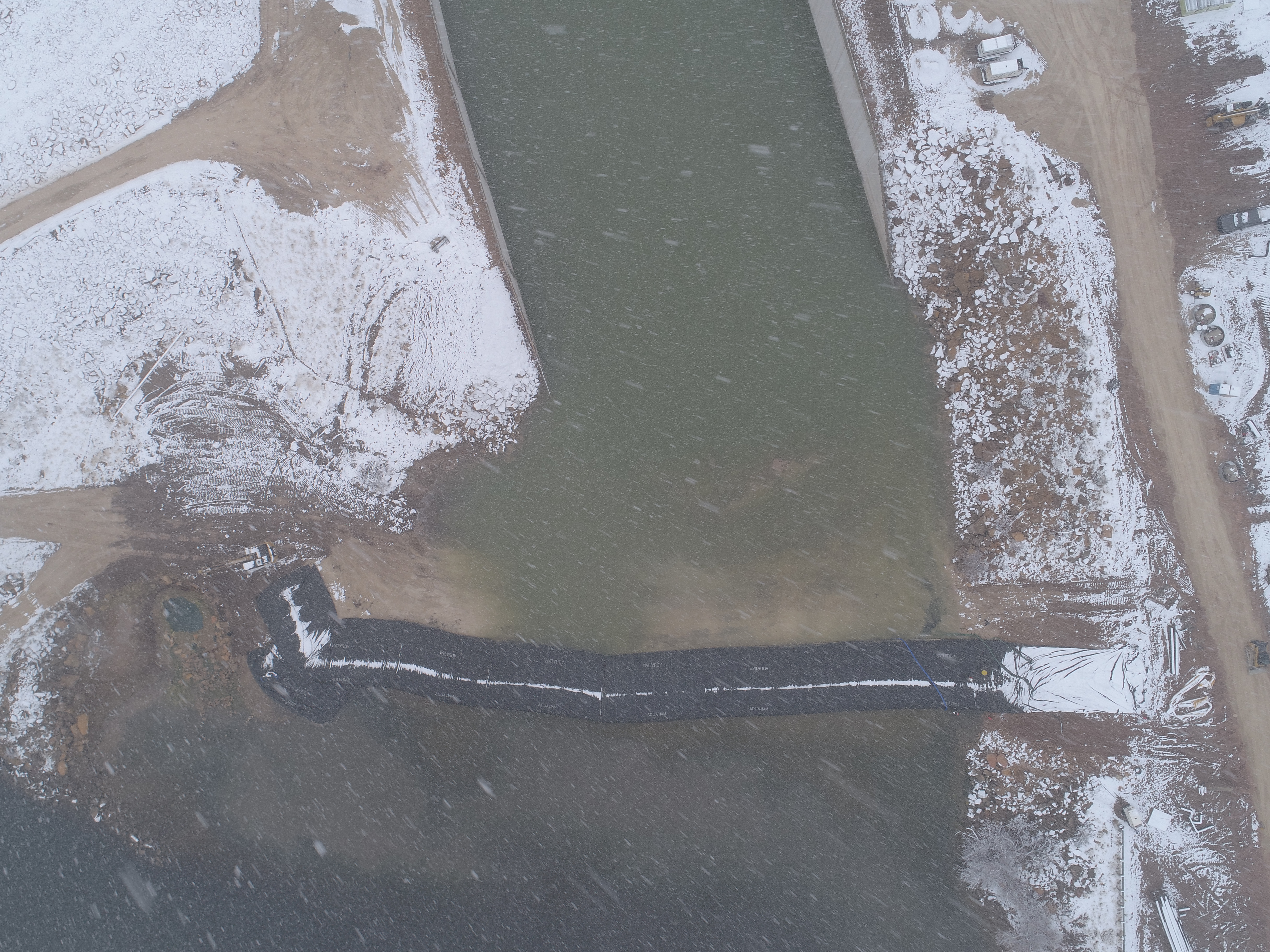
Aerial photo of the AquaDam cofferdam system dated: March 23, 2021. The work area has been re-watered.
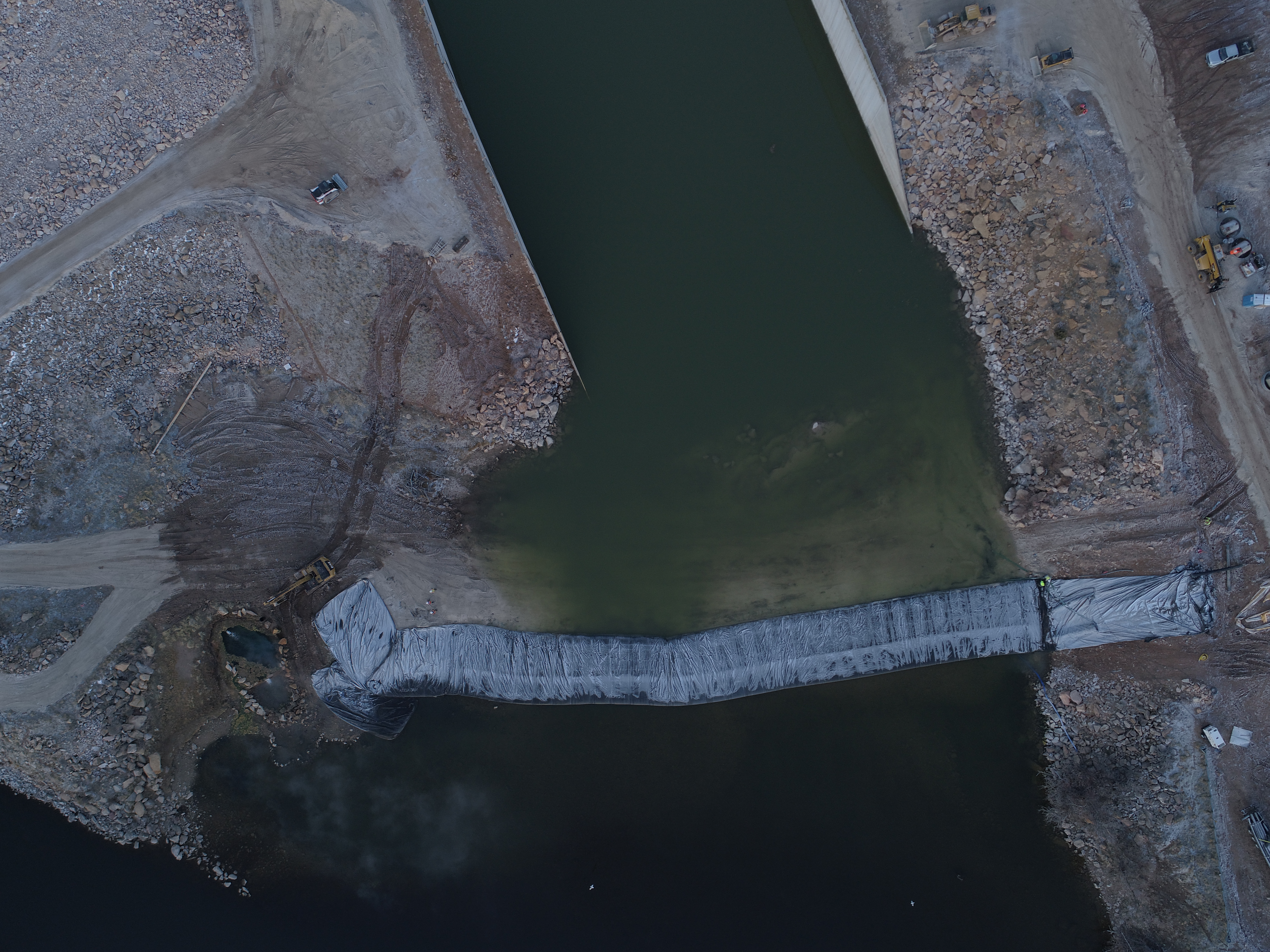
Aerial photo of the AquaDam cofferdam system dated: March 24, 2021. Re-watering the work area is critical for removing an AquaDam.
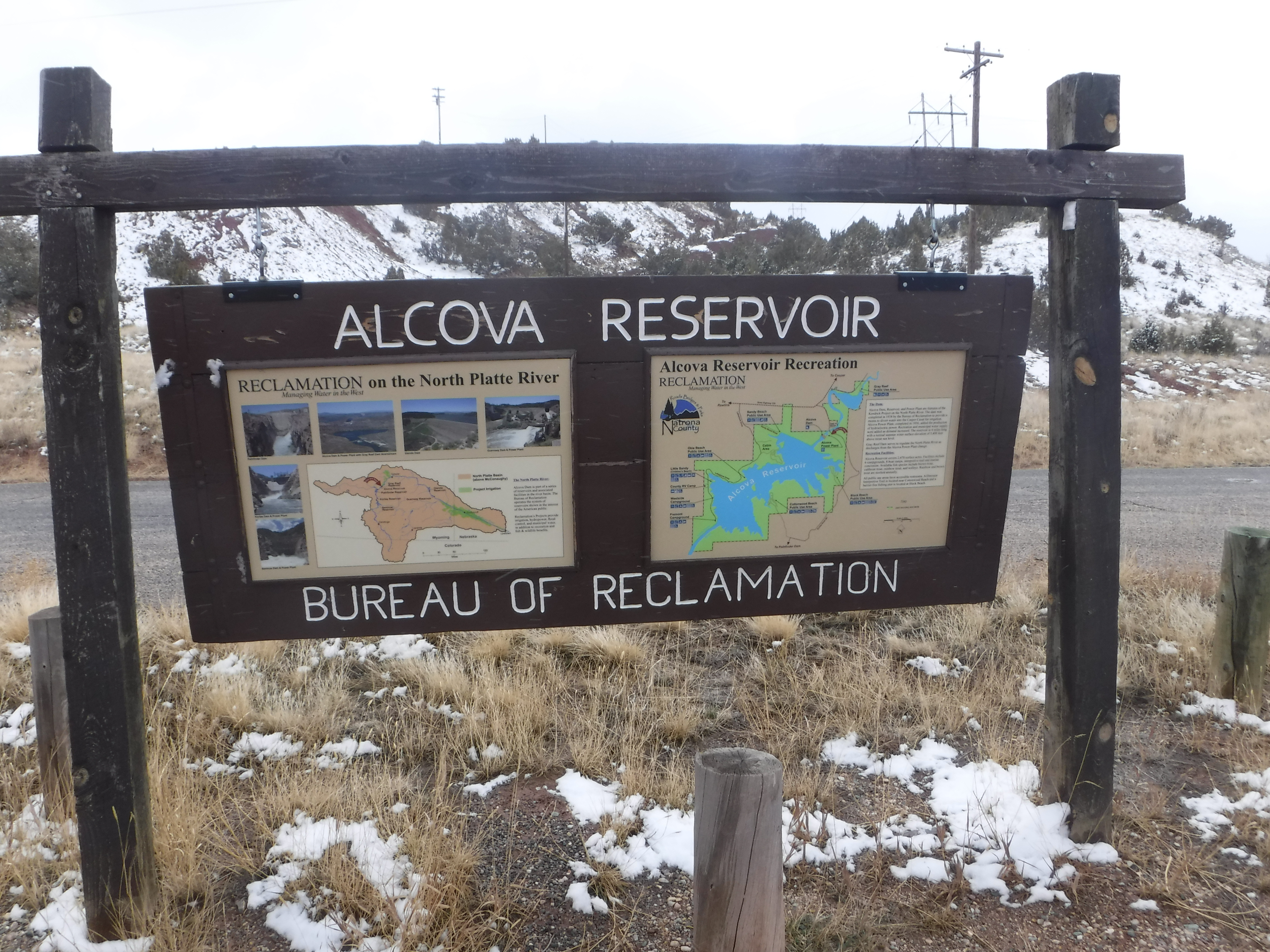
Now that the work is done the AquaDam cofferdam system can be removed.
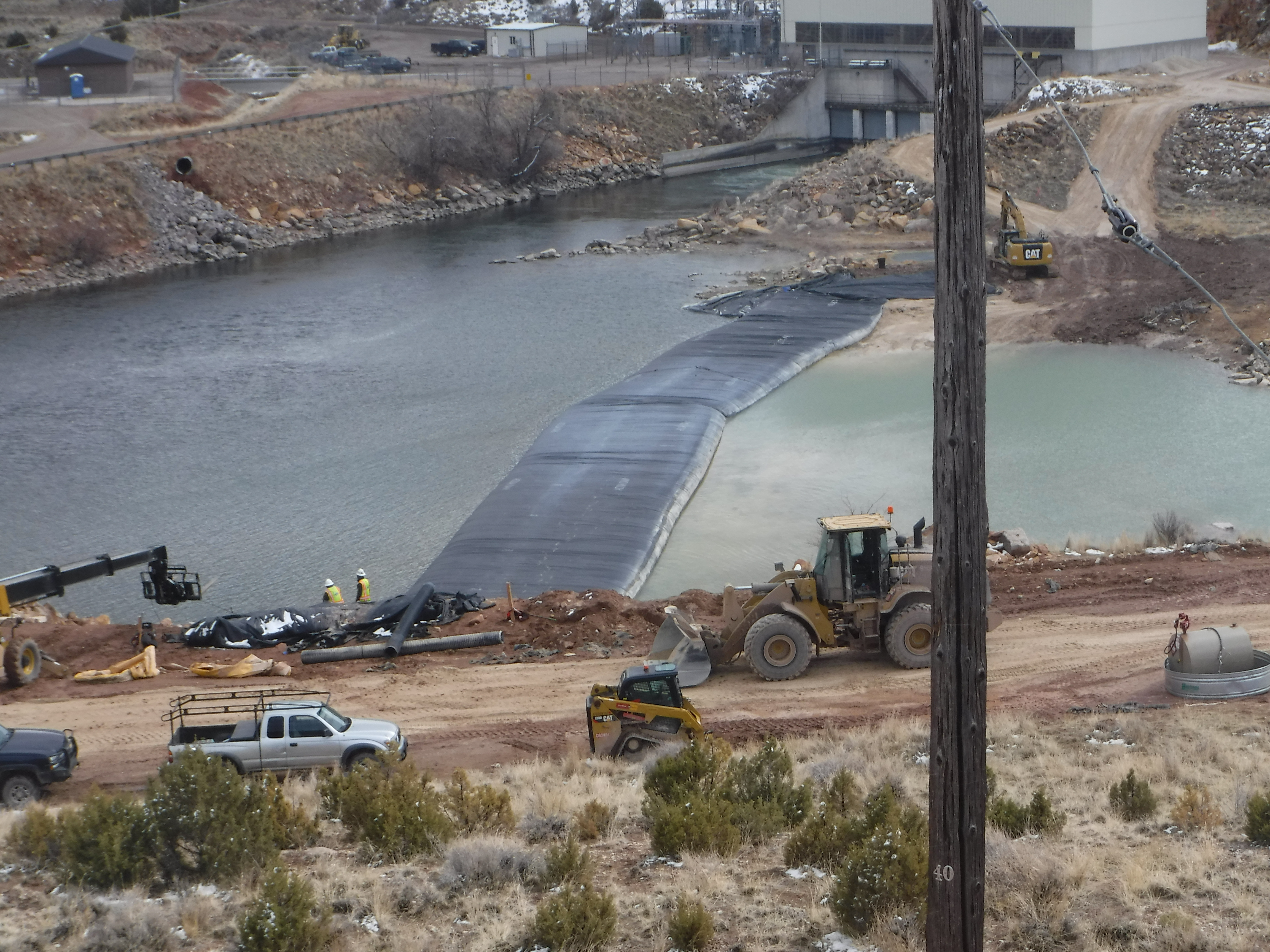
When removing an AquaDam it is important to re-water the work area first. This will equal the pressure on both sides.
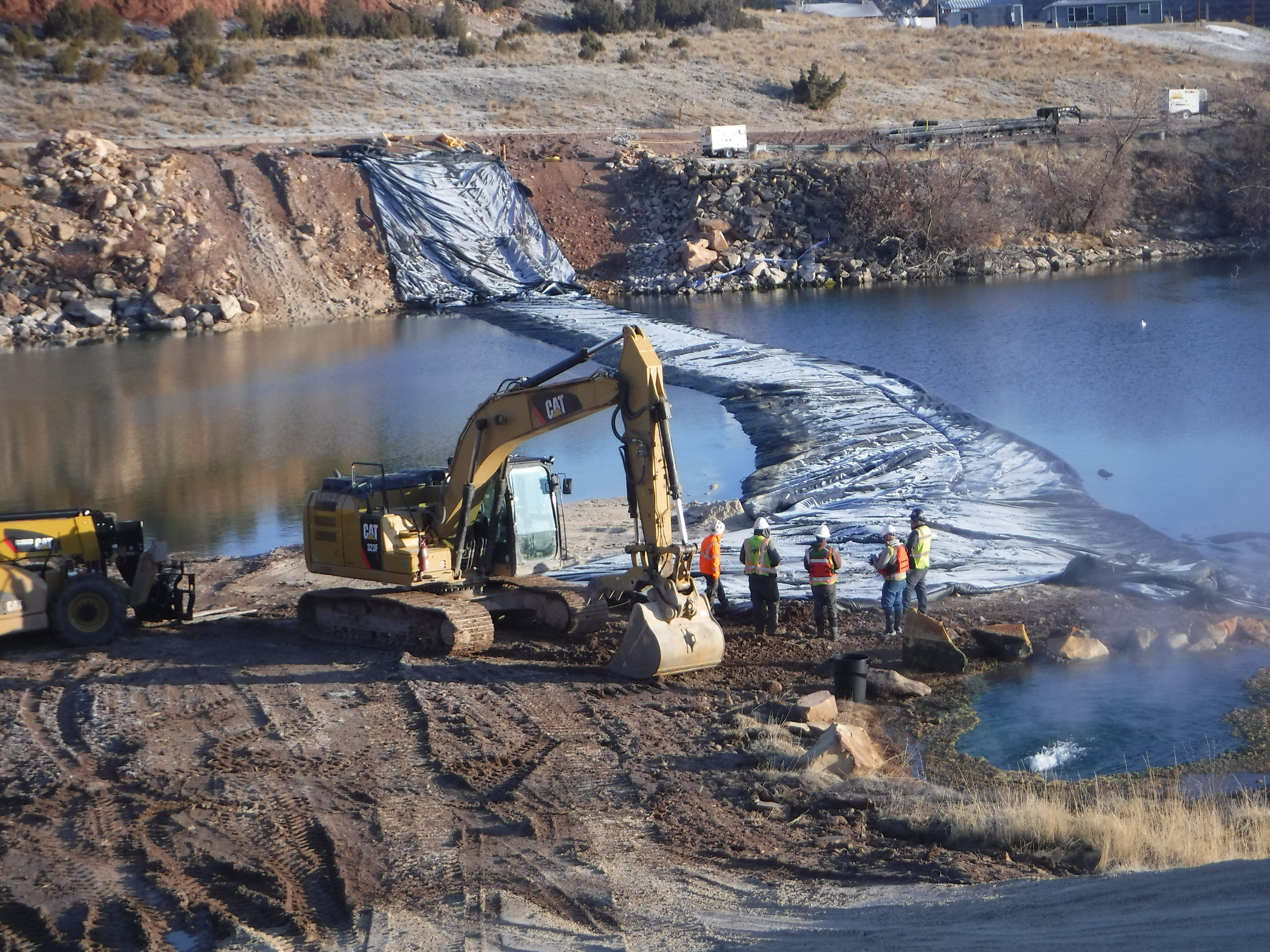
As much water inside of the AquaDam should be removed as possible. Lowering the fill-tubes (if possible) into the body of water works best. Suction hoses (with no sharp metal ends) can be placed into the fill-tubes to reduce the volume of water inside of the AquaDam.
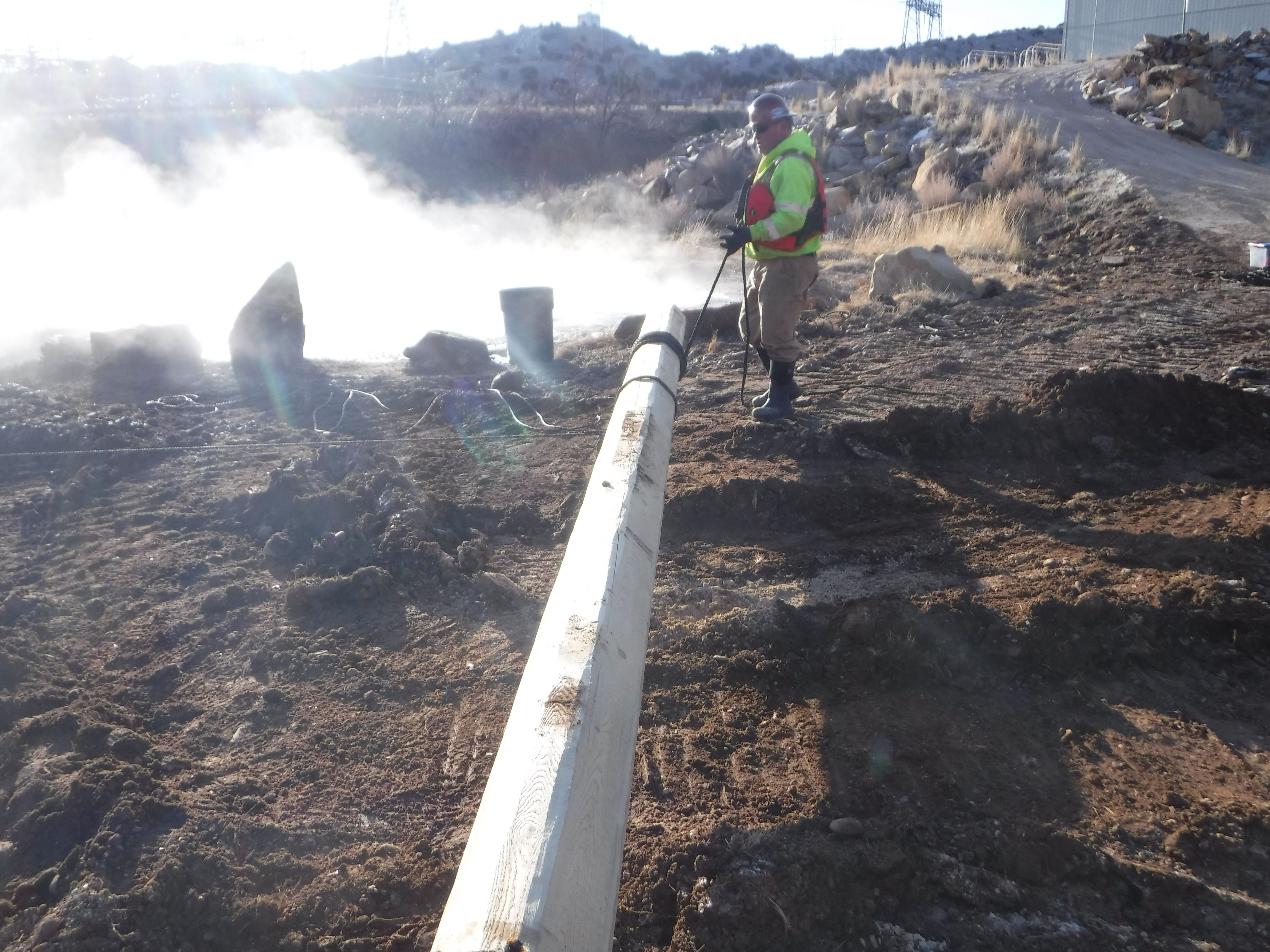
Attaching a log to the closed end of a SCE AquaDam will help with the removal process. The AquaDam can be rolled-up onto the log for ease of removal, draining, and transportation.
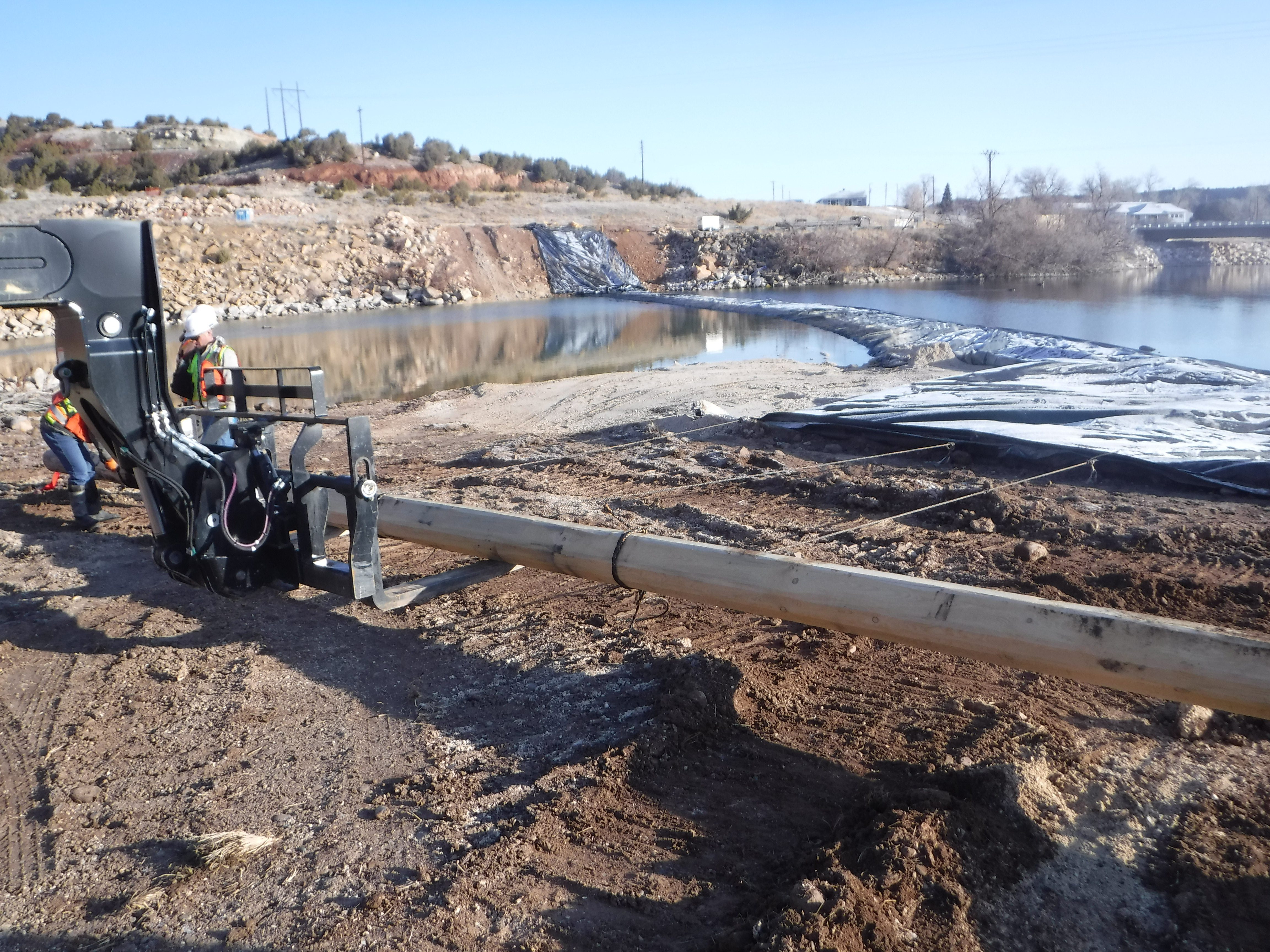
Workers have attached ropes to both the closed end (AquaDam) and the log, then they will roll the log and dam together.
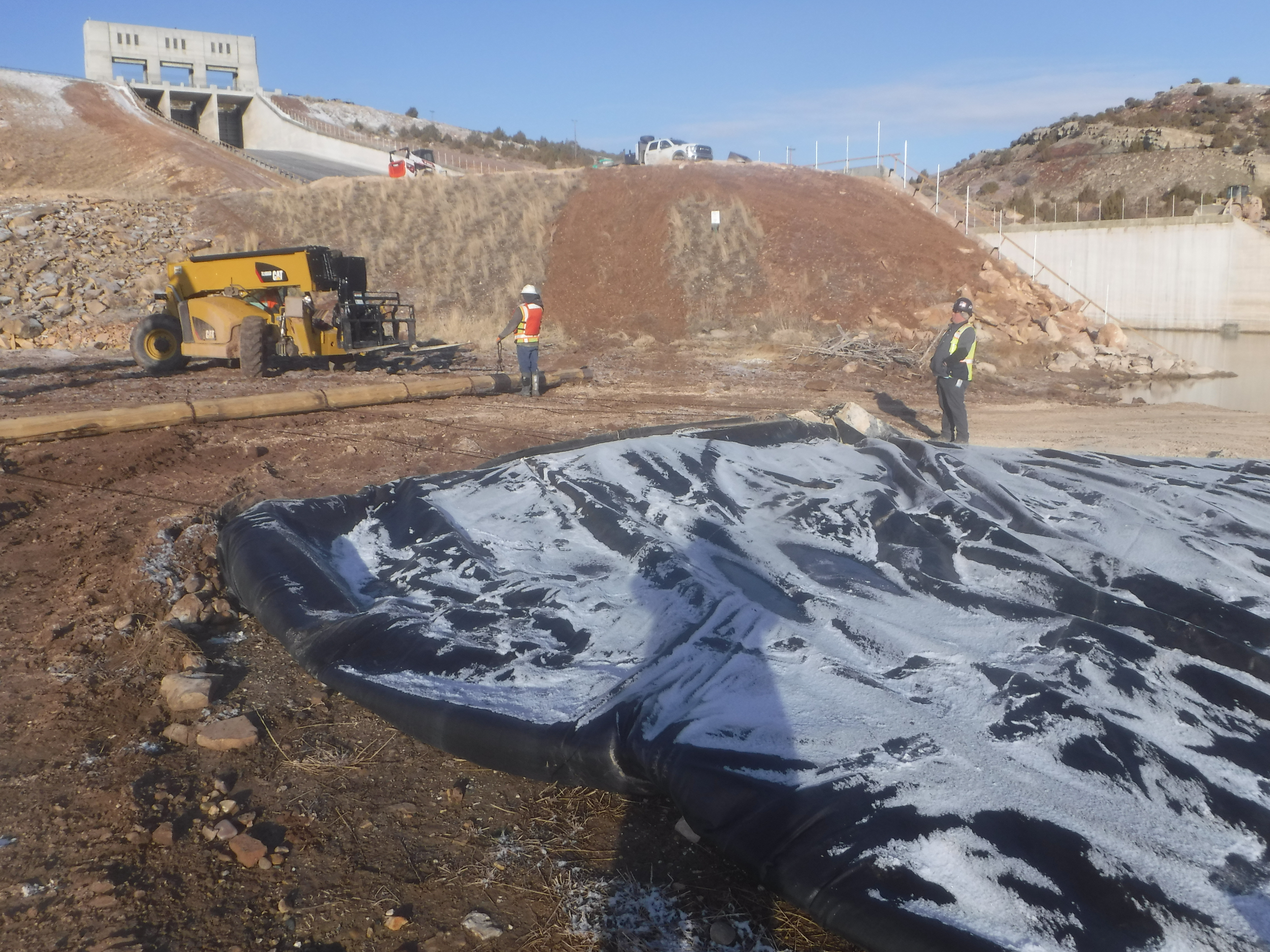
Another angle showing the log used to remove the 12ft tall SCE AquaDam.
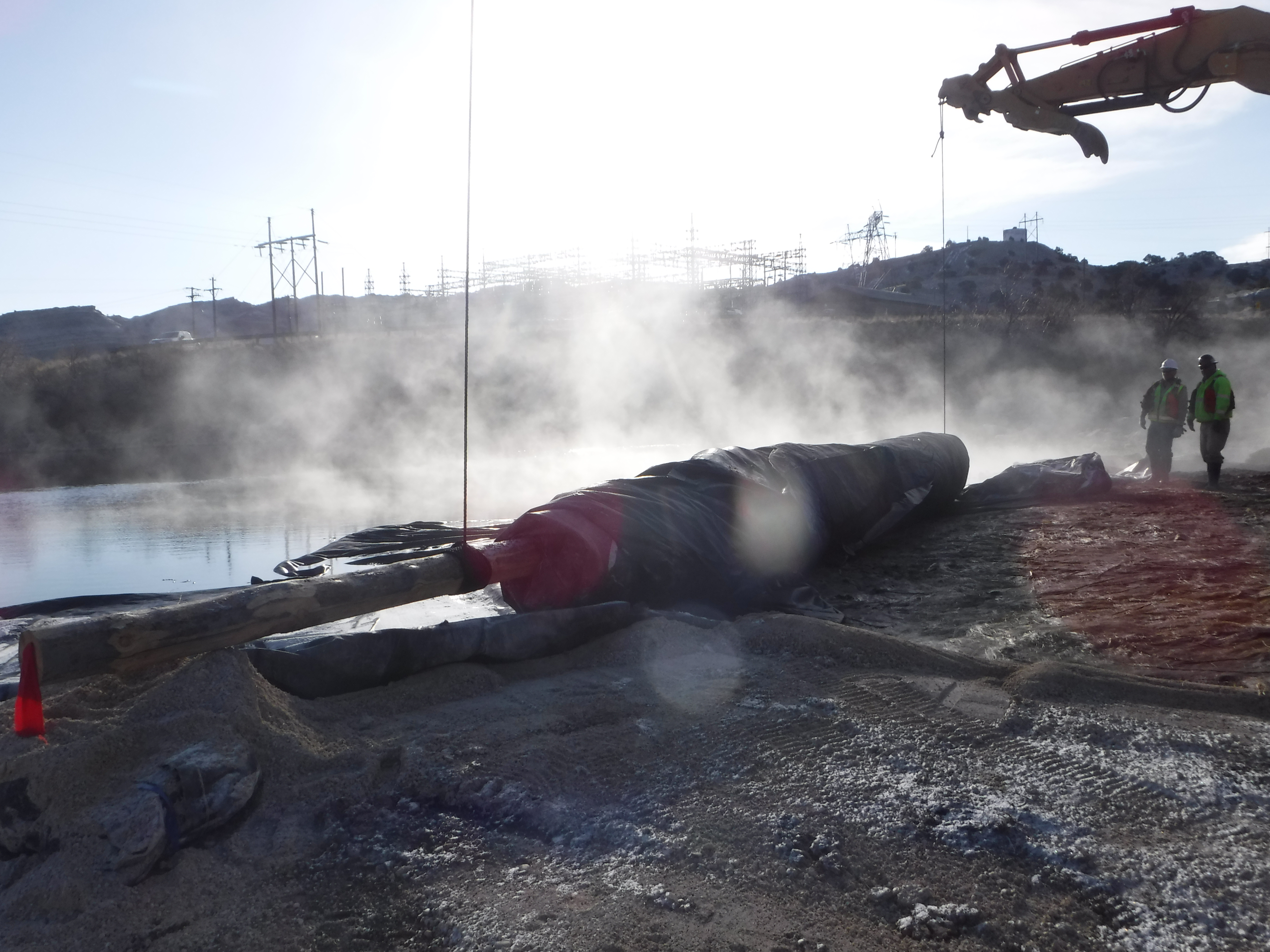
The AquaDam and log are now rolling together. Ropes were fashioned to the ends of the log so that when lifted/pulled the ropes would roll the log in the direction to roll-up the AquaDam from the closed end toward the open end.
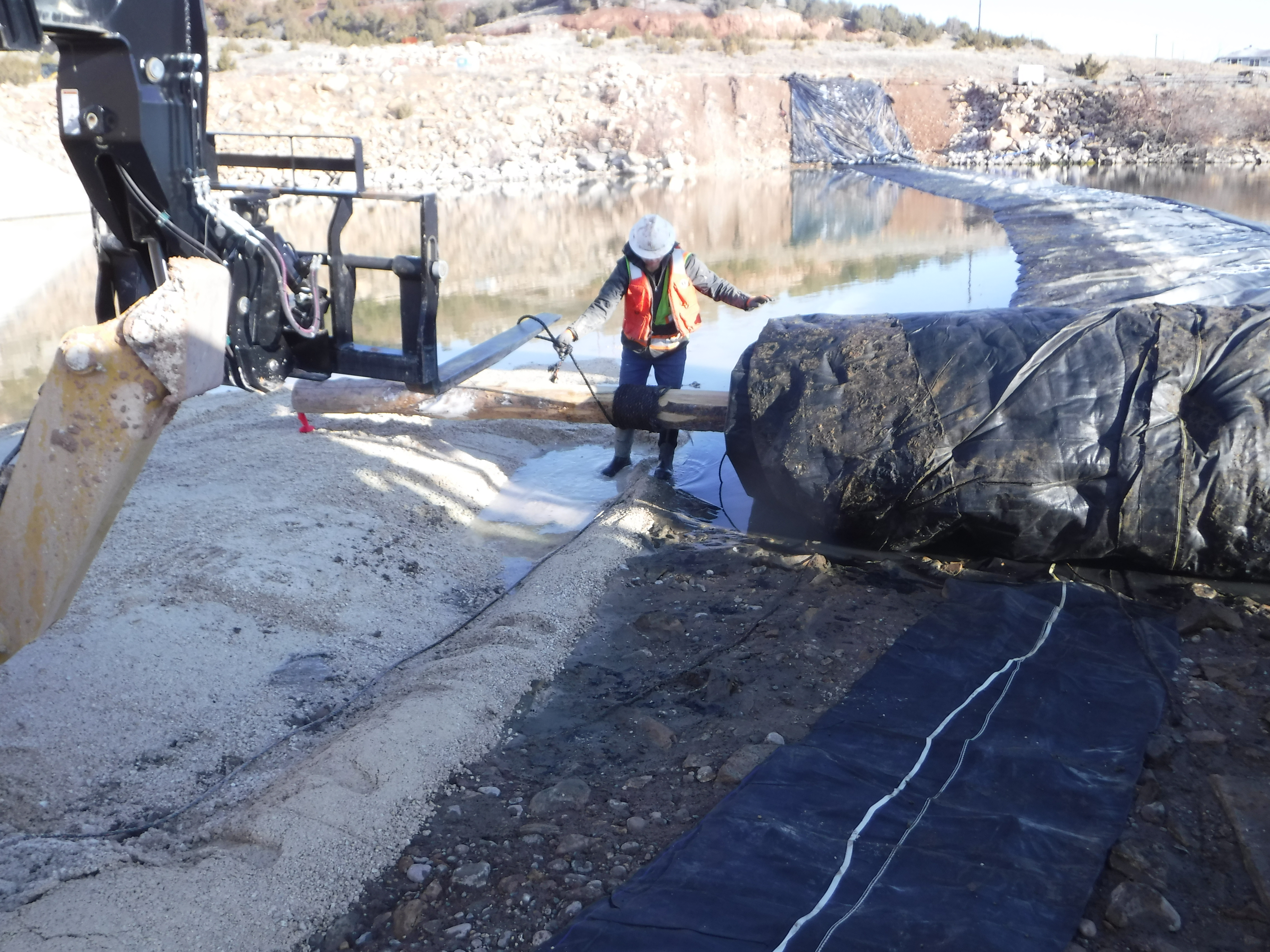
The rope on the ends of the log can be re-wrapped after its length has been exhausted.
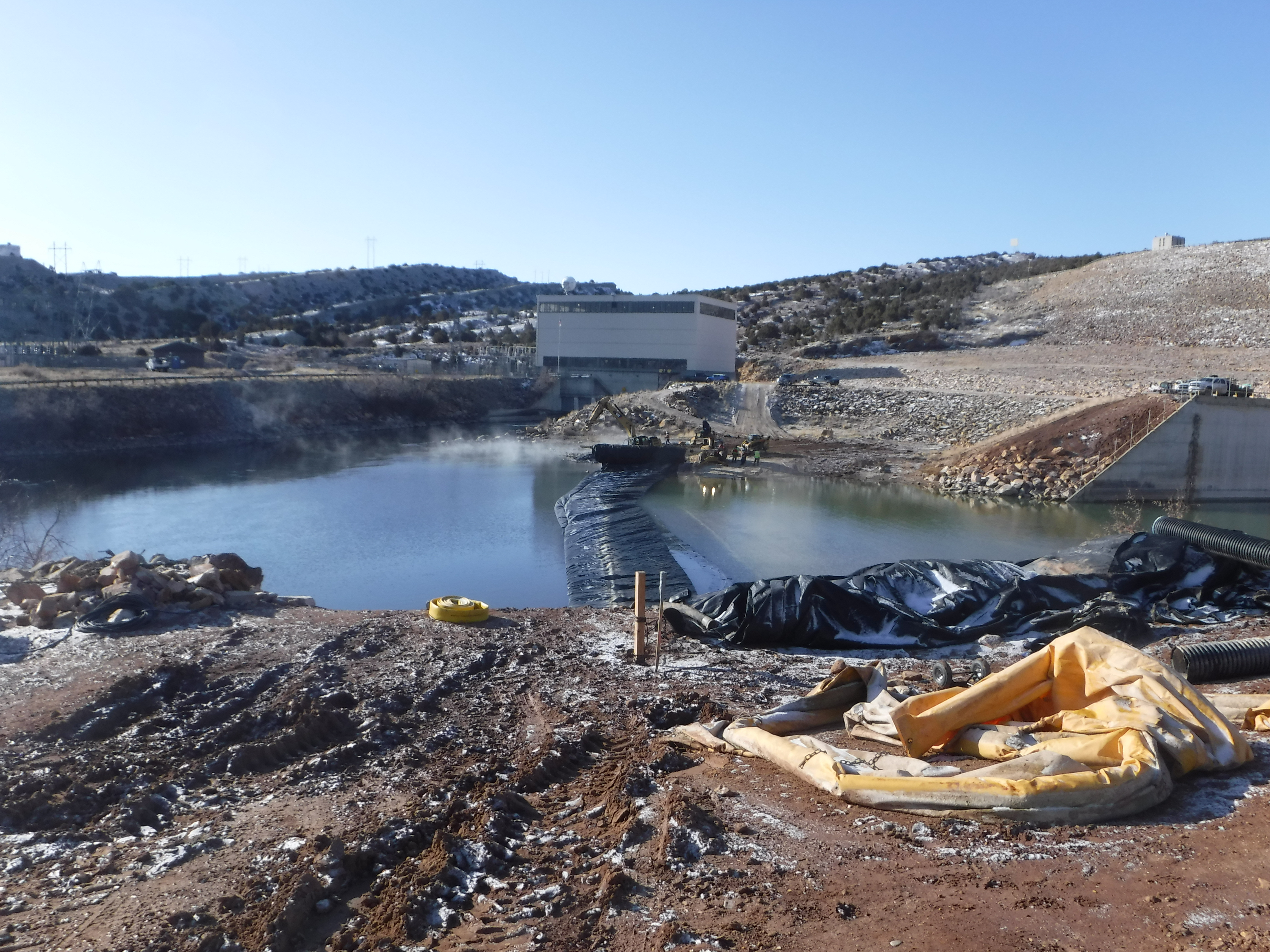
As the log and closed end are re-rolled at the ending bank, the open-end is pulled across the body of water releasing most of the water that may be left inside.
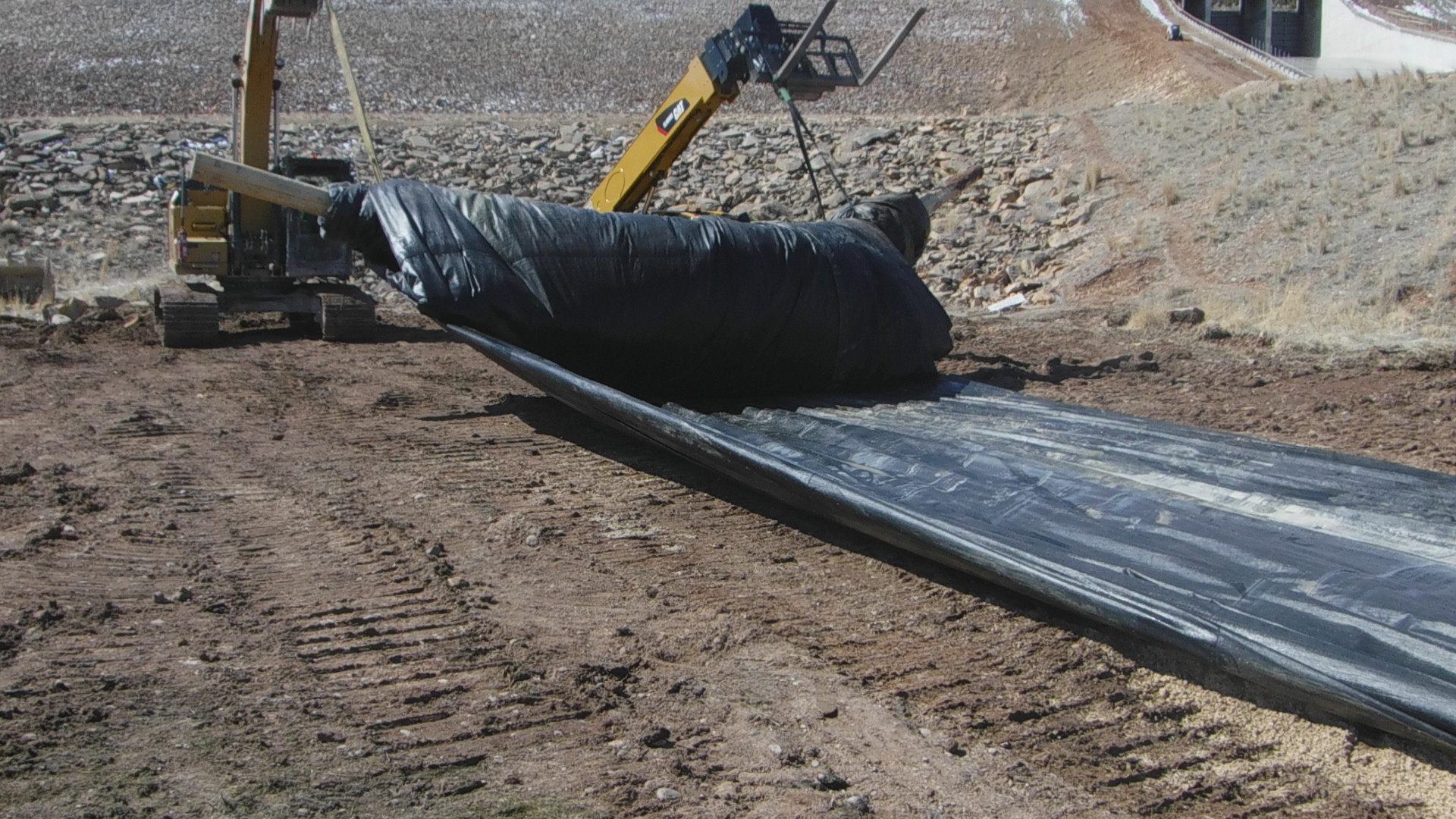
The log was broken during the removal process, this does not stop the removal process.
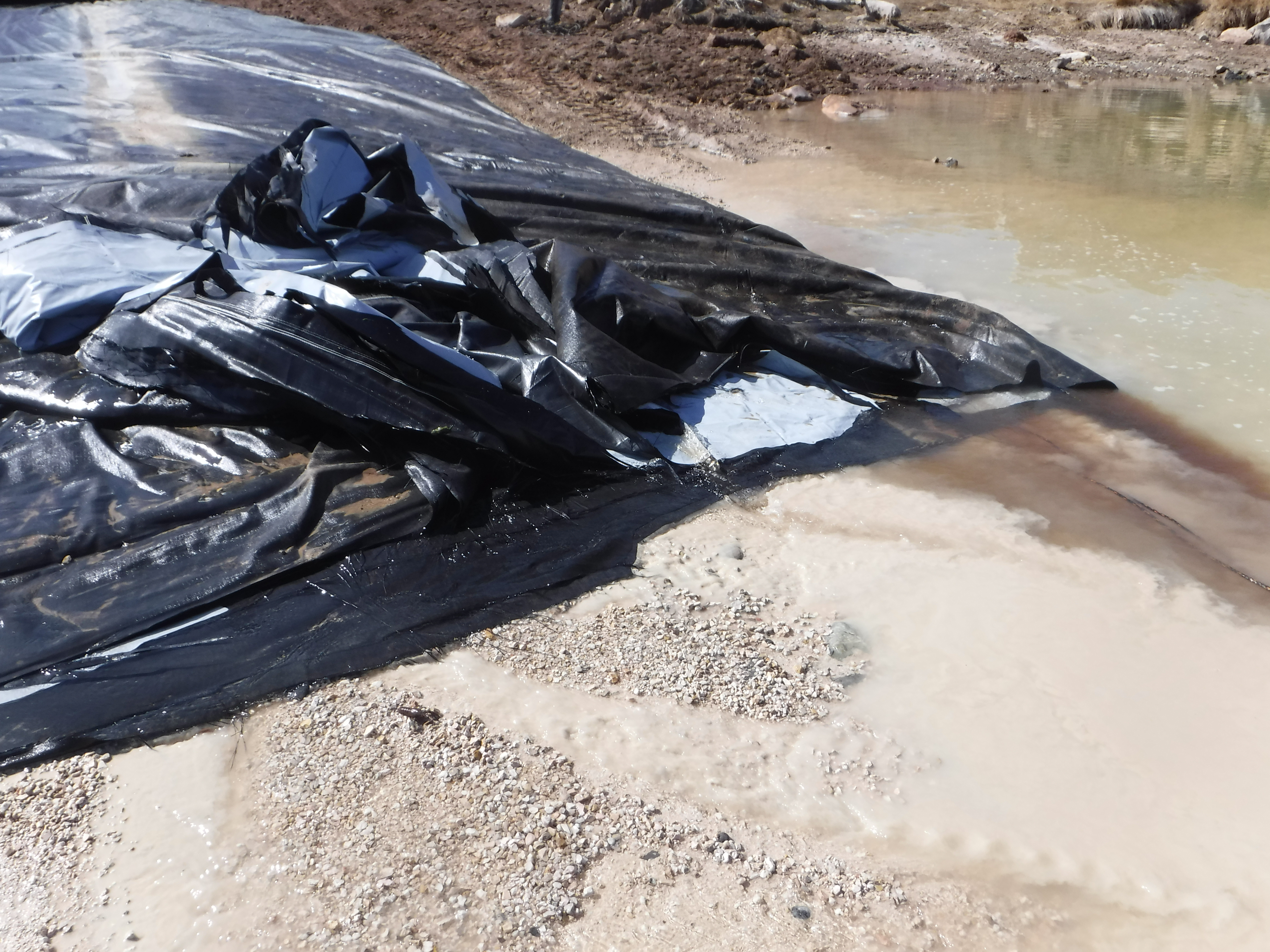
It is important to take the time to let the SCE AquaDam drain out of its open end to remove as much water as possible when removing it.
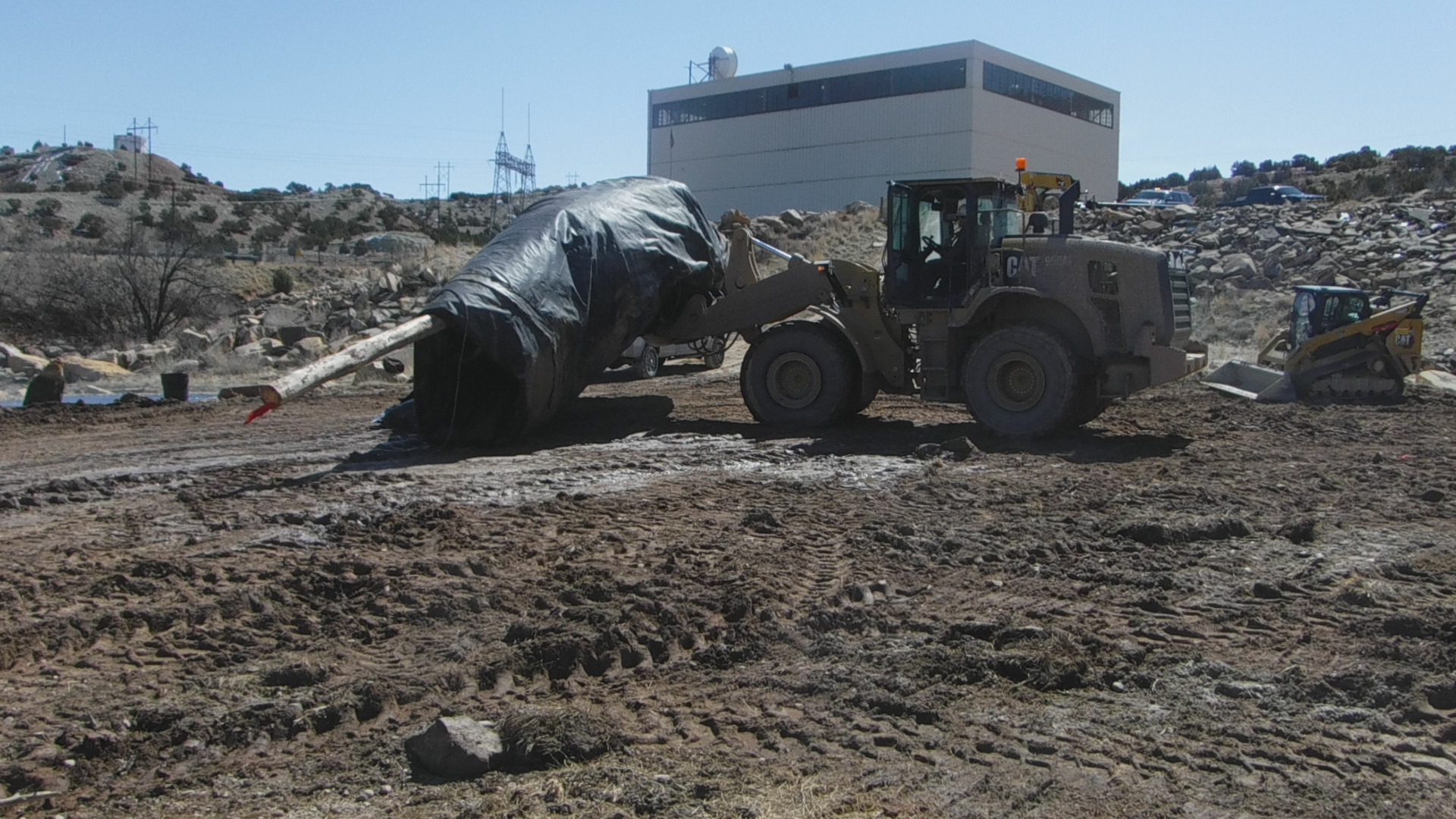
The 12ft tall SCE AquaDam has been removed from the North Platte River.
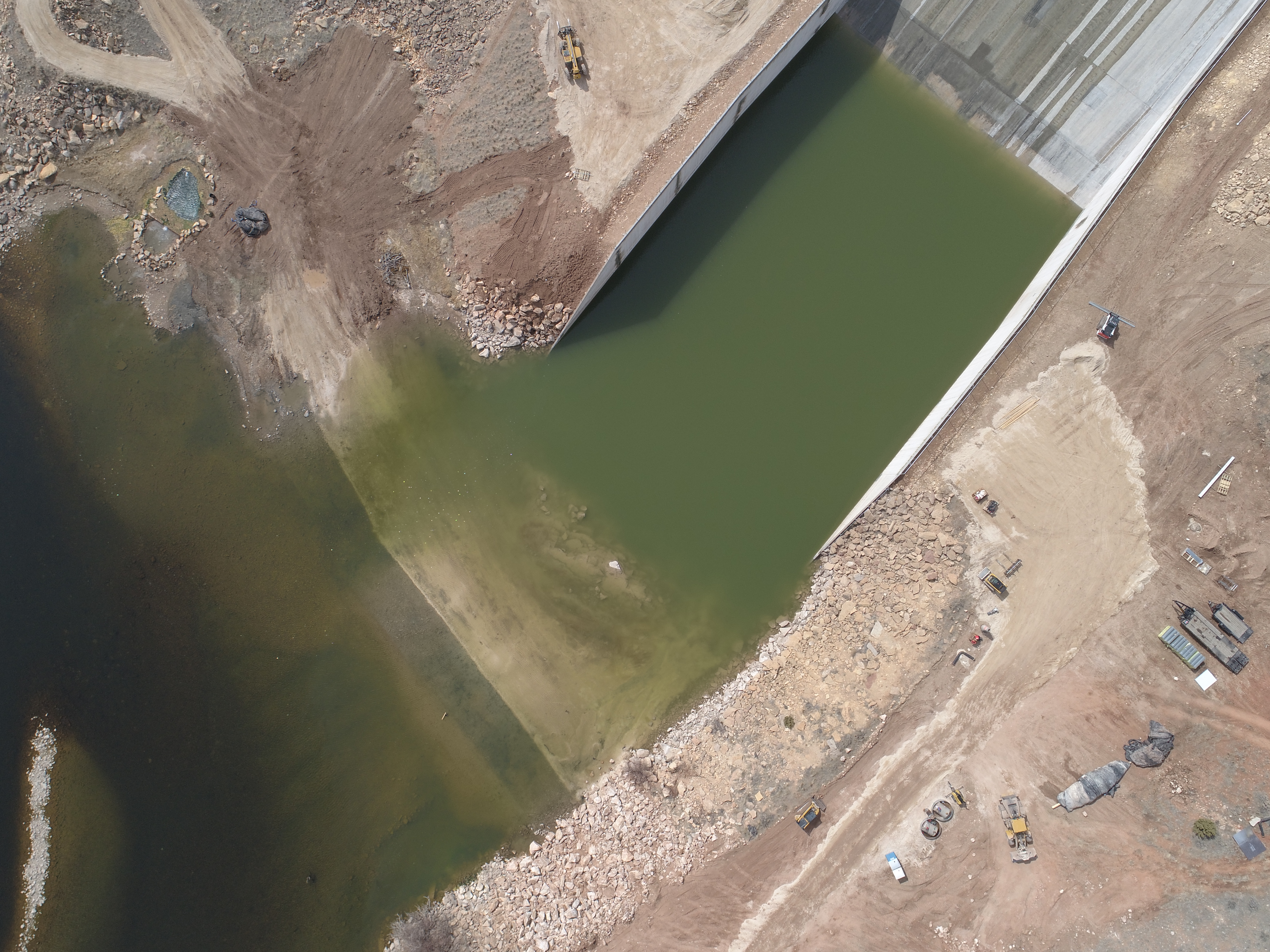
Aerial photo of the AquaDam cofferdam system dated: March 25, 2021. Notice that the AquaDams have been re-rolled and are setting up near the starting bank, bottom right corner of photo.
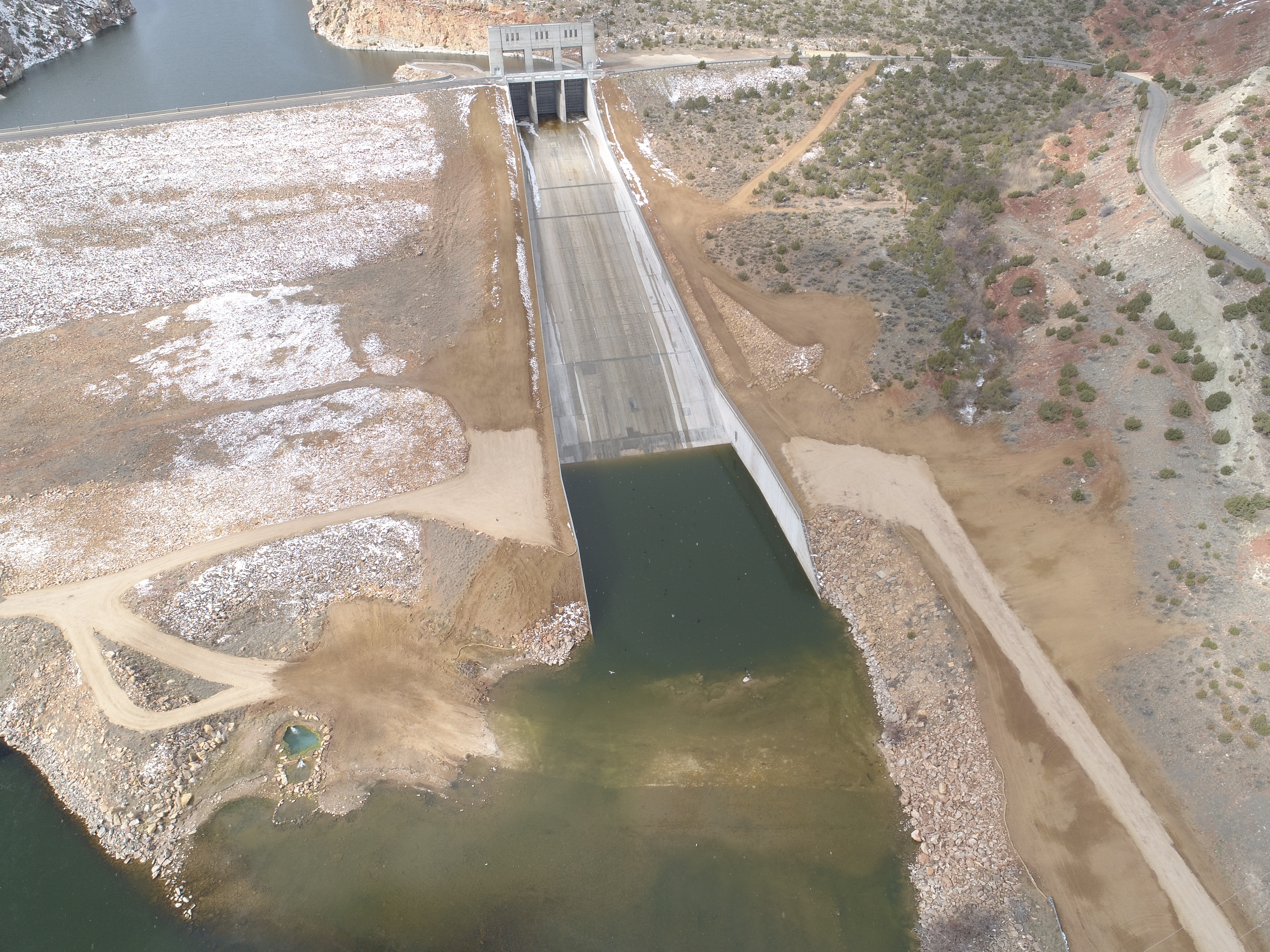
Aerial photo of the AquaDam cofferdam system dated: April 17, 2021. The overflow has been repaired and the work site cleaned up. Great job!
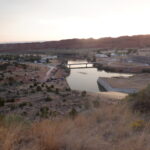
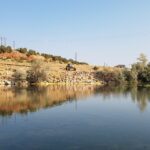
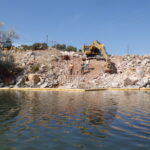
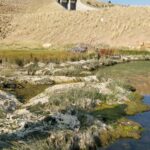
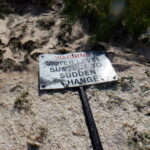
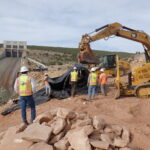
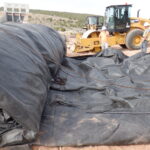
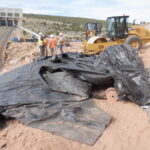
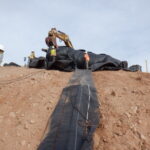
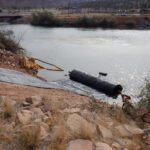
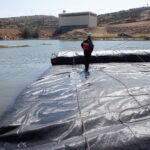
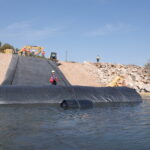
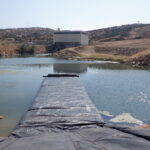
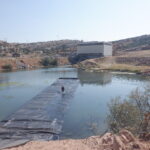
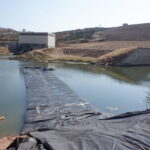
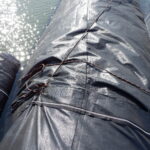
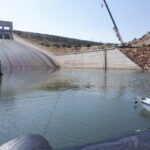
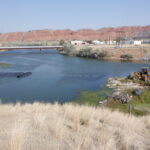
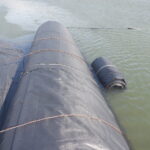
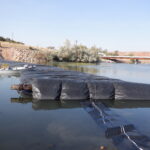
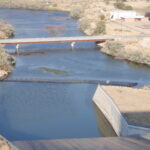
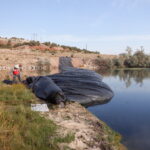
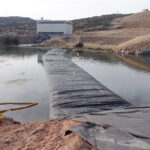
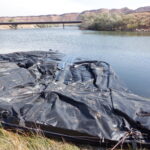
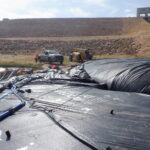
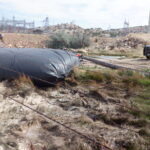
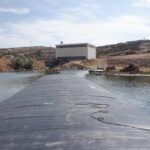
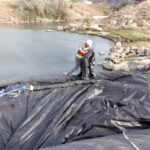
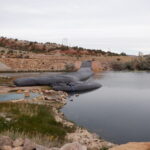
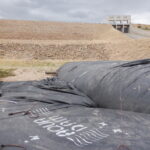
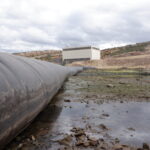
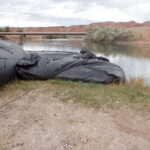
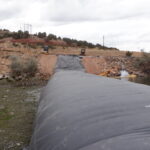
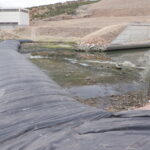
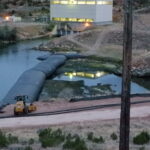
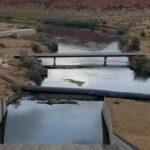
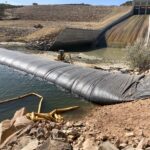
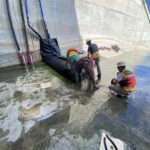
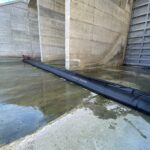
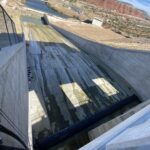
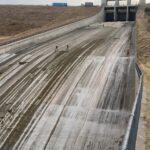
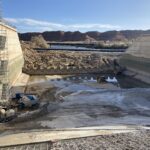
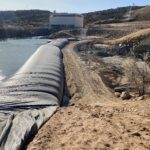
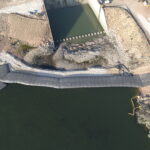
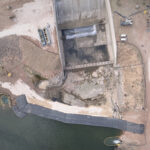
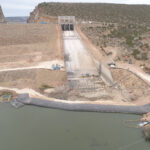
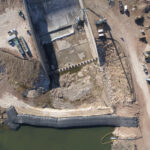
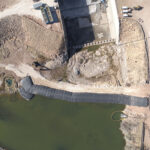
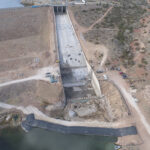
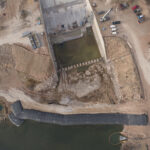
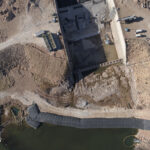
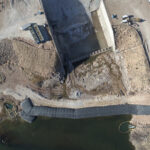
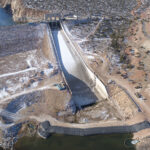
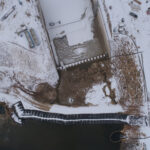
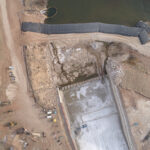
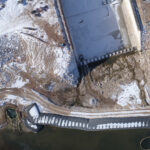
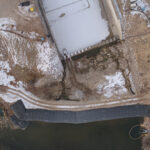
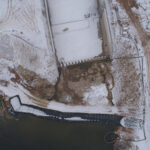
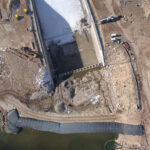
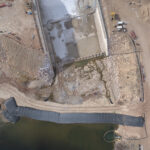
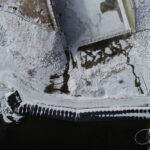
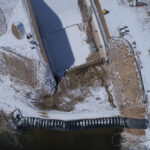
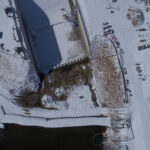
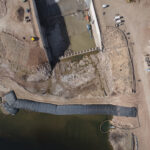
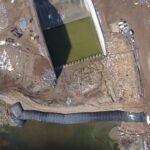
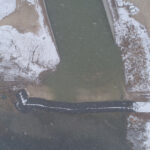
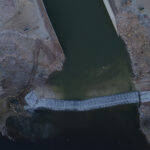
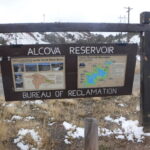
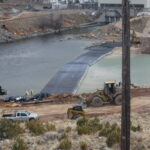
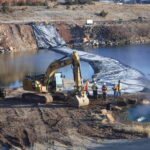
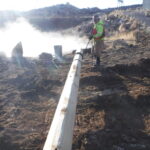
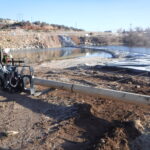
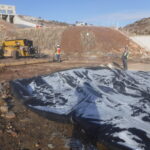
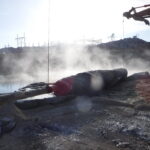
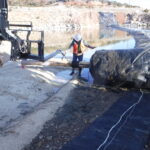
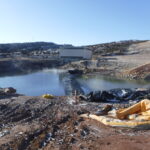
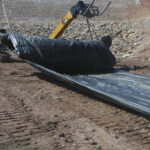
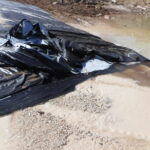
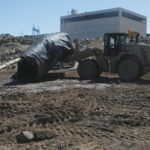
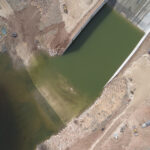
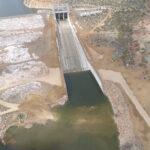
A 12ft tall 25ft wide (full) 400ft long Single Closed End (SEC) AquaDam, Horseshoe/“U” shape Configuration, Alcova Reservoir, Alcova Dam Overflow Repair, North Platte River, Installation & Removal.
